

How to Attract and Treat Luxury Travelers with Marketing
Table of Contents
What is Luxury Travel?
Who Are the New Luxury Travelers?
Transformative Travel: What do Luxury Travelers Want?
Luxury Hotel Brands Must-Have Services
Excellent Customer Service
Authentic Experience
Personalized Journey
Conscious Travel
Marketing Tips to Attract the New Luxury Travelers
Persuasive Language
Strong Imagery
Technological Assistance

1. What is Luxury Travel?
Exclusive and one-of-a-kind experiences, as well as highly individualized services, are linked with luxury travel.
High-end guests typically choose the destination first, followed by the on-site amenities, preferably exclusive boutique hotels, then international hotels.
Some people may define luxury travel as booking a 5-star hotel. For some, it can entail going on a luxurious, once-in-a-lifetime vacation.
Yet for others, it can just mean being able to unwind while on vacation without worrying about the daily grind.
In the end, a luxury traveler's primary distinguishing trait is their preference for premium, individualized experiences and services.
Luxury visitors tend to be picky when it comes to the caliber and exclusivity of the experiences and services they expect to enjoy.
2. Who Are the New Luxury Travelers?
The days of conventional luxury travel are passing due to the advancement of modern technologies and the emergence of more flexible travel options.
The ideal vacation experience is changing in the eyes of contemporary luxury travelers.
The days of flaunting wealth and glitz are passing.
As a result, the way in which companies develop their digital marketing to attract them should also adapt and change .
One explanation is that the market for wealthy people is shifting.
Because there is more money available to spend in the modern world than ever before, more individuals than ever can afford to take extravagant vacations.
At the same time, premium travel companies have been lowering the cost of taking upscale vacations.
Due to the rise in the number of wealthy people (who can now afford the expenses of such trips), luxury brands have expanded their target markets, aiming to boost sales .
Because of this, it's essential for luxury hotel brands to stay current with developments impacting on the tourism marketing sector.
Download your free digital marketing checklists and start validating your marketing like a pro.
A. transformative travel: what do luxury travelers want.
Luxury tourists have more complex travel goals than casual visitors, who mostly seek to enjoy warm beaches and some popular tourist destinations.
Both demand distinct marketing techniques when developing the strategies and approach to target them in a plan.
Although they serve a distinct target demographic, hotels that host wealthy tourists use similar marketing metrics to gauge their success .
Recent years have seen a surge in new locations, unusual activities, and other adventures to provide a high-end experience. This is due to the growth of the luxury travel business.
However, for many luxury travelers , this is insufficient. Nowadays, vacationers are looking for more than just an expensive trip filled with glitz.
Instead, more and more of them want to experience new adventures while finding personal fulfillment.
High-end consumers are gradually moving away from the conventional definition of luxury, which emphasizes reveling in opulent surroundings and flaunting status.
Modern luxury travelers look for one-of-a-kind experiences that gratify particular desires.
According to Skift research , the biggest priority for luxury travelers is to have experiences that change their view of the world.
Furthermore, Skift states that personal fulfillment is the new ultimate luxury . This means having lasting impressions from personal experiences is the new trend in luxury hospitality.
Less emphasis is placed on visiting particular locations and more emphasis is placed on reaching personal goals.
Another trend is that many luxury travelers want to make a difference in the world, thus they wish to cut back on their extravagant lifestyles and instead give to their communities.
This shift is related to conscious travel because it's currently popular to travel to new locations in an environmentally beneficial manner.
The luxury traveler of today has new desires, and hotels and other luxury hospitality businesses need to address them accordingly, otherwise a competitor will .
3. Luxury Hotel Brands Must-Have Services

a. Excellent Customer Service
In the high-end hospitality sector, customers still favor in-person interactions when making purchases.
As an example, in 2016, the majority of business transactions over $2000 were conducted offline .
The industry of hospitality is focused on developing trust with its customers, which is why this is the case.
Therefore, the greatest approach to establish a true connection with the customer is through personal interaction.
When talking with a new client, answering customers' questions in real-time is crucial to connecting with them.
Additionally, luxury customers prefer having a pleasant experience with customer service.
That entails thoroughly responding to all of their inquiries and treating their problems with the utmost care.
In order to better connect with the expanding Generation Z, luxury hotel brands must be accessible through all marketing channels, such as social media platforms like Facebook Messenger and WhatsApp .
An artificial intelligence system can operate some marketing communication channels automatically, such as website chat features. However, to guarantee the best level of service, it is more appropriate to have a person in charge of the communications with potential consumers.
b. Authentic Experience
Within the elite tourist community of today, this practice is becoming more and more common. When visiting a new location, upscale clients value having a local experience .
People want to integrate themselves into the culture they are visiting. Booking opulent five-star hotels is becoming less popular than choosing local accommodations with a more intimate feel.
Being genuine also involves being open and truthful with customers. Giving them a peek behind the scenes is one way to achieve this.
For example, providing them with a little background on a certain location or demonstrating how a particular process is carried out will undoubtedly educate and produce a distinctive experience.
Another excellent tactic to show that there are no secret elements in the experience is to honestly respond to questions from visitors.
c. Personalized Journey
In terms of their travel preferences, contemporary luxury travelers are more sophisticated.
They look for experiences that are compatible with their personalities and values.
Customers who purchase luxury goods want the freedom to design their own experiences.
High-end visitors seek adventures they can totally manage in order to escape their daily routines.
The major objective is to provide a seamless experience for the customer. By reducing any potential annoyances during the special event, the premium service will provide the ideal memorable experience.
The crucial phrase here is "personal fulfillment," since luxury vacationers hope to advance their own personal development.
These distinctive journeys aid tourists in standing out from the crowd. They desire access to things like space travel and zero gravity experiences that aren't available to the general population .
In the end, it is less important to flaunt your wealth and more important to learn something new or have an unforgettable experience.
The customization options expanded greatly after online technology was incorporated.
Luxury hotel marketing companies, for instance, have the ability to customize the look and feel of advertisements and email content.
d. Conscious Travel
As travelers are becoming increasingly more conscious about global issues, they are becoming aware of the consequences of their actions.
Also called guilt-free luxury, high-end consumers engage in environmentally friendly behavior, and as a result, they choose products or services that have a positive impact on the world.
Regarding accommodations, luxury travelers prefer to stay in hotel brands that give something back to the community surrounding them.
In a sense, unlike traditional luxury travel, this new trend of conscientious travel no longer excludes a certain group of people.
To promote this new sustainable effort, hospitality businesses should collaborate with luxury hospitality marketing companies.
This will draw in high-end customers and the interest of locals who might work with the hotel brands.
4. Marketing Tips to Attract the New Luxury Travelers
It would be a mistake for a luxury hotel brand to use the same marketing strategy to draw in both luxury and budget tourists. Each target population requires a unique marketing strategy that is designed on their expectations.
Luxury travelers: Key characteristics to pay attention
A. persuasive language.
In luxury tourism marketing, it is widespread knowledge that it is often more important to know how you sell than what you sell .
The most influential factor that should be included in luxury copywriting is emotions.
As mentioned before, luxury travelers don’t have high concerns about the price or utility of products.
Luxury travelers are mainly concerned with the emotional value that these experiences can produce .
The copywriting expert, Eugene Schwartz, explained that the main goal of all copy should be to intensify the desires of people.
This causes a strong emotional response that triggers a purchase decision.
In the case of luxury travel, affluent customers have the desire to go on a unique adventure.
Therefore, it is the job of luxury hotel brands to capture that desire and use smart copywriting in their marketing plan to provoke a strong urge to jump on that memorable journey .
b. Strong Imagery
Similar to this, luxury hotel brands need to create top-notch marketing materials to draw in wealthy tourists .
Strong pictures should go together with the emotional connection that the correct copy creates.
Furthermore, compared to earlier generations, the luxury traveler of today is more aware of the world. Individuals are more conscious of global issues as a result of never-ending news cycles through modern technology.
Consequently, using visually appealing yet culturally educated imagery is the most appropriate choice .
c. Technological Assistance
Compared to typical travelers, luxury travelers favor a more convenient method of making travel arrangements.
Luxury travelers expect more individualized assistance and guidance during these processes, whereas the general public makes their own reservations for lodging, dining, vehicle rentals, etc.
By being accessible through various marketing communication channels, such as social media or video chats, hotels may assist clients in making decisions, which as a result will help brands to reduce the physical distance between them.
These technologies make it simple for travelers to access crucial information or to be informed of the following stages (e.g. calendar tools).
Due to the high level of human touch, seasoned luxury hotel brands use their understanding of clients to streamline subsequent interactions.
This information may include things like the preferred mode of transportation or dining establishment of the traveler.
Gathering a large amount of personal information allows luxury hotel brands to customize ads for specific individuals .
Finally, a customer relationship management (CRM) system will make it simpler to provide visitors with more focused cross-selling and up-selling opportunities.
It is important for luxury hotel brands to recognize that luxury travelers want to experience adventures that they cannot find anywhere else.
This focus has shifted from a materialistic perspective to an experiential one.
As a result, modern luxury travelers want to gain new insights about the world and themselves from their unique journeys.
- Hospitality Marketing
Recent Posts
5 Effective Hotel Marketing Strategies for Each Stage of the Marketing Funnel
Digital Marketing Strategies for Hotels: How to Attract your Audience?
Hospitality Marketing: The Top 10 Hotel KPIs that Matter the Most
- Student Policies
- Canvas Login
- Careers Portal
- Alumni Benefits
- Career Services
Luxury Marketing: A Deep Dive into High-End Branding
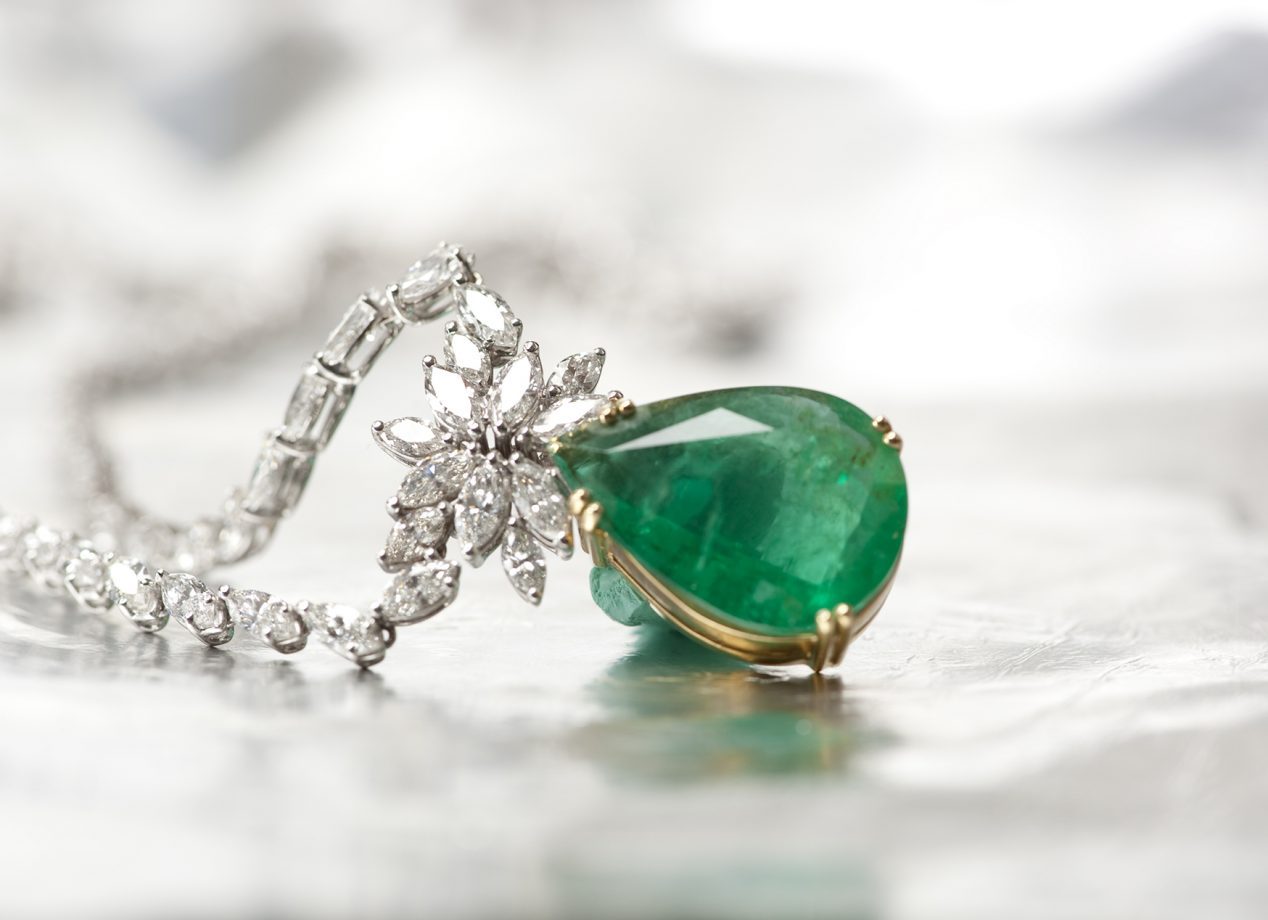
In a world where many people value exclusivity, quality, and status, luxury brands have carved out a unique niche for themselves. From designer fashion and jewelry to fine dining and travel, luxury brands are at the cutting edge of innovation and style. This innovation and style is often reflected in the content and strategies that luxury marketers employ. But how do luxury brands captivate their audience and maintain their desirability? In this article, we'll delve into the world of luxury marketing and explore the strategies brands use to elevate their image.
What Exactly Are Luxury Brands?
Luxury brands are those that offer products or services associated with rarity, excellence, and high prices. They are often seen as status symbols and are popular among high-net-worth individuals (HNWI) and aspirational consumers. Luxury brands operate in markets such as designer fashion, jewelry, cars, hotels, events, cuisine, cosmetics, and travel.
As consumer preferences shift and new generations enter the market, luxury marketers must seek out fresh and creative ways to engage their audience.
What is luxury brand marketing.
Luxury marketing differs from marketing for regular brands in several key aspects. The strategies used to promote luxury goods and services cater to a unique set of consumer expectations and desires.
Some of the main differences include:
Target audience
Luxury brands target high-net-worth individuals (HNWI) and aspirational consumers who are willing to pay a premium to own exclusive, high-quality products. These consumers are by nature hard to find, so data-driven approaches help identify and entice them by speaking to their aspirations and values.
This can change from generation to generation. In recent years, for example, luxury brands have also focused on appealing to millennials and Gen Z, who tend to value experiences over material possessions. According to an Eventbrite report , more than 3 in 4 millennials would choose to spend money on an experience rather than buying a product.
Globally, 56% of millennials and Gen Z say that “prioritizing experiences over material possessions is important to their personal life” ( Kantar ). This of course presents a challenge to luxury goods manufacturers, who need to innovate with new services (such as repair services), experiential marketing, and intangible goods like NFTs.
Exclusivity and scarcity
Luxury brands must create a sense of exclusivity to attract their target audience. Strategies may include offering limited edition products or restricting availability, hosting exclusive events, or providing personalized services.
Prioritizing brand image and credibility
Maintaining a strong brand image and reputation is crucial for luxury brands to justify their high prices. This requires careful management and positioning of various brand touchpoints, like advertising, product design, customer service, and online presence. Luxury brands often have a well-defined identity that resonates with their target audience and sets them apart.
High prices
Sometimes pricing itself can be a marketing tactic. Luxury brands leverage their high prices to create a prestigious image. This appeals to customers, who are more inclined to pay a premium for the bragging rights that come with scarcity. This strategy comes with risks, as affluent consumers can be price sensitive too.
Celebrity collaborations and endorsements
Working with celebrities and influencers enables luxury brands to promote their products and enhance desirability. “Partnerships and endorsements have always been critical to enhancing and bringing to life specific brand traits,” says Dr. Federica Carlotto, Program Director of MA Luxury Business at Sotheby’s Institute of Art. “However, the increased number of marketing media channels has made the management of celebrity endorsement more complicated, as brands need to confront consumers with testimonials across a variety of marketing formats — consider for example the recent Met Gala.”
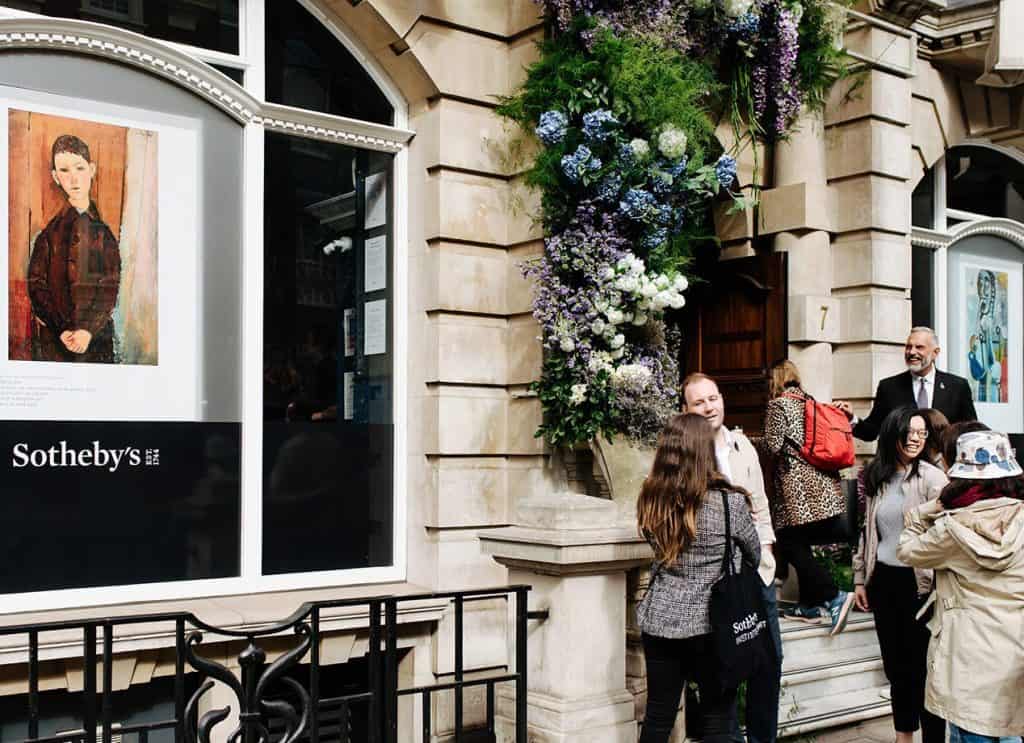
Advance your career with a certificate or degree in Luxury Business. Learn more about our online course, Jewelry, History and Markets , and our Master’s Program in London .
What Are the 4 E's of Luxury Marketing?
The 4 E's of luxury marketing are a framework created by luxury marketing expert Michel Chevalier. It provides a guideline for luxury brands to create effective marketing strategies that appeal to their target audience.
- Luxury brands should captivate customers' emotions to create desire and aspiration. This can be achieved through storytelling or aligning with customers' values and beliefs.
- To create a sense of exclusivity , luxury brands can make customers feel unique and important by offering limited edition products, personalized services, or hosting invite-only events.
- By delivering memorable experiences , luxury brands can offer value beyond their products or services. Tactics may include immersive retail environments, tailor-made offerings, or experiential events.
- The extension of brand values and image beyond products and services is essential for luxury brands. Strategies may include collaborations with other prestigious brands or creating content that mirrors the brand's values and associated lifestyle.
How Do I Get Into Luxury Brand Marketing?
If you're interested in pursuing a career in luxury brand marketing, there are a handful of crucial ways to stand out in this highly competitive industry:
Firstly, Develop Your Industry Knowledge
Having deep industry knowledge is essential for breaking into the competitive world of luxury brands. Your knowledge will not only set a strong foundation for success, but will also enable you to anticipate market trends, create innovative campaigns, and cater to your brand’s customers.
According to Dr. Carlotto, a great starting point is to learn about successful luxury marketing campaigns and partnerships. “This will provide you with ideas that can be tailored in other settings. At the same time, get familiar with the big marketing players and influencers in the industry,” she says.
She also recommends familiarizing yourself with different marketing channels as professional tools, especially social media and video communications tools. It is invaluable to have an understanding of these tools and their functions, specific visual and textual language, and performance metrics.
If there’s a specific brand you would like to work for, take a deep dive into that brand’s market. Dr. Carlotto emphasizes that the “market” is not just the brand’s customers, but also the ecosystem of audiences and the communities in which the brand is inserted. Taking a holistic view is vital as public scrutiny of brands’ corporate behavior continues to increase.
Tip 2: Create a Robust Portfolio
Pursue projects for your portfolio that showcase your marketing experience and skills. This is a crucial step, as it displays your talents and strengths in a tangible format for potential employers. Your portfolio can include examples from internships, freelance work, or personal projects.
Emphasize your relevant roles, responsibilities, and accomplishments. It's valuable for employers to see your contribution to marketing campaigns, brand growth, or sales. If you don't have direct work experience, you can instead showcase personal projects. This could include marketing strategies for hypothetical luxury brands. For those specializing in content creation, include samples such as ad designs, social media content, or copywriting to display your skills.
Tip 3: Network and Attend Industry Events
Establishing connections with industry professionals and attending relevant events are both great ways to advance your career in luxury marketing. You can engage with professionals on LinkedIn and join professional organizations to expand your network. Also consider finding a mentor, as they are invaluable once you begin pursuing marketing positions.
Conferences are also a great opportunity to make connections and learn more about the industry. Many top-tier publications have marketing conferences, like the Financial Times Business of Luxury Summit .
Tip 4: Earn a Degree or Certification
Although not required to work in the industry, getting a degree or certification in luxury marketing can help you fast track your career. A luxury marketing program can provide you with specialized knowledge and help you develop your expertise as a marketer. Many programs emphasize hands-on experiences and real-world scenarios to better prepare students for success in their careers. These programs also present valuable networking opportunities, connecting you with industry professionals, faculty members, and alumni who can provide insights and job opportunities.
Many institutions offer specialized programs, like Sotheby's Institute of Art , which offers online courses and a master’s program in Luxury Business.
Luxury brand marketing is an evolving field, where brands must innovate and adapt to maintain their value. As consumer preferences shift and new generations enter the market, luxury marketers must seek out fresh and creative ways to engage their audience. As the world of luxury brands continues to evolve, there will always be a need for skilled and innovative marketers to help brands thrive.
The magazine of Glion Institute of Higher Education
- Master tourism marketing: strategies for a thriving business
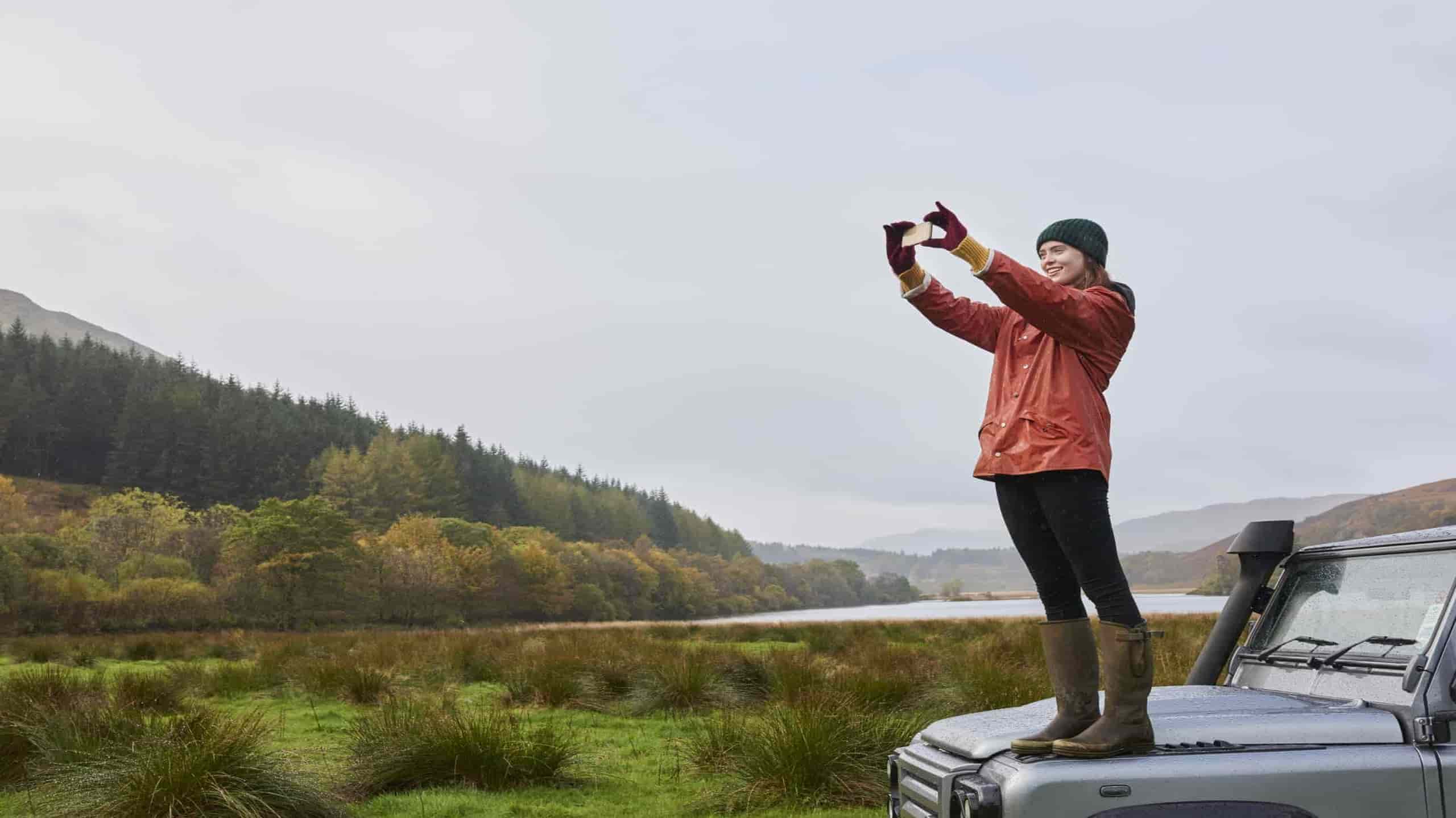
In an age where the tourism industry is constantly evolving, staying ahead of the competition and effectively marketing your tourism business has never been more crucial. Whether you’re a seasoned professional or just starting out in the field, this comprehensive guide is your passport to success. We’ll look at innovative marketing strategies tailored specifically for the tourism and hospitality industry , equipping you with the knowledge and tools to thrive in this dynamic and competitive field.
Introduction to tourism marketing strategies
Tourism marketing is aimed at potential customers from all over the world. To stand out in a crowded market, innovative strategies are crucial. Here’s what comprises effective tourism marketing:
- Understanding your audience : Tailor your approach to a range of demographics, connecting with them personally based on their preferences and interests.
- Developing a unique brand identity: Create a distinctive visual and narrative identity that encapsulates your organization’s values and essence.
- Creating engaging content: Go beyond static images, embracing blog posts, real-time social media updates, and vlogs to captivate prospects and entice them to visit.
Learn marketing with the best
Study with professionals at the top of their game who can share their expertise and provide the ideal start for a career that makes an impact in tourism.

Understanding your target audience
Effective tourism marketing begins with a deep understanding of your target audience. To attract and engage potential visitors, it’s vital to recognize their preferences and interests. Some are attracted to cultural heritage, while others seek vibrant nightlife or culinary experiences.
To understand a range of demographics, conduct thorough consumer research to identify patterns among prospective travelers, using data from customer surveys, travel agents, and online feedback. Build detailed personas to profile typical tourists who visit or may use your travel business. These personas become the foundation for shaping campaigns.
Key considerations:
- Focus on what tourists find attractive, not what you think they find attractive
- Rely on market research and verifiable data sources for insights
- Knowing customers’ wants and needs is vital for effectively tailored campaigns
- Stay adaptable to evolving visitor behavior and trends for sustainable growth
Understanding your audience and staying attuned to changing preferences are central to destination marketing, ensuring your efforts generate maximum impact.
Developing a unique brand identity
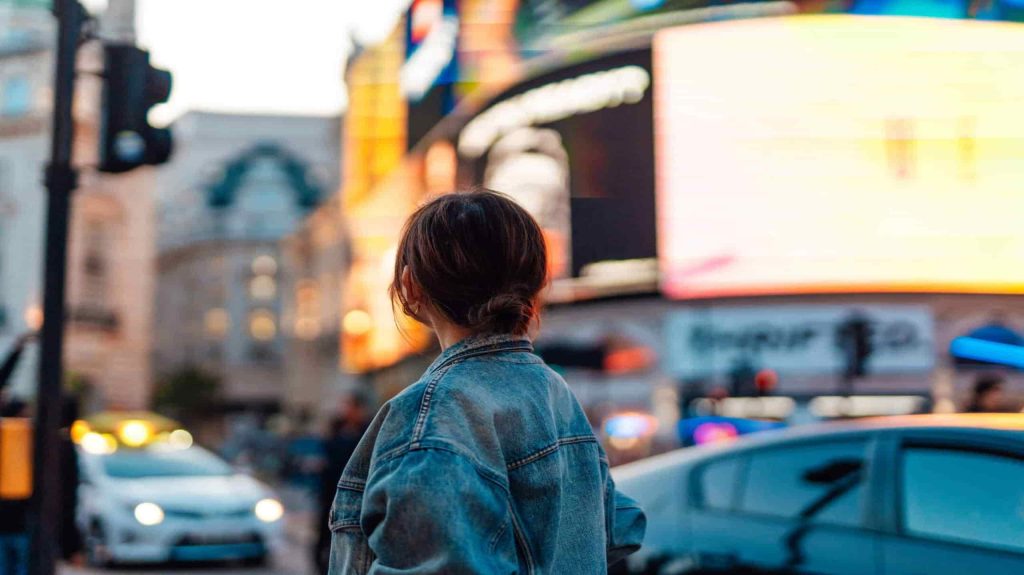
Oscar Wong/Moment Getty Images
Developing a distinctive brand identity is vital. As you deepen your understanding of what marketing is in tourism, you will realize how important it is for your destination or attraction to have its own niche.
Uniqueness: make your destination stand out
Think about the irresistible attractions your destination offers. Perhaps it’s culturally rich heritage steeped in history or maybe it’s rainforest and its wildlife. When you’re embarking on promoting travel to your location, make sure these distinguishing features are highlighted by using them as hooks in your tourism marketing strategies. The idea is to conjure up an image so potent that travelers instantly recognize it.
Relevance: aligning factors that attract tourists
One area where many falter is not aligning their offerings with market demands. Even if you can offer Northern Lights viewing spots in Norway, this won’t resonate with tourists if it doesn’t address their specific needs and interests. This is where consumer research in tourism comes in handy.
Consistency: keeping the promise
Once you’ve developed your unique brand identity and aligned it with what attracts tourists, make sure all marketing touchpoints — digital or offline — feature consistent messaging. Of course, varying content types necessitate a tweak in style, but the core substance should remain stable across all platforms.
Leveraging local listings
Local listings, like Google My Business and Tripadvisor, are vital for tourism marketing. They provide essential information and reviews to travelers. To maximize their potential:
- Claim your business listing on popular platforms
- Ensure consistent data across all platforms
- Encourage customer reviews and respond promptly
- Continuously analyze visitor feedback for optimization
Utilizing these platforms builds legitimacy and trust, as online reviews can play a significant role in travelers’ decision-making.
Creating compelling content
Engaging content is a powerful strategy in tourism marketing. It resonates with emotions, tells captivating stories, and showcases your destination creatively. Here are three ways engaging content can enhance your strategies:
- Storytelling: Share local legends and anecdotes to add depth to your destination’s persona, appealing to tourists’ emotions and curiosity.
- Visual content: Use high-quality images and enticing descriptions to showcase your destination’s attractions, and stimulate the interest of potential tourists.
- Interactive content: Offer virtual tours or quizzes to engage audiences at an experiential level, increasing their curiosity and perception of your destination.
Authenticity is essential in content creation, as it builds credibility in tourism marketing.
Engaging with social media platforms
In today’s digital world, social media is essential in tourism marketing. Different platforms cater to various demographics and interests, so you need to carefully tailor your social media posts to your target markets on each channel. Here are some key points to consider:
- Tailored content: Create content suitable for each platform, such as stunning images on Instagram and engaging travel stories on X (Twitter).
- Two-way interaction: Respond promptly to reviews and comments on social media, building loyalty among customers. You can also encourage user-generated content about your business, nearby tourist attractions, or about the customer service they experienced.
- Influencer collaboration: Partner with social media influencers to promote your destination to their followers.
- Hashtag movements and contests : Participate in trending hashtag movements and initiate contests or games related to destinations to boost visibility and generate positive publicity.
By understanding the unique features and demographics of each social media platform, you can meet travelers where they spend time and enhance your tourism marketing strategies.
Paid social media advertising
Paid social media advertisements are also important for any modern tourism company. They can be targeted to deliver messages to specific demographics. To make the most of social media advertising, here are a few key considerations:
- Identify your key demographics – know who you want to reach.
- Set clear objectives – understand what return on investment looks like.
- Develop engaging ad creatives – images or videos that represent what is being marketed.
- Monitor results frequently – adjust where necessary.
Sending email newsletters
Among the various tourism marketing strategies, email has emerged as an enduring tactic. Don’t underestimate the efficacy of a well-crafted email newsletter, as it stands at the intersection of providing information and subtle promotion.
Here’s a peek into how you can engage prospective travelers through strategic email newsletters.
- Schedule regularly : Choose a frequency – weekly, bi-weekly, or monthly – that aligns with your offerings and can be consistent. This gives subscribers something to look forward to while keeping your brand on their minds.
- Personalize communications : To make each subscriber feel acknowledged, use advanced CRM tools for personalization and tailored offerings based on previous interactions or noted preferences.
- Showcase compelling stories : Emotionally charged narratives about real guest experiences can stir interest and spark the imagination.
- Promote upcoming attractions : Give dormant clients reasons to reactivate by featuring must-see events or unbeatable seasonal deals.
- Incorporate reviews and testimonials : Customer reviews paint a convincing picture of what awaits future tourists. Their first-hand accounts — featuring praise or constructive feedback — can often build trust more effectively than promotional text.
Displaying online banners
An effective strategy in mastering tourism marketing involves harnessing the power of online banners. Banner advertising, a form of digital outreach, helps create awareness about your destination and may catch a potential tourist’s eye.
Here’s how best to take advantage of this potent bit of marketing strategy in tourism:
- Design with purpose : Creating compelling banner designs requires an understanding of what attracts tourists. Your banners must effectively communicate the unique appeal of the location you’re promoting. Does it offer historical and cultural significance? Is its natural scenery superb, or does it provide high-end luxury experiences?
- Location, location, location : Destination tourism is all about presenting prospective visitors with an irresistible locale they’d love to explore. Online banners should be strategically displayed on websites that your target audience visits, such as travel blogs or holiday booking sites.
- Clear call-to-action (CTA) : The most successful online banners have a clear CTA that prompts visitors to learn more or make bookings. This simple yet assertive instruction can enhance user engagement and increase bookings substantially.
- Mobile-friendly designs : Given our world has become increasingly mobile-centric, ensuring your online banners are optimized for mobile viewing is non-negotiable. This will also help make sure your mobile websites or advertisements are seen in search engines.
Offline promotional activities
Online marketing is powerful, but don’t overlook offline strategies. Traditional tourism marketing methods remain effective for personal connections with your audience.
Explore event sponsorships and collaborations at local events to showcase your brand. Print materials like brochures and flyers provide valuable tourism information and visibility in target areas. Roadshows educate potential customers in various locations, stirring interest. Utilize television and radio ads for wide-reaching awareness.
Tailor these techniques to your unique business needs while maintaining consistency across online and offline platforms.
Contextual advertising and SEO
Contextual advertising leverages relevance to attract tourists effectively. By placing your ads within content that aligns with travelers’ interests, you capture their attention when their tourism curiosity is at its peak. This targeted approach can lead you to your ideal customer base.
Search engine optimization (SEO) helps people find you in a sea of competitors when they go searching for what you offer online. Honing your site’s SEO capabilities can increase the likelihood of appearing in search results, so potential tourists can move toward becoming actual visitors.
Using promotional videos
In the quest to implement effective tourism marketing strategies, don’t overlook promotional videos. This type of content can effectively portray what attracts tourists to a particular location, destination, or service.
The power of promoting travel through video
Visual storytelling is compelling and engaging by nature. It can transport viewers directly into your destination’s most appealing spots. When considering marketing attractions or marketing a destination, creating videos that convey what is unique about your tourist spot can significantly boost your campaign.
How videos enhance tourism marketing strategies
- Showcase scenic views: Highlight the incredible views from the highest peak or show underwater adventures featuring vibrant marine life. Let viewers feel as if they’re already on an extraordinary journey.
- Provide local insight: Film a local tour guide telling stories about a historic castle or local attraction that you won’t find easily in travel pamphlets.
- Highlight experiences: Use this chance to display exhilarating possibilities like zip lining over lush forests, relaxing at a secluded beach, or sampling delicacies at markets
Try and ensure the video depictions will match expectations when tourists arrive.
Make your mark in luxury marketing for tourism
Combining expert tuition and exclusive internships, this Master’s gives you access to leaders at the pinnacle of their profession with opportunities to network and build your career.
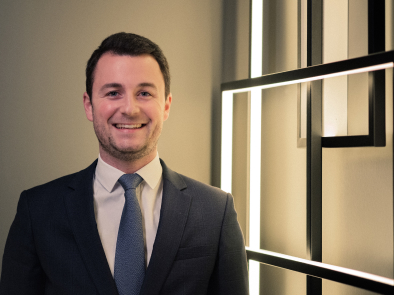
Key considerations
Successful application of promotional videos as part of tourism marketing strategies hinges on factors such as:
- Solid marketing plans
- Quality production
- Meaningful narratives that highlight customer experience
- Resonating with your ideal customers
- Optimization for viewing on different devices
- Keeping up to date with tourism marketing trends
Mastering tourism marketing strategies is instrumental in developing a tourism marketing plan. They are also instrumental for sustaining the growth of a destination tourism business and ensuring success in a tourism or hospitality career .
Social media platforms offer many opportunities for promoting travel adventures and facets of the tourism business, from sharing compelling imagery to sharing delightful experiences, or even connecting personally with potential patrons. Get started on the journey to becoming a tourism marketing professional with a hospitality degree from Glion. Or read more about the tourism and hospitality industry in the new normal .
Photo Credit
Main Image: Plume Creative / DigitalVision via Getty Images
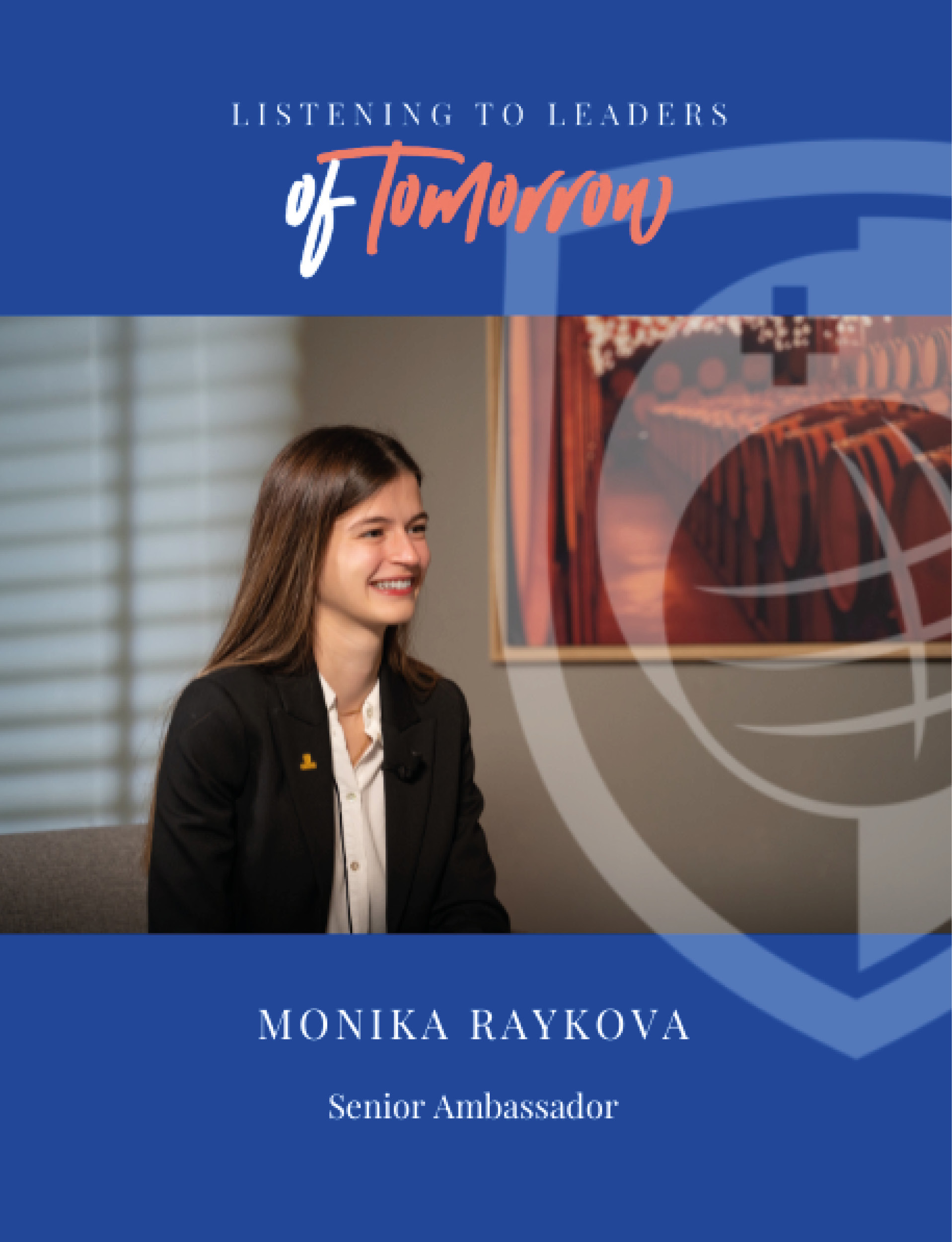
LISTENING TO LEADERS
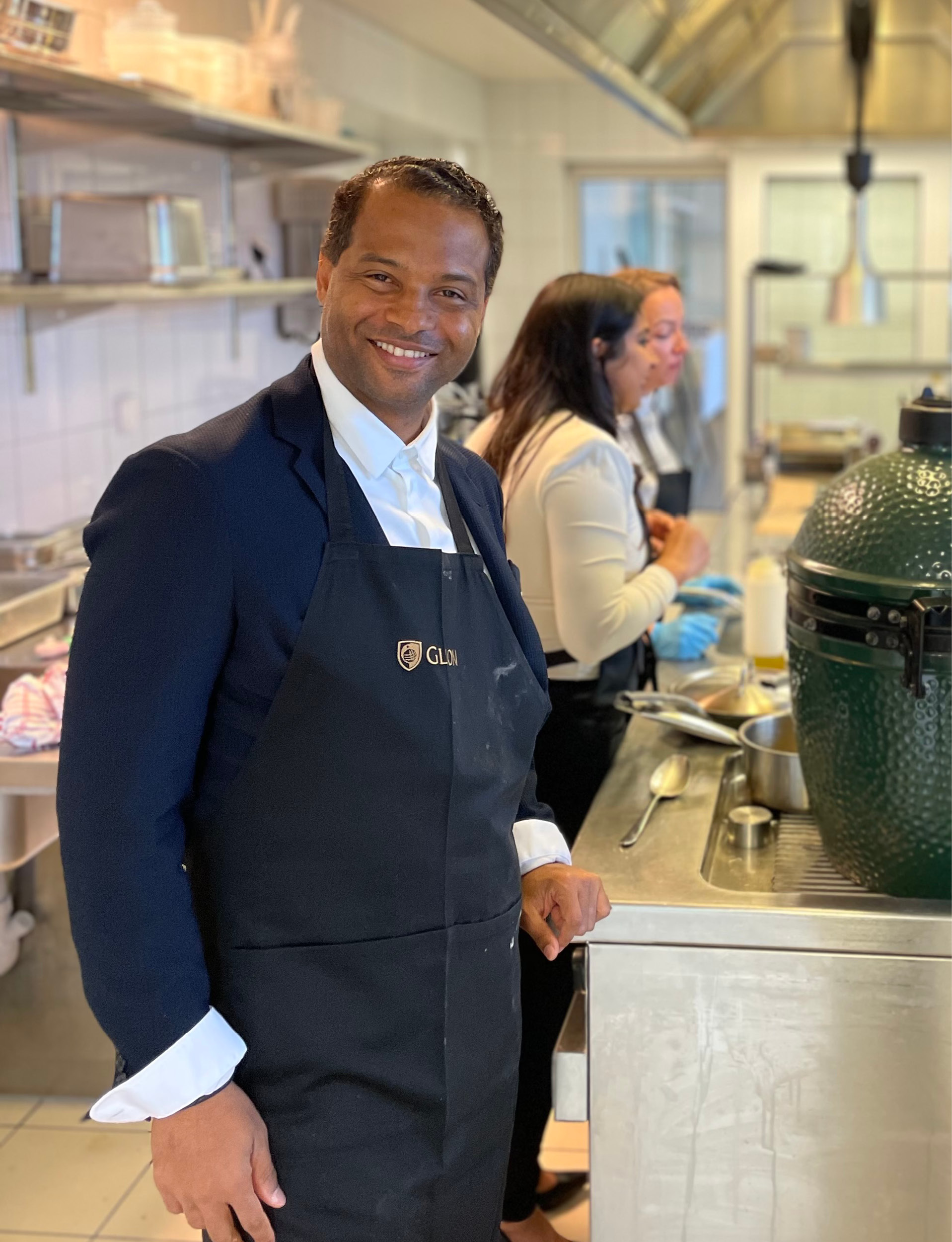
BUSINESS OF LUXURY
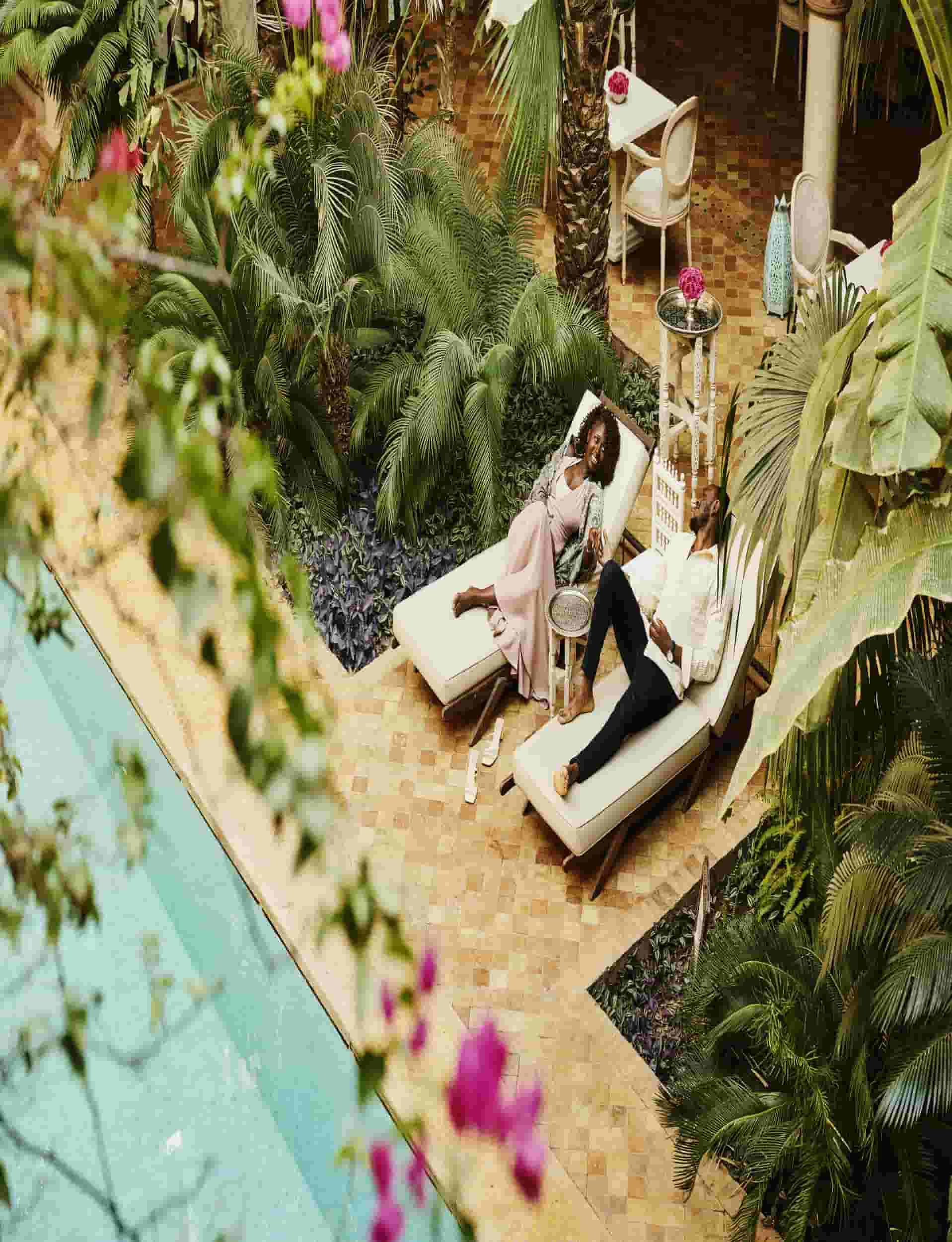
HOSPITALITY UNCOVERED
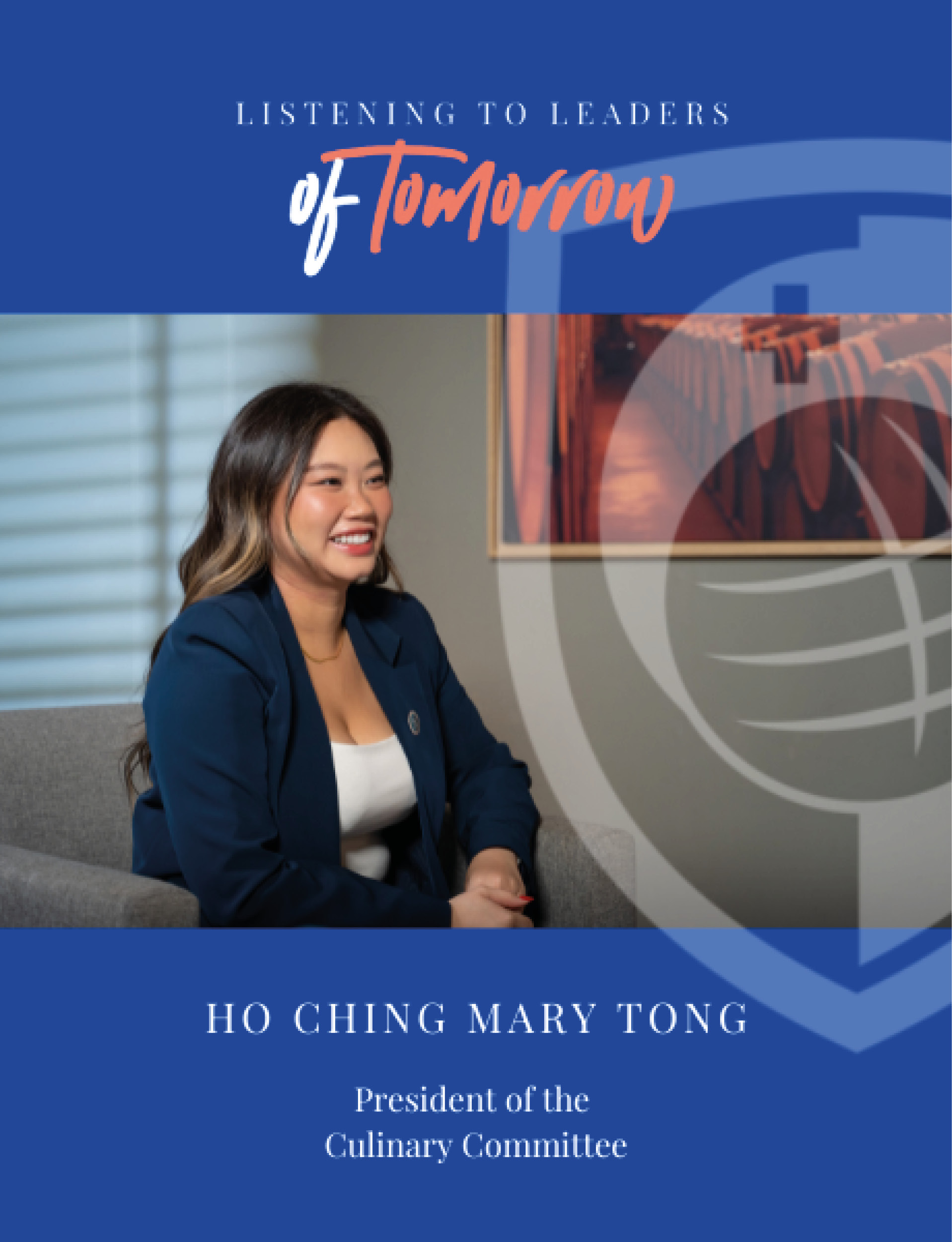
GLION SPIRIT
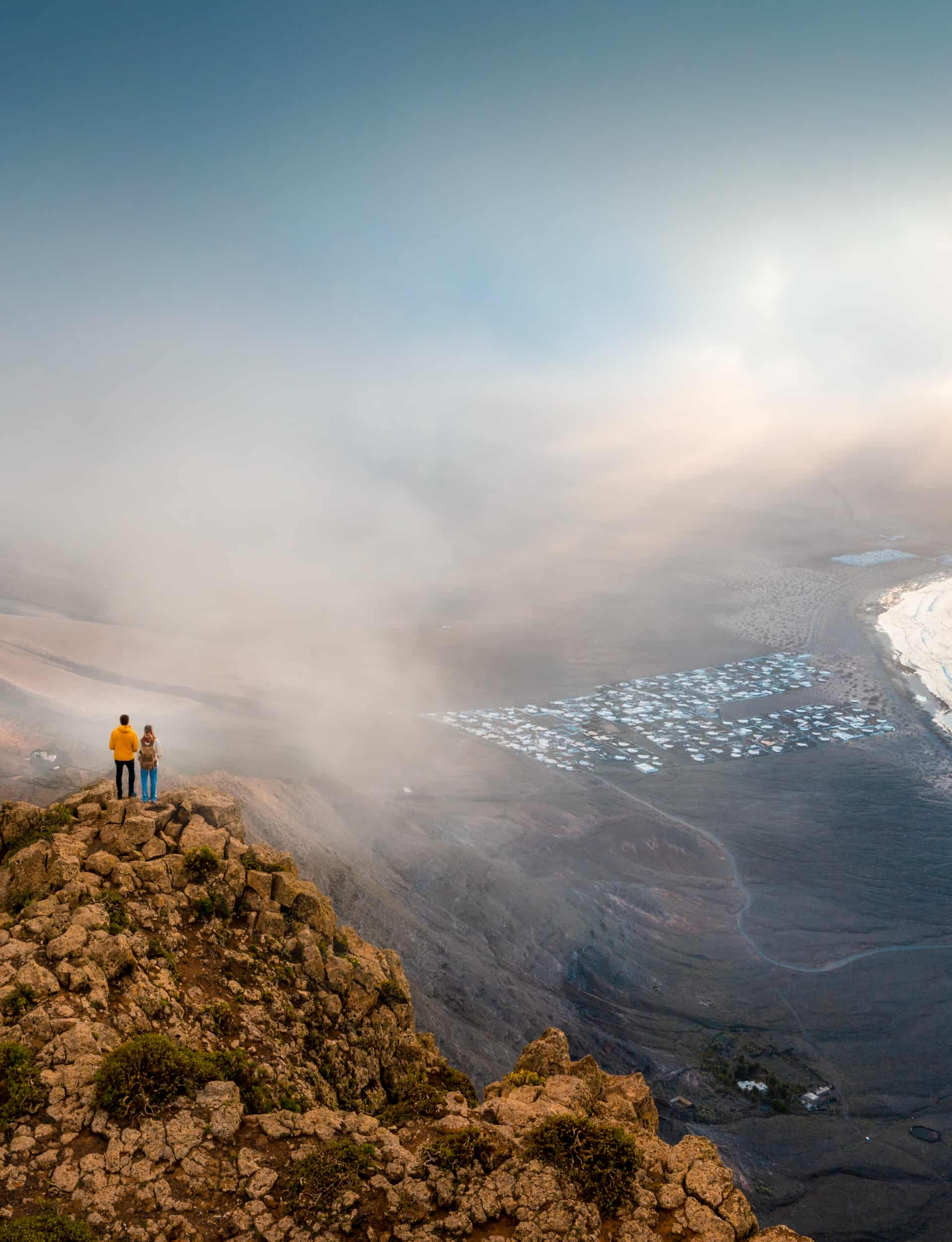
WELCOME TO GLION.
This site uses cookies. Some are used for statistical purposes and others are set up by third party services. By clicking ‘Accept all’, you accept the use of cookies
Privacy Overview
This is a short description about myself and what this site is about. I hope you enjoy being here!
Marketing luxury travel and hospitality brands in 2021.
In Blog , Hospitality , Luxury .
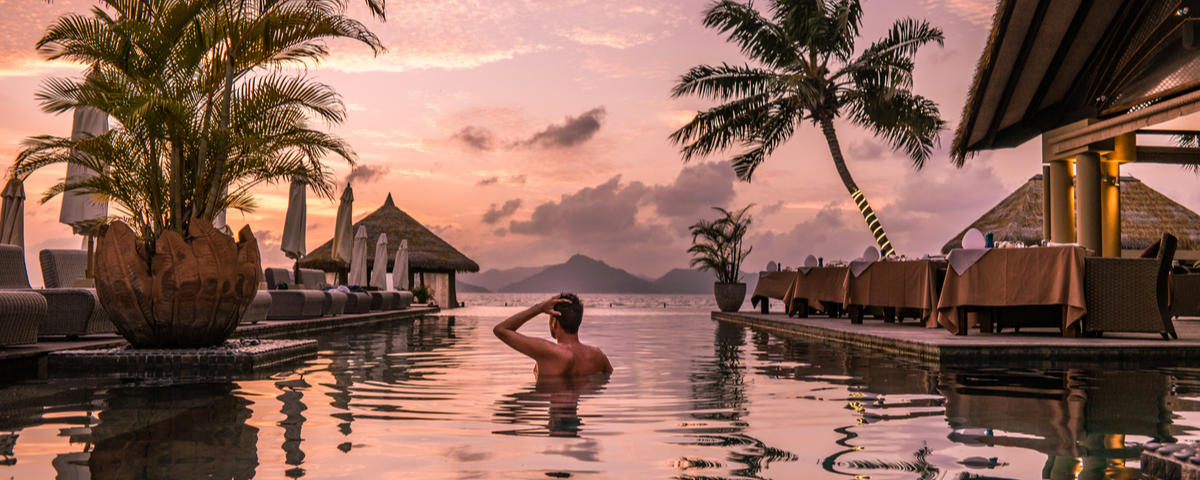
Marketing strategist Gregory Ciotti is known to have said that, “Marketing is enthusiasm transferred to the customer” . This definition has indeed worked well for many marketing strategies. Since the unexpected arrival of COVID-19 10 months ago, numerous industries have been hit, but none more so than the travel industry
And within the luxury travel sector, surveys have shown that the high net worth individuals appear to be more resistant and have constantly been showing pent-up demand for travel.
The luxury travel sector now seems to be in the other end of the Mr. Ciotti’s quote. It appears that the target market’s enthusiasm is being positively transferred to the industry. Amidst the monetary and job losses ( United Nations has projected that the pandemic will cost the travel and tourism industry approximately $1 trillion in losses and more than 100 million jobs worldwide), the customer’s continued enthusiasm is great news and in many ways act as a beacon of hope for the industry.
To get more insights in luxury travel and hospitality marketing, I spoke with David Nickel, co-owner of Jadewolf Marketing . With over 10 years’ experience in digital marketing and luxury brand management, David has co-founded Jadewolf Marketing, a marketing agency specialising in data driven, direct marketing management for luxury travel brands.
Initial Reaction
No one knew or could at least foresee the gravity of COVID-19. Virtuoso’s Senior Vice President, Partnerships Albert Herrera said in a Virtuoso Travel Week virtual event back in August, “Coming into 2020, luxury was poised to have the most successful year on record, but the global pandemic brought the world to a halt.”
David Nickel confirms this, saying that when the pandemic brought travel to a halt, most of their clients’ initial reactions were to freeze their marketing budgets. Understandably, in the early stages, many brands were hesitant to move forward amidst trying to understand and size up the effect of COVID-19 to businesses.
It was a combination of brands sticking to the old tried-and-tested ways of marketing, or completely pulling the plug on marketing.

A Different Approach on Unique Selling Proposition
David relates that eventually, brands started to adjust to new ways and angles of marketing. One brand that comes to his mind is the hotel group Shangri-la, who came up with a different USP (Unique selling proposition) during the pandemic.
With its hashtag #shangrilacares, the hotel group focused on showing the more ‘human’ side of the brand, relating to also having to adjust to new normal scenarios such as working from home. Using the tagline , “Your well-being in our care” , the brand shows how safe it is for guests to stay with them, showcasing hotel staff practicing social distancing and proper safety equipment.
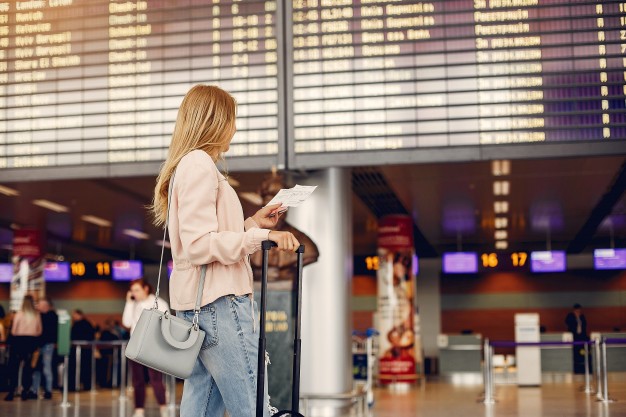
Focus on Data-Driven Marketing
David shares that they recently conducted a survey for a luxury magazine which showed that in terms of travel planning, the HNWI (High Net Worth Individual) demographic remains generally unaffected. If travel restrictions and bans worldwide were to be suddenly lifted, travel will go on as usual pre-pandemic style for this group, if not even more.
Because travel restrictions and lockdowns change almost every day, it pays to keep on top of things. For instance, HNWI’s in America are freer to travel than their global counterparts. Without travel restrictions in their country, American HNWI’s, though few, are currently travelling.
For this market, it’s a case of strategically arranging and suggesting complex travel itineraries for them to work around the constantly changing global restrictions.
Trust is the New Luxury
The luxury traveller still wants to travel, but their priorities and preferences may have slightly changed. They naturally want to know that they will be safe in their travels. So, hospitality and travel brands have given focus on showing how they adhere (and even exceed) safety protocols. In general, luxury hospitality brands want to know that you can trust your well-being in their hands when you stay with them.
David also shares that because of traveller’s priority of enjoying while staying safe, resort hotels are doing better than their city counterparts. Places with lots of open spaces and where it’s easier and more natural to observe social distancing are faring better.
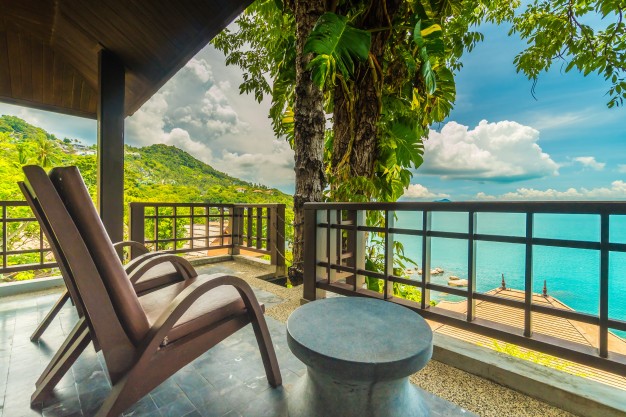
Paying attention to Travel Corridors
Destinations like the Maldives and Thailand have opened up their tourism once more. Instead of focusing on a worldwide branding campaign, many travel and hospitality brands in these areas are paying attention to travel corridors. Any road that is open to them and vice versa. A targeted geographical approach is the marketing key.
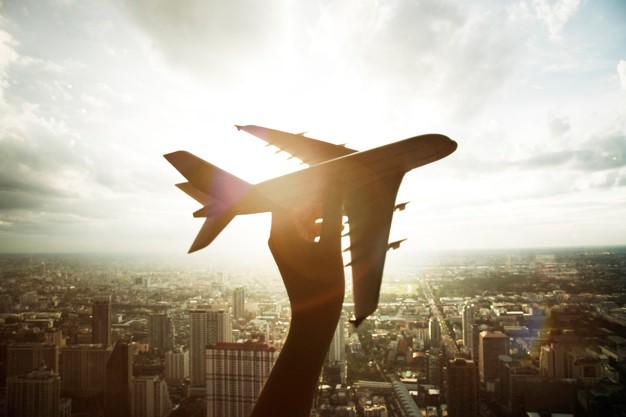
2021 and Beyond
Because of the continued lockdowns and fluctuating restrictions, David foresees that travel and hospitality brands will continue to focus on their domestic market for 2021.
International travel will also gradually and slowly be given marketing focus, depending on restrictions.
In terms of spending, he sees more allotment given on data-driven campaigns versus general brand awareness.
David also hopes that bigger, more traditional players will embrace the powers of digital technology and use this towards their customer relationship management.
This year has been a big shakeup for plenty of brands that are accustomed to using traditional (old fashioned) marketing methods. Hopefully, a year is long enough for these brands to realise that what used to be just an alternative method (digital) is now the way to go.
With not much to travel to and explore, everybody is on their digital devices these days. It’s only wise for brands to use this as a means to reach their market.
Share this:
Leave a comment cancel reply.
Your email address will not be published. Required fields are marked *
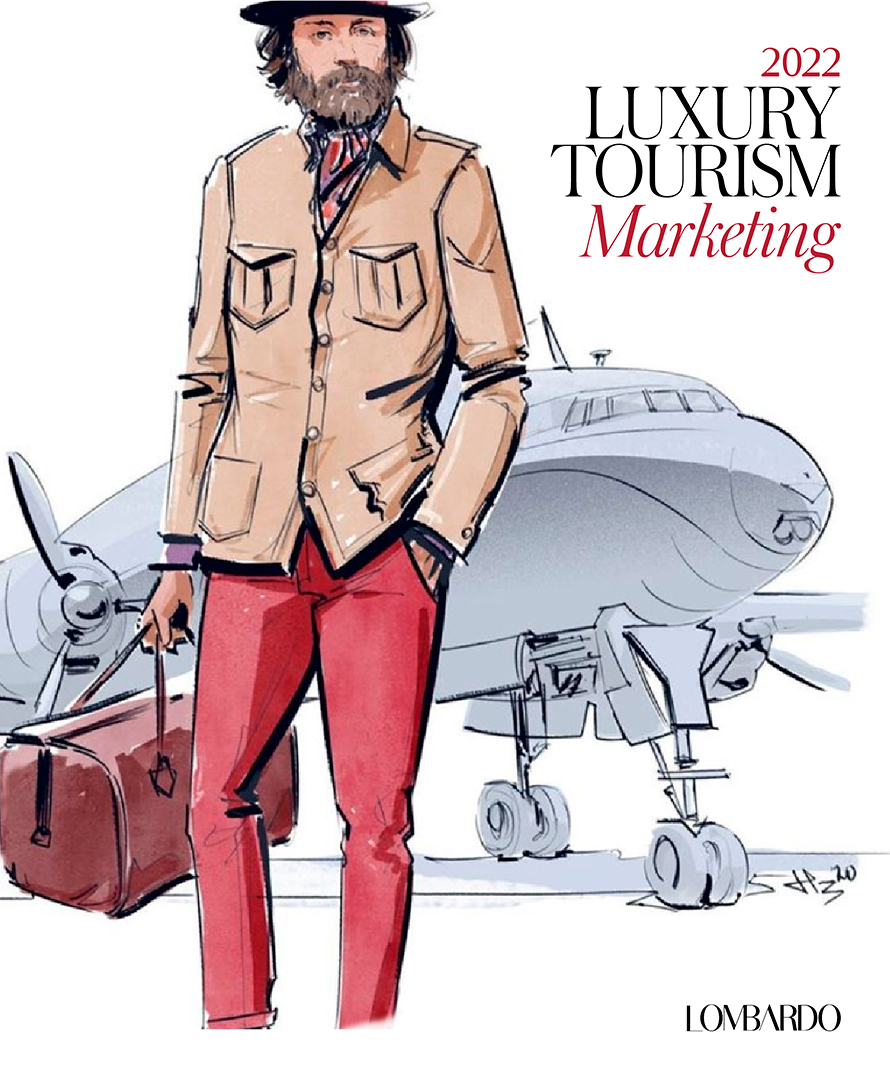
Luxury Tourism Marketing 2022: 5 Keys to Sustained Growth
Without question, global travel has changed, from international travel destinations to Convention and Visitor Bureaus pivoting to address the pandemic. Yet as vaccines become increasingly available, many tourism leaders have been able to return to 2019 numbers and to even exceed them.
The path to doing so requires renewing consumer interest and instilling trust in the safety of the journey. And the days of a print ad being enough to stoke excitement in a luxury resort are long gone. Tourism marketing and advertising to luxury customers calls for content unique to your brand, engagement on a personal level, and cultivating organic growth rooted in sharing your purpose.
Here are five keys for marketing and advertising upmarket destinations in today’s shifting landscape.
Augment Your Marketing
Offering customers engaging interactive content makes a wonderful first impression when the experience is deeply rooted in the brand. AR&VR allows you an opportunity to reach consumers anywhere with the opportunity to glimpse what a visit may provide. With costs for producing such content on par with video production, this channel should see wider integration in the seasons ahead.
Highlight Your Great Outdoors
Trekking has come seemingly out of nowhere as a leading travel trend. Emphasizing a region’s outdoor offerings taps directly into people’s desire to experience a journey that is the opposite of being inside four walls. Open spaces and the chance to connect with local food and culture should move to the top of the list of highlights to promote. Destinations without an outdoorsy offering have also found success pivoting to offer traditionally indoors events al fresco.
Market “Locally”
Drive market marketing has paid huge returns for many regions while air travel has been curbed. Localism will certainly continue to trend upward for years to come as people find comfort in staying relatively closer to home. Helping customers discover more hidden gems within their own part of the world can help drive business.
Offer Transparency
Building trust with your customers is about offering them timely, transparent updates on health and safety status and the measures taken to mitigate risk to travelers and staff. Regions that have handled the pandemic well should not be shy about sharing it. And destinations facing more difficulties can outline what is being done to improve performance and ensure a safe journey. Crafting the messaging and including it subtly across channels can go a long way.
Build to the Future
It’s important to shift focus not on short term goals but on building for the years ahead. To boost short-term sales, it makes sense to offer entirely flexible schedule changes, so customers feel safe paying now should they be unsure about air travel in the months ahead. But if ever, now is a time to pivot position if need be and align your business for future growth. Surely tough decisions have been made, yet a few more may be required to dial in everything from branding to targeting consumers to best utilizing every channel.
- Adventure Travel Marketing
- Tourism SEO
- Paid Search Marketing
- Tourism Content Marketing
- Tourism Website Design
- Reputation Management
- Social Media Marketing
- Total Online Opportunity Report
- Strategy First Package
- Jumpstart Package
- Catalyst Package
- Tourism Public Relations Program
- Insights Blog
- Case Studies
Luxury Travel Marketing
adventure marketing , Public Relations , Tourism Marketing
0 comments
What is Luxury Travel?
When most people think of ‘luxury travel’, images of beautiful, Cucci-clad models lounging around an Italian villa or private beach or yacht come to mind. And while that may indeed be how some affluent types spend their vacations, it’s certainly not true for most, or a very good way of describing what luxury travel is.
But there are a few common themes that separate luxury travel from mainstream or mass-market travel:
Exclusivity: Luxury travel is defined by small groups, (or your own private group) and exclusive experiences, typically out of reach to the lower and middle ends of the market.
Cultural: Authentic, local elements are very important, especially when they are ‘exclusive’ (see above) such as access to interesting places or people. Many affluent travelers also want an educational component to their trips such as arts and architecture, or indigenous cultural experiences.
Culinary: A high standard of cuisine, especially with a strong local component is often a key part of luxury travel.
Customization: Luxury travelers expect a high-degree of customization in their itineraries depending on their interests.
Price Point: When it comes to cost, luxury tours generally start at about $1000/day, not including airfare. Therefore, many higher-end, adventure tour operators are also ‘luxury travel’. But you probably won’t find any young, Gucci-wearing models at that $2000/day fishing resort in Alaska, or heli skiing in BC or on a small-ship cruise to Greenland, yet these are luxury tours too.
Get Your Marketing Strategy Right
When it comes to marketing to affluent travelers, spend the time to create a solid marketing plan . Who exactly is your ideal client(s) and what is the problem you solve (or benefit provided) for them? How are you differentiating from your competitors? It sounds simple, but I can’t count how many times I’ve seen high-end tour operators totally fail at this important step.
A few years back I was approached by a luxury adventure tour operator that was really struggling. They were a family business and traditionally their marketing had involved doing glossy, direct mail campaigns to high-net worth zip codes. This generally worked quite well for them. But they had hired a new tourism marketing agency, who convinced them to kill their direct mail campaigns and go all-in on social media marketing. By the time I talked to them, they were spending $20K/mo on social media ads, and were nearly six-figures in and didn’t have a single booking to show for it. The agency kept telling them how awesome they were doing, ‘“SOOO many likes and shares and viral videos!”. They were pushing vanity metrics and the tour operator was freaking out.
Had they taken the time to get their marketing strategy right, researching, interviewing and really understanding their core market, they would have learned their ideal clients (who were affluent couples aged 60+) were not on Instagram or Tiktok or wherever they were throwing all that cash.
A Longer Customer Journey
Even though your marketing will need to be customized to your ideal audience, there are a few things I see that apply to nearly all luxury adventure tours out there. One of those is a longer customer journey . With the high tour cost, time commitment, and sometimes risk (depending on the activity and destination), these travelers will do a lot of research, comparing you to your competitors, and other destinations out there. Here’s where ‘trust’ comes in. You need to build trust at every stage of the customer journey, from initial awareness to the point of referral.
Here’s where content can really come into play. As you map out your customer journey, think about the content for each stage. What would someone be searching for really early on? That’s where keyword research, tourism SEO and getting them into your ‘funnel’ or on your mailing list is critical. Further down the buying journey, what would move them towards your tours and not your competitors?
Building your Luxury Brand
A solid Public Relations strategy (based on your marketing strategy) is another important piece of the puzzle. Getting press in the publications (online and offline) where your guests can be found is a great way to create awareness and also to build trust and authority. If done right, press will create prestige. Oftentimes, it’s hard for your prospects to tell the difference between two high-end operations, especially when both have similarly priced tours, great photos, great reviews etc. But if you’ve taken the time and done the work to pitch media , host FAMs and enter awards contests, and won, that lends a huge amount of cachet to your travel brand. This is a great way of building trust.
As a bonus, getting valuable press also improves your Domain Authority (DA) so your SEO, or search engine rankings , will improve too, bringing more traffic to your site, and more awareness.
Storytelling for Luxury Tourism Businesses
Nearly all of this comes down to great storytelling . You need to find those stories that resonate with your ideal guests. Here’s the thing: most businesses go about this backwards; they tell stories about themselves, when they should be telling stories about their guests.
Let me explain: most do something like this: “We’re a 10th generation family business. We’ve got the best service and the best tours have won all sorts of awards. So come see how great we are!” No. One. Cares. That’s not to say a great origin story isn’t important, it is. But, it’s not about you, it’s about your ideal guests.
For this, I recommend the StoryBrand System. All your stories, and wherever you tell them— social media, your blog, videos, PR, etc—should be with your ideal clients in mind, making them the ‘heroes’ of the story. Think of it this way, you’re the guide, leading them on a journey or transformation with your amazing tours.
Luxury Adventure Travel Marketing
When it comes to luxury travel marketing, the right combination of strategy, storytelling, tactics and public relations is the key to success. Aventur Marketing has years of experience delivering results and growing bookings for premium tourism businesses. Contact Us today for a free consultation .
You may also like
Trends in tourism marketing for 2024, resort marketing, leave a reply.
Your email address will not be published. Required fields are marked
Get The Latest Insights And Trends In Tourism Marketing & PR Delivered Straight To Your Inbox Each Month
Your privacy is important. We will never sell or share your contact info. Our privacy policy .
Ready to be in Good Company?
Luxury resort & hotel marketing: 5 steps for success.
Marketing for luxury resorts requires a unique approach when developing an advertising strategy to best appeal to high-spending clientele. Read more.

With 94% of Americans choosing to travel this year, there’s no doubt they’re seeking an experience to remember forever. They want great amenities in wonderful locations in not-so-crowded areas for their social media. They expect 5-star service and look for adventure through outdoor activities, visiting cultural attractions, and enjoying live entertainment.
As discerning travelers increasingly seek exclusive experiences, personalized services, and opulent amenities, crafting a compelling marketing narrative becomes essential for luxury resorts and hotels to capture the attention of this elite clientele to increase bookings and grow business.
Whether you’re a seasoned player in luxury marketing and advertising or a newcomer looking to make a mark, these steps and strategies are designed to help you create an impactful and memorable presence in the world of luxury travel.

How Do You Define a Luxury Hotel or Resort?
Luxury resorts and hotels are more than just accommodations; they are immersive experiences that cater to discerning clientele seeking exclusivity, exceptional service, and unique amenities. To effectively market to this elite demographic, it’s crucial to understand their expectations.
According to TEGNA’s latest e-book, “ Taking Off: Understanding Today’s Leisure Traveler ,” affluent consumers prioritize personalized services, exclusive experiences, and breathtaking Instagrammable locations when choosing a luxury resort – and they will pay more for these options.
Additional research shows that 58% of affluent travelers would spend more money on unique destinations and experiences. They also desire distinctive experiences that bring them closer to nature or take them to remote destinations (31%). They are searching for personalized tours or other customized travel encounters facilitating connections with local culture and the environment.
- Pro Marketing Tip: While price can be a factor in luxury purchases, focusing solely on discounts or promotions can cheapen the perception of your brand. Lean on exclusivity and quality.
How Do You Market Luxury Resorts?
The first aspect of marketing is all about creating visibility and bringing awareness to your luxury resort. If travelers don’t know your resort exists, how will they know to book with you? With all the information clearly visible (for example, on your website) and a clever campaign that reaches the right audience at the right time and with the right message, affluent travelers are more likely to find and book with you.
Creating a great campaign, however, requires a nuanced and strategic approach. It involves extensive audience/customer research, crafting the perfect message, incorporating the right media mix, and measuring all the results for future optimizations.
What is the Luxury Hotel and Resort Marketing Mix?
The marketing mix, often called the 4Ps (Product, Price, Place, and Promotion), is a framework businesses use to create and implement effective marketing strategies. Regarding luxury hotel and resort marketing, these principles are applied with a focus on delivering a high-end and exclusive experience.
Luxury hotels and resorts offer top-notch services, amenities, and a unique, exclusive experience. This includes luxurious accommodations, fine dining, spa services, personalized customer service, and attention to detail. Luxury establishments often invest in building a reputation for excellence, exclusivity, and uniqueness. This can be achieved through architectural design, interior decor, and the overall ambiance.
Luxury hotels and resorts typically charge premium prices for their services. The pricing strategy reflects the exclusivity and high-quality offerings. The target market is willing to pay more for a superior experience.
Strategic Locations: Luxury hotels are often situated in prime locations, such as upscale neighborhoods, iconic landmarks, or beautiful natural settings. The choice of location contributes to the overall experience and exclusivity.
In addition to the marketing channels we’ll discuss in the next section, luxury hotels utilize high-end travel agencies, exclusive booking platforms, and partnerships to reach their target audience. Online presence is essential, but the emphasis is on maintaining a sense of exclusivity. Luxury hotels often partner with high-end brands, celebrities, or influencers to enhance their image and reach a wider audience.
The Best Channels to Market Luxury Hotels and Resorts
Marketing luxury hotels and resorts involve reaching high-net-worth individuals who appreciate exclusivity and exceptional experiences. Choosing the right channels is crucial for effectively communicating the unique offerings of luxury establishments. Here are some of the best channels to market luxury hotels and resorts:
Television remains an effective way to reach not only a large audience but also an affluent one. By offering a high-quality visual experience, audiences are drawn in and captivated. TV advertising also offers a degree of credibility and trustworthiness, thanks to the halo effect.
Also known as OTT and CTV advertising, this type of advertising allows luxury brands to extend the reach of a broadcast TV campaign to cord-cutters and cord-nevers. Streaming also allows extensive targeting capabilities, allowing luxury brands to target a more niche audience of affluent travelers.
A strong online presence to complement your complete TV campaign is essential. Utilize visually appealing digital and banner ads on relevant websites, create engaging content, and optimize your content for search engines to ensure your luxury resort is easily discoverable in the digital landscape.
Cross-Channel
The best approach for many marketing campaigns involves a mix of advertising channels. Luxury resorts will see the best results when they use the power of video to compel audiences across broadcast and streaming TV, as well as digital channels.
Luxury Resort & Hotel Marketing Steps for Success
Marketing luxury resorts and hotels require a strategic approach to attract high-end clientele seeking exclusive experiences. Here are steps for success in marketing luxury resorts and hotels:
1. Define Target Market
The first step to any marketing campaign is to understand your audience. In this case, it’s an affluent, wealthy person who enjoys travel for various reasons. You’ll want to create persona profiles and use existing data, if available, to get to know your luxury clientele better. With a better understanding of your target audience, you can craft creativity and tailor your strategy to their preferences, ensuring your resort stands out in a competitive market.
2. Consider Every Step of the Guest Journey
Taking Off: Understanding Today’s Leisure Traveler found that Americans on vacation seek stress relief and relaxation. The survey also validated that top-notch service and cleanliness are paramount to today’s travelers, especially in this post-COVID world. Travel brands would do well to highlight the seamlessness of their experience from booking to checkout and emphasize that they offer a no-stress experience before, during, and after booking.
3. Create a Media Plan
What are the optimal locations for placing your advertisements to achieve the most favorable outcomes? Developing a media plan entails understanding your target audience, campaign objectives, and key performance indicators (KPIs), and customizing your media placements and messaging to effectively reach the appropriate audience at the right moment with the desired reach and frequency. For instance, through audience research, you may discover that local broadcast TV is the most effective means of reaching the Boomer demographic. A well-crafted media plan also incorporates an annual marketing budget, facilitating the strategic allocation of resources.
4. Craft Creative Ads
Our travel survey found that 83% of consumers watch travel content, making video travel essential. Additionally, 79% find travel videos entertaining, 66% say they help them when planning vacations, and 60% feel they keep them informed on the latest travel trends.
But what do travel consumers want to see in travel and tourism advertising?
Design visually captivating and emotionally resonant visuals that highlight your luxury resort’s unique offerings – and exclusivity. Remember that Americans travel to reduce stress, relax, and improve their mood. It will be wise to highlight how stress-free their experience is and highlight a serene atmosphere and opportunities for relaxation as many travelers seek a break from their hectic lives.
Interested in more best practices for crafting the perfect ad creative? Click here to see tips and tricks from one of TEGNA’s best.
5. Test & Optimize Messaging
Continuously analyze the performance of your marketing efforts. Employ measurement instruments such as TEGNA Attribution , Google Analytics, and A/B testing to gauge the effectiveness of your campaigns. Utilize these tools to gather data, assess metrics, and fine-tune your strategy based on immediate feedback. Regularly oversee the performance of your selected marketing channels, adjusting your plan to leverage successful tactics and enhance those that require improvement.
Luxury Hotel Marketing Strategies
Luxury hotel marketing involves implementing strategies that effectively target high-end consumers and showcase the exclusive offerings of the hotel. Remember, the key to successful luxury hotel marketing is to create a sense of exclusivity, deliver exceptional service, and effectively communicate the hotel’s unique offerings to the target audience. Here are some key strategies to consider:
1. Partner with Influencers
Partnering with influencers to authentically showcase your luxury resort can be beneficial in a number of ways. Influencers sharing their positive experience at a luxury resort adds authenticity and credibility to the resort’s brand, and their followers are more likely to trust these recommendations. Influencers also excel at creating visually appealing content that is highly shareable and can showcase the luxurious amenities, services, and experiences offered by the resort in a compelling way.
It’s important for luxury resorts to carefully select influencers whose brand aligns with their own and who have a genuine affinity for the luxury travel experience. Authenticity in influencer partnerships is key to ensuring the collaboration resonates with the influencer’s audience.
2. Promote Your Resort or Hotel on Local News
While the primary target audience for luxury resorts may be global, local news promotion can complement broader marketing strategies by creating a local presence, building relationships, and attracting visitors who may be influenced by regional coverage. For example, TEGNA’s local news stations are known for their affluent audience and provide an ideal platform for promoting luxury resorts. Other benefits include:
- Building Trust: Taking Off: Understanding Today’s Leisure Traveler found that local audiences believe local news educates and informs their travel plans, as 59% learn about nearby tourist activities, and 44% get tuned into the latest travel trends. Viewers also noted they trust local recommendations over national news.
- The Halo Effect: Studies have shown that consumers are more likely to trust – and buy from – brands that advertise alongside sources of information they trust, such as local TV news stations. The theory is that these brands benefit from the halo effect , which, in this case, can be described as the news’s positive influence on the brand advertiser.
- Commitment to the Community: Local news presence can foster positive relationships with local residents and businesses, leading to support and positive word-of-mouth.
3. Focus on the Customer Experience
Today, more and more travelers expect five-star service, even amid staffing shortages and the absence of a five-star rating. They are also in search of a stress-free and relaxing experience. Travel brands would do well to highlight the seamlessness of their experience from booking to checkout and emphasize that they offer a no-stress experience before, during, and after booking.
4. Personalize the Campaign
Personalizing campaigns is crucial for several reasons, as it helps businesses connect with their audience on a more individual level and tailor messages to meet specific needs. This personalization can lead to an improved customer experience, increased engagement, higher conversion rates, enhanced brand loyalty, more precise audience targeting, and an optimized budget, and allows resorts to create more accurate and effective marketing strategies, ensuring that messages align with customers’ wants.
Personalization allows resorts to adapt quickly to changing trends and preferences, ensuring their campaigns remain relevant and effective. It can help create cross-selling and up-selling opportunities. But most importantly, when consumers experience tailored and thoughtful interactions, it reinforces a positive perception of the brand, differentiating it in a crowded market, and can lead to positive word-of-mouth recommendations.
5. Focus on Staycations
Taking Off: Understanding Today’s Leisure Traveler reveals that hometown tourists and staycations are on the rise, and travel and tourism brands will be wise to position marketing and advertising campaigns to attract locals looking to get away while staying closer to home.
Consider marketing your luxury resort as the ultimate local getaway. Highlight exclusive amenities like spas and gourmet dining to attract staycationers.
6. Use Video Marketing
In the captivating realm of travel and tourism, where the allure of places near and far call out, the power of video advertising holds a remarkable sway. Visual content, such as videos and images, can captivate potential visitors and preview what they can expect. Therefore, a cross-platform strategy , including television, streaming, and digital video advertising, can reach a broad audience and effectively showcase your destination’s beauty and attraction
Help Travelers Get Away with TEGNA
At TEGNA, our ultimate goal is to equip brands with data and insights to inform and develop creative, then amplify those messages with cross-platform campaigns, including linear , streaming , and digital elements. With 64 broadcast stations in 51 markets nationwide, our unique content opportunities will connect your business to the audiences that matter most and deliver proven results. Let’s get in touch to see how we can help your brand grow with the power of TV advertising .
Frequently Asked Questions
Who is the target market for luxury hotels and resorts.
The target market for luxury hotels and resorts includes high-net-worth individuals, discerning travelers seeking exclusive experiences, and those who value personalized and premium services.
What do luxury tourists want in a hotel or resort?
Luxury tourists prioritize personalized services, exclusive experiences, breathtaking locations, high-end amenities, and exceptional customer service.
What’s the difference between a media plan for a luxury hotel and a standard hotel?
A media plan for a luxury hotel emphasizes premium channels, influencers, and platforms that cater to affluent audiences. It focuses on creating a sophisticated and exclusive image to attract high-end clientele, setting it apart from standard hotel marketing strategies.
Subscribe to our Newsletter
What is 1+1=?
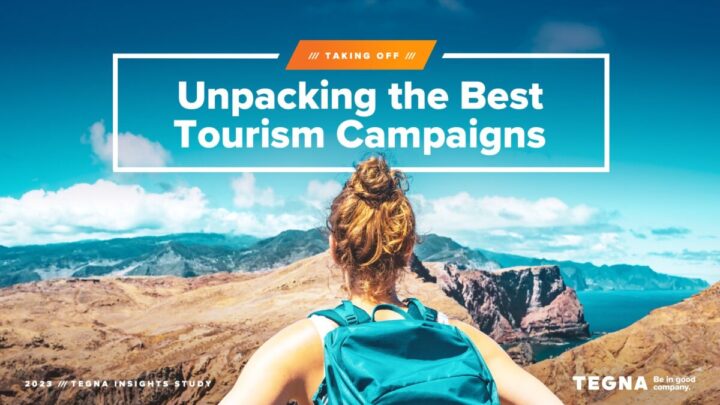
Unpacking the 3 Best Tourism Campaigns

Advertising Your Law Firm: 6 Steps
Be in good company, let’s talk tv: the power of combining linear + streaming tv with tegna’s gen z rising star, shrutee narayanan at kare 11 .

How to Calculate Video Marketing ROI

2024 Automotive Industry Trends

How to Buy TV Ad Spots

Good Work Videos: Success Stories
What is it like to be in good company with tegna a few of our partners share their experiences.

Good Work: Exploring Great Solutions with Cochise County Tourism & Economic Council
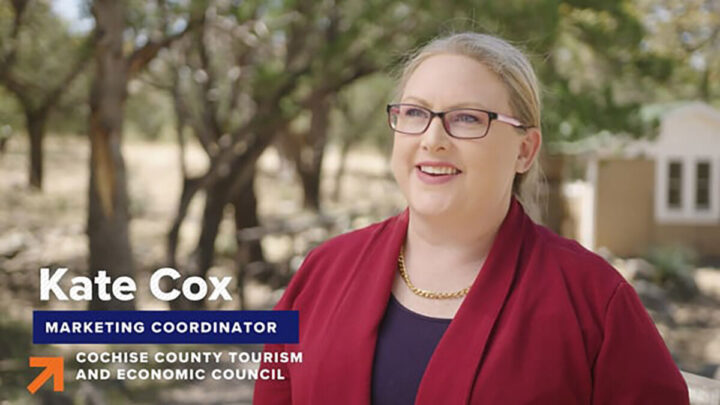
Good Work: TEGNA Cuts Through the Clutter for 1-800-GOT-JUNK with Mayblack Media Consulting

Good Work: Building Great Results with iRestore & KSDK


- © 2020
Luxury Tourism
Market Trends, Changing Paradigms, and Best Practices
- Roland Conrady 0 ,
- David Ruetz 1 ,
- Marc Aeberhard 2
University of Applied Sciences Worms, Worms, Germany
You can also search for this editor in PubMed Google Scholar
Head of ITB Berlin, Messe Berlin GmbH, Berlin, Germany
Luxury Hotel & Spa Management Ltd., Zürich, Switzerland
- Offers case studies, examples and best practices on topics ranging from consumer behavior to market development
- Offers research and practical insights into the current state and development of luxury tourism
- Combines knowledge from academic research as well as luxury market participants and stakeholders
Part of the book series: Tourism, Hospitality & Event Management (THEM)
13k Accesses
4 Citations
1 Altmetric
- Table of contents
About this book
Editors and affiliations, about the editors, bibliographic information.
- Publish with us
Buying options
- Available as EPUB and PDF
- Read on any device
- Instant download
- Own it forever
- Compact, lightweight edition
- Dispatched in 3 to 5 business days
- Free shipping worldwide - see info
- Durable hardcover edition
Tax calculation will be finalised at checkout
Other ways to access
This is a preview of subscription content, log in via an institution to check for access.
Table of contents (10 chapters)
Front matter, introduction.
- Roland Conrady, David Ruetz, Marc Aeberhard
Development of the Macro-environment of the (Luxury) Tourism Market
Roland Conrady
Analysis of the Luxury Phenomenon
- David Bosshart, Hannes Gurzki, Dorothea Hohn, Antonella Mei-Pochtler
Behavioral Explanations of Luxury Consumption
- Hasso Spode, Hannes Gurzki, David M. Woisetschläger, Marc Aeberhard, Stephan Hagenow
Marketing Management of Luxury Providers
- Marc Aeberhard, Magda Antonioli Corigliano, Sara Bricchi, Juliet Kinsman, Keiko Kirihara
Luxury and the Tourism Offer
- Marc Aeberhard, Roland Conrady, Stephan Grandy, Thomas P. Illes, Adam Parken, Norbert Pokorny et al.
Luxury Relevance of Selected Megatrends in Tourism
- Marc Aeberhard, Stefan Gössling, Mario Krause, Jörg Meurer

Analysis, Design, and Future Perspectives of Luxury Features
- Hannes Gurzki, Philipp Schmid, Daniel Schönbächler, David M. Woisetschläger, Verena Zaugg-Faszl
Case Studies and Best Practice Examples of Luxury Tourism
- Marc Aeberhard, Andreas Caminada, Sergio Comino, Dirk Gowin, Marcus Krall, Brett McDonald et al.
Summary and Outlook
Over the past two decades, through unprecedented levels of prosperity and changing values, luxury tourism has transformed into a new consumption pattern. This book analyzes the topic in detail with contributions from both recognized scientists and prominent executives in the luxury business. It shows how the concept of luxury has shifted from material to immaterial dimensions, and outlines new trends that will shape the luxury market in the future. The content includes carefully selected leading examples from the most important segments of the tourism market, along with concrete recommendations and best practices. Sharing unique insights, the book is a must-read for those working in the tourism industry, as well as lecturers and university students of tourism.
- Behavioral aspects of luxury tourism
- The luxury tourism market
- Luxury marketing strategies
- Case studies on luxury tourism
- Understanding luxury consumers
- Consumer behavior
David Ruetz
Luxury Hotel & Spa Management Ltd., Zürich, Switzerland
Marc Aeberhard
Prof. Dr. Roland Conrady Since 2002, Prof. Dr. Roland Conrady has been a professor at the tourism/transport department of the Worms University of Applied Sciences. His research and teaching focuses on aviation, tourism and digitalization. Since 2004, Roland Conrady has also been the Scientific Director of the world's largest tourism convention, the ITB Berlin Convention. He was president of the German Society for Tourism Science (DGT) e.V. and is a book author (among others Conrady, R./Fichert, F./Sterzenbach, R., Luftverkehr, Munich 2019). Roland Conrady is a member of various advisory boards of companies and politics. Previously, he was head of the study program "Electronic Business" and Professor of General Business Administration at the University of Applied Sciences Heilbronn. After graduating as Dr. rer. pol. from the University of Cologne in 1990, he held various management positions at Deutsche Lufthansa AG until 1998.
David Ruetz (Head of ITB) hasheaded the ITB Berlin, The World's Leading Travel Trade Show®. Under his direction, ITB Berlin has seen many achievements, including the Innovation Award the Federal Association of the German Tourism Industry (BTW). As part of the management of ITB, he was significantly responsible for the establishment of the ITB Asia in Singapore (since 2008) and also helped to introduce the ITB China in Shanghai (premiere in May 2017). After his studies in Zurich and Berlin, David Ruetz entered tourism and the event industry and joined Messe Berlin in 2001. He is editor, author, and co-author of numerous studies and books on trends and developments in the exhibition, travel and tourism industry, among others the annual World Travel Trends Reports. His interests include digitalization in the trade fair and event sector. As a guest lecturer he regularly works at universities in Germany and Austria and is also a member of the advisory board of R.I.F.E.L. e. V. (Research Institute for Exhibition and Live-Communication), the IUBH - International University and (until 2018), and as a Member of the Executive Board of Research Association for Holidays and Travel (FUR).
Marc Aeberhard founded Luxury Hotel & Spa Management Ltd. in Zurich in 2004 and has been acting as Managing Director ever since. The company has access to a global network of travel trade partners, lifestyle and travel media and (U)HNWI and works closely with public relations and sales & marketing agencies in Frankfurt, Munich, Paris, Dubai, Milan, New York, Hong Kong and London. Furthermore, the native Swiss is a member of the consulting networks of the Gerson Lehmann Group, USA and Hotellerie Suisse, Bern. He also takes on an active in the "Luxury" task force of the management of ITB Berlin, Germany. As author and co-author of various specialist publications, his name can be found regularly. He also holds guest lectures in Berlin, Istanbul, Lausanne, Lucerne, Munich, Singapore, Stuttgart, Thun, Vienna, Worms, Zurich etc. The graduate hotelier graduated with distinction from the Ecole Hôtelière de Lausanne (EHL) and previously completed his studies in business administration as lic.rer.pol. (MBA) at the University of Bern. The luxury hotelier has more than 20 years of experience in the fields of hotel opening, management and renovation/refurbishment in Abu Dhabi, Germany, France, Maldives, Morocco, Seychelles, Sri Lanka, Switzerland, Thailand, Ukraine and Cyprus of small hotels in high and top end. Many of the hotels have been awarded international prizes. All projects are based on the definition of New Luxury and work according to the principles of the Triple Bottomline.
Book Title : Luxury Tourism
Book Subtitle : Market Trends, Changing Paradigms, and Best Practices
Editors : Roland Conrady, David Ruetz, Marc Aeberhard
Series Title : Tourism, Hospitality & Event Management
DOI : https://doi.org/10.1007/978-3-030-59893-8
Publisher : Springer Cham
eBook Packages : Business and Management , Business and Management (R0)
Copyright Information : Springer Nature Switzerland AG 2020
Hardcover ISBN : 978-3-030-59892-1 Published: 01 November 2020
Softcover ISBN : 978-3-030-59895-2 Published: 02 November 2021
eBook ISBN : 978-3-030-59893-8 Published: 31 October 2020
Series ISSN : 2510-4993
Series E-ISSN : 2510-5000
Edition Number : 1
Number of Pages : XII, 323
Number of Illustrations : 8 b/w illustrations, 30 illustrations in colour
Topics : Tourism Management , Luxury , Consumer Behavior , Branding
Policies and ethics
- Find a journal
- Track your research
Luxe Digital
Conscious, elevated living.
- Men's style
- Women's style
- Stricking superlatives
- Advertising
JOIN OUR COMMUNITY
Receive our finest finds, exclusive deals, and luxury news to stay in the know.

The Digital Journey Of The Affluent Luxury Traveller
There are four critical moments when luxury travel brands need to engage their affluent travellers online.
by Florine Eppe Beauloye Updated on November 23, 2022
At Luxe Digital, we independently research, review, and recommend products we love and that we think you will love, too. Learn more about how we curate the best products for you .
The Opportunity
- Most affluent travelers research, plan, and book their trips online. The online customer journey offers luxury travel brands new opportunities to engage their consumers across devices and channels.
- Digital inspires affluent tourists to explore new locations and experience different types of vacations.
- The demand from affluent Millennial travelers for personalized and authentic experiences creates new venues of growth for the high-end luxury travel industry.
The Problem
- The once linear travel customer journey is being replaced by intent-driven micro-moments, resulting in a complex booking process.
- Affluent travelers expect more out of their trips: they want stories of unique experiences and envy-inducing sharable photos of their trip. Real-time interactions such as location check-ins and status updates require luxury travel brands to leverage social media channels in innovative new ways.
- Millennial travelers prefer to plan and book their vacations online, increasingly using their mobile devices. They want personalized content that is relevant to their preferences, but luxury travel brands are struggling to keep up.
The Solution
- To reach and influence travelers, luxury travel brands must take an omnichannel approach to customer experience and provide relevant content throughout the travel journey online.
- Social media and user-generated content are an essential part of marketing to the modern affluent travelers. By leveraging the millions of authentic travel photos and stories that people post online every day, luxury travel brands can create engaging digital experiences that move travelers along the path to purchase.
We’ve previously explored in detail the digital transformation of the luxury retail industry . Today, we are looking at another industry that is being heavily reshaped by digital: luxury travel and hospitality.
This report explores how digital and new technologies are redefining the travel and hospitality industry across the entire travel journey. Social media and mobile, in particular, are profoundly influencing the purchase decisions of modern affluent travelers. High-end travel brands and luxury hotels need to understand how these new developments are shaping their consumers’ decision process.
Taking inspiration from a study by Google on consumers’ online behaviors in the travel and hospitality industry, we will organize this report into four essential phases. [1] It is critical for luxury travel brands to be present throughout each of these four phases if they want to positively influence their customers’ decisions .
There are four essential travel phases that matter in the customer journey:
- Dreaming phase: I-want-to-get-away moments
- Planning phase: Time-to-make-a-plan moments
- Booking phase: Let’s-book-it moments
- Experiencing and sharing phase: Can’t-wait-to-explore moments
We will explore in greater detail each of these four critical phases to discover how luxury travel and hospitality brands can influence their customers’ decisions. We will then take a closer look at the growing importance of mobile experiences throughout the travel experience journey before concluding this report with specific recommendations for luxury brands.
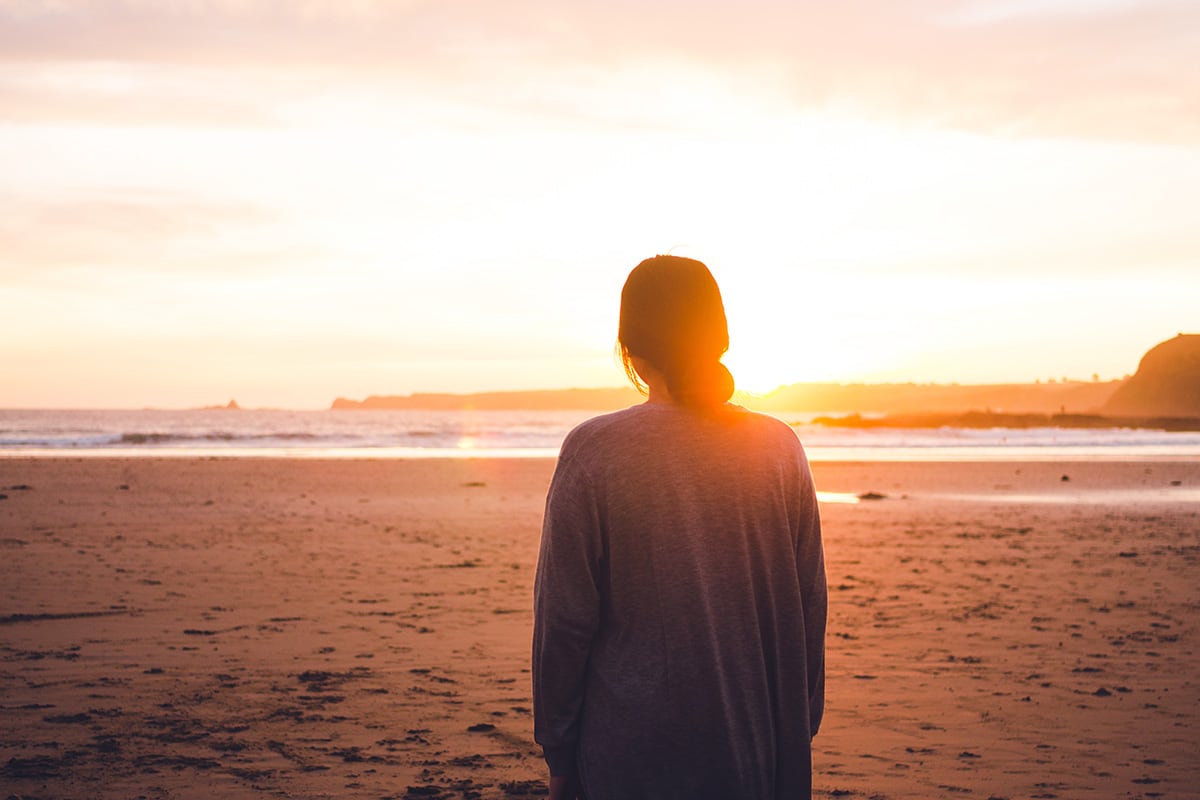
1. Dreaming phase: Digital inspires affluent travelers to explore new destinations and discover new travel experiences
If you’ve ever spent hours scrolling through the feeds of your favorite travel influencers on Instagram or other online platforms, you’re not alone. There are over 287 million posts on Instagram alone using the hashtag #travel, which underlines the popularity of the topic on social media.
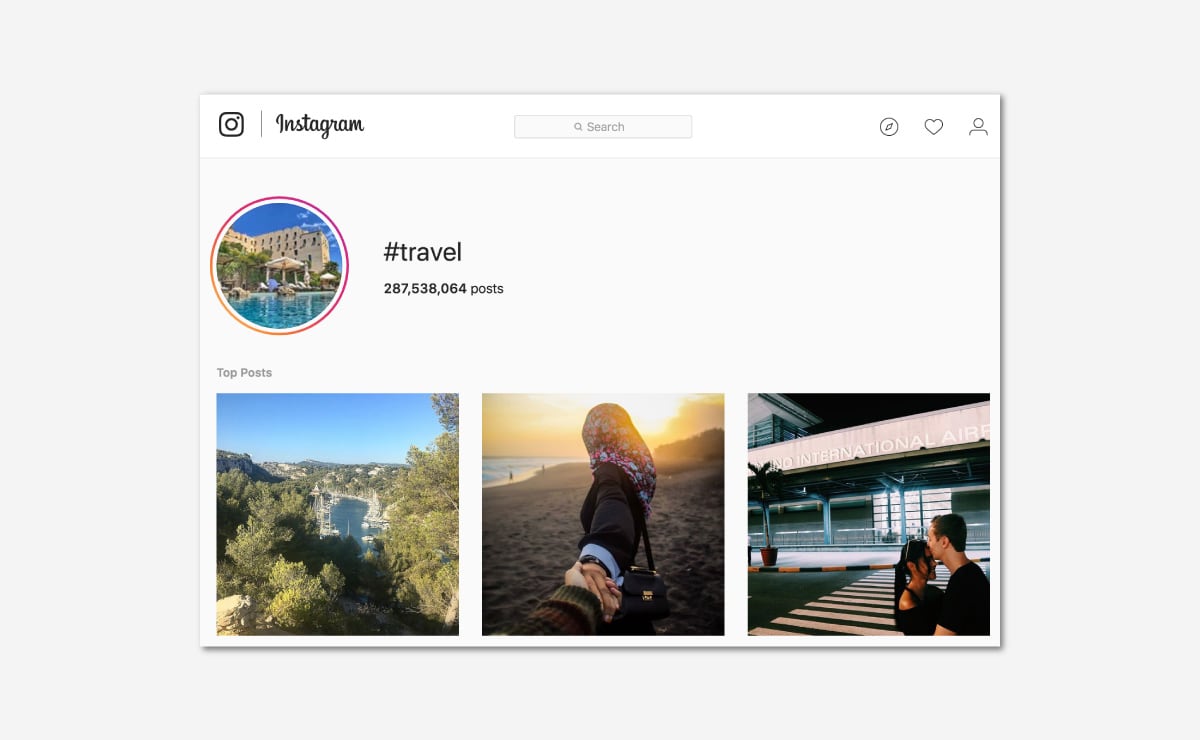
The Internet, online visual content, and social media, in particular, provide a seemingly infinite source of picture-perfect snaps of the world’s most desirable travel hotspots and are influencing how people dream about their next holiday destination.
The experience that a travel brand can provide online, before travelers even decide where they will be going, is thus crucial.
Social media has become an essential resource for travel seekers. As a result, high-end travel brands and luxury hotels have increased their social media budgets, both in the form of content marketing and paid advertising.
The sheer amount of travel-related content that is now available to holiday seekers online is staggering. The challenge for marketers is, therefore, to break through the clutter and engage with their most relevant target audience.
Social content influences consumers’ travel decisions more than traditional advertising. During the initial dreaming phase of the journey, holiday seekers turn to social media to find inspiration for their next travel destinations and compare options from a variety of online sources.
Over 40% of travellers say they bounce back and forth between dreaming about and planning their next trip—zooming in on the details for one destination and then zooming out to reconsider all the options again. Think with Google
On average, 43 days will pass between the decision to travel and the decision on where to go, according to the head of travel at Facebook, Christine Warner. These 43 days will be spent scrolling through social media feeds and reading recommendations from friends and trusted influencers. Travel website Expedia found indeed that over half of travelers are open to help and ideas on destinations. This is particularly true for Chinese travelers, of which 82% will seek recommendations from other people online. They are followed closely behind by American travelers (72%).
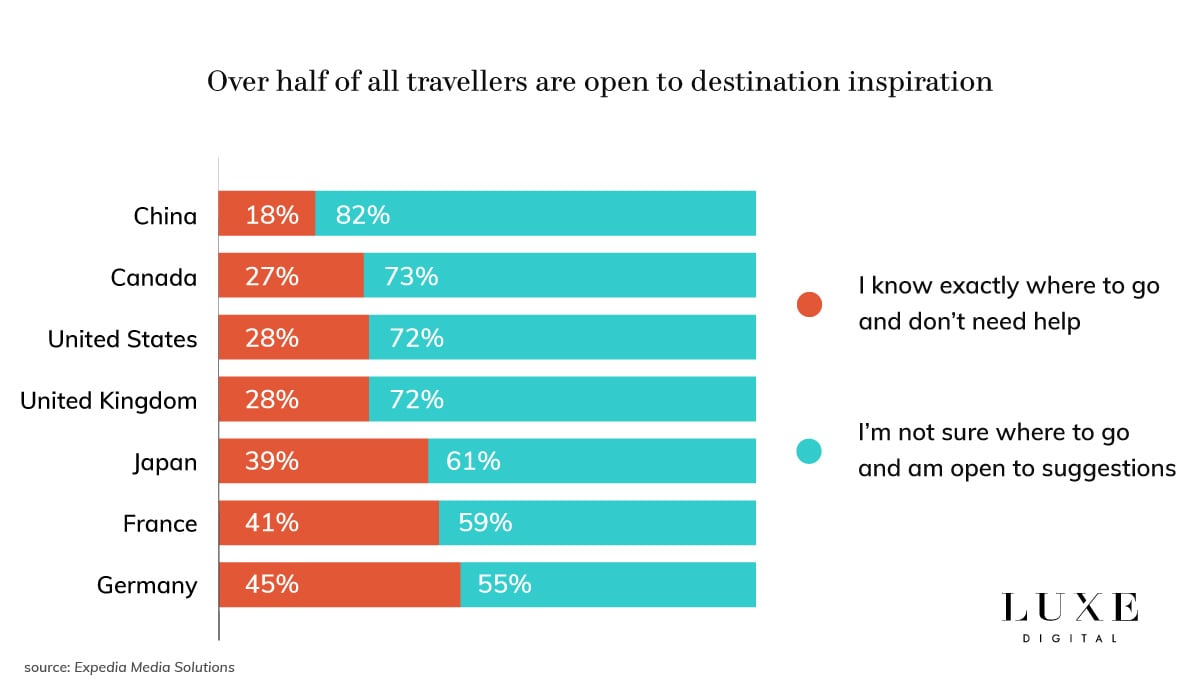
Furthermore, a study by ComScore found that 73% of first travel searches worldwide had no mention of a brand or destination. [2] Travelers are thus actively looking online for ideas and suggestions on where to go for their vacations.
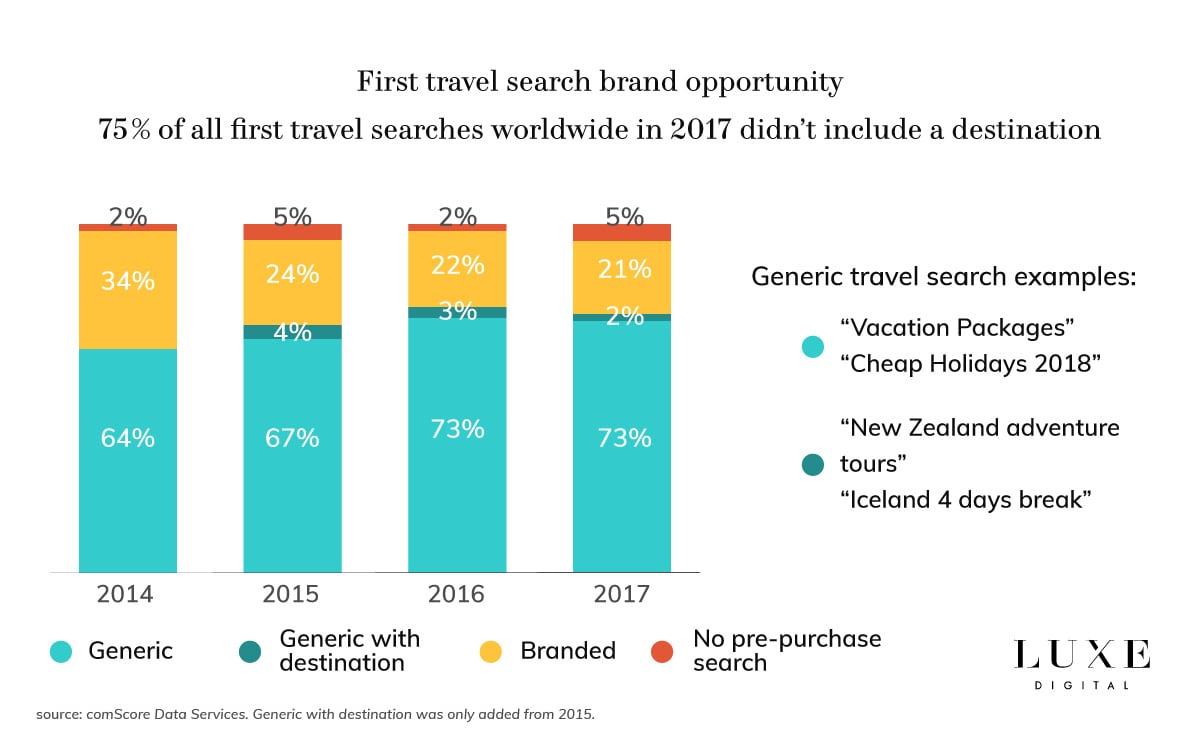
That indecision presents a significant opportunity for luxury travel and hospitality brands to inspire affluent travelers with quality destination content . At this early stage in the travel journey, travel seekers want brands to provide content to help narrow down their choices.
Instagram is one of the most popular places to fuel your wanderlust, especially since “Instagrammability” is now an important factor in choosing a holiday destination. A study from Hotels.com revealed a new trend of ‘travel bragging’ on social media among Millennials . [3] One in eight Millennials admits to picking their next destination and hotel based on how Instagrammable it is.
Marina Bay Sands in Singapore is the world’s most Instagrammed hotel
Instagram’s 2017 Year In Review revealed the most popular hotels in the world and the most shared moments across the #travel world.
Singapore’s iconic Marina Bay Sands (MBS) topped the list for the world’s most Instagrammed hotel; a recognition that they prominently communicate on their Instagram account.
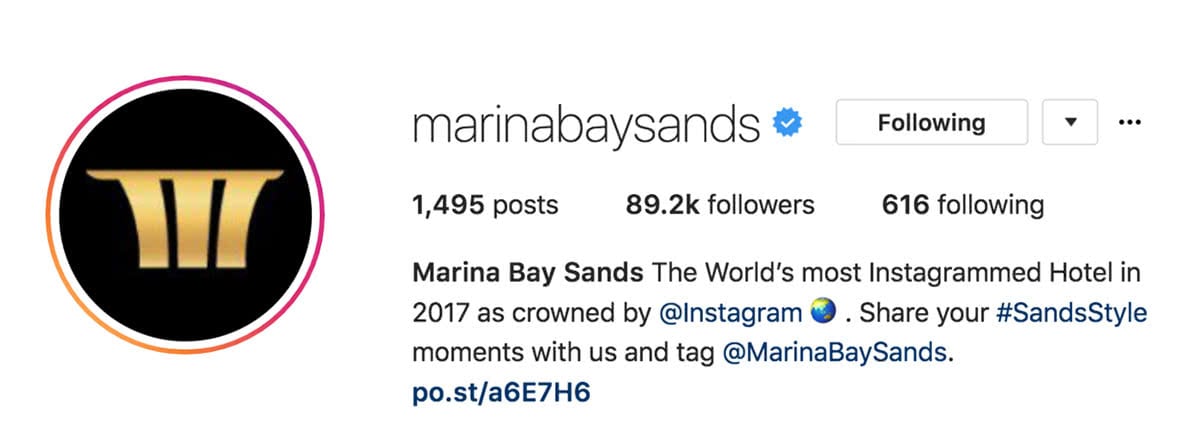
One of the definitive icons of Singapore’s skyline, Marina Bay Sands is home to a breathtaking infinity pool at 57 storeys high overlooking Singapore’s Central Business District which makes for the perfect backdrop for social media posts — #nofilter needed. Over a million photos have been posted to Instagram from the SkyPark by guests, celebrities, media and influencers alike.
A selfie from the MBS’s poolside is a “bucket list” item for affluent Chinese visitors to Singapore. Read our report on how luxury brands attract the affluent Chinese tourists to understand the travel habits of these high spenders.

The top 10 most Instagrammed hotels in the world:
- Marina Bay Sands (Singapore)
- Bellagio (Las Vegas, USA)
- The Venetian (Las Vegas, USA)
- Atlantis The Palm (Dubai, UAE)
- MGM Grand (Las Vegas, USA)
- The Cosmopolitan (Las Vegas, USA)
- Wynn (Las Vegas, USA)
- Caesars Palace (Las Vegas, USA)
- Fontainebleau (Miami Beach, USA)
- Paris Las Vegas Hotel & Casino (Las Vegas, USA)
2. Planning phase: Digital eases travel planning, and mobile boosts planning activities on the go
Beyond providing travel inspiration, online resources play a strategic role in trip planning, most notably with younger affluent generations. This trend hints at the increased role social media will play as a travel planning tool for wealthy Generation Z travelers.
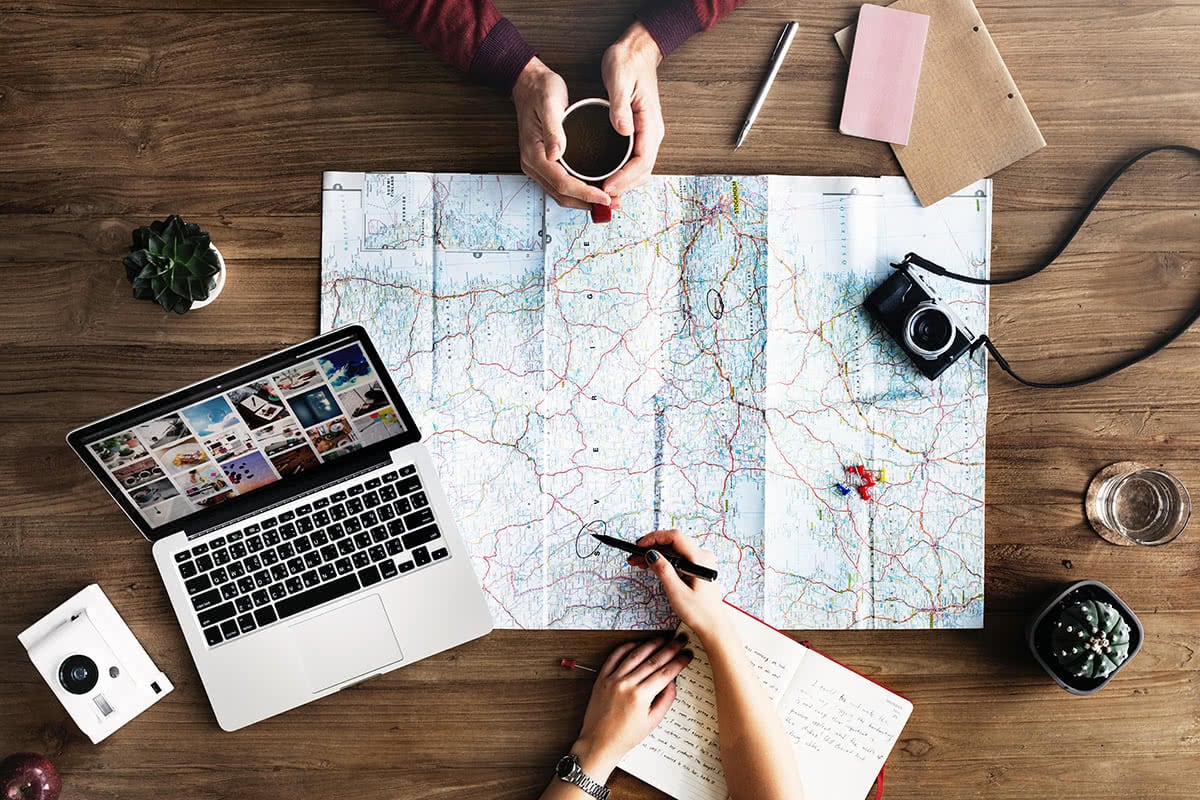
During the planning phase, travel planners compare pricing and read reviews and recommendations to decide where to stay and which activities to do. They will often seek validation of their choices across various social media platforms and online communities.
Research conducted by Nielsen for Google found that travelers spent an average of 53 days visiting 28 different websites to plan their vacations. [4] More than 50% of them will heavily use social media during that travel planning phase.
Interestingly, digital has also led to travelers increasingly making last-minute plans from their mobile phones. Travel-related searches for “tonight” and “today” among hotel and air queries have grown drastically on mobile between 2014 and 2017. [5]
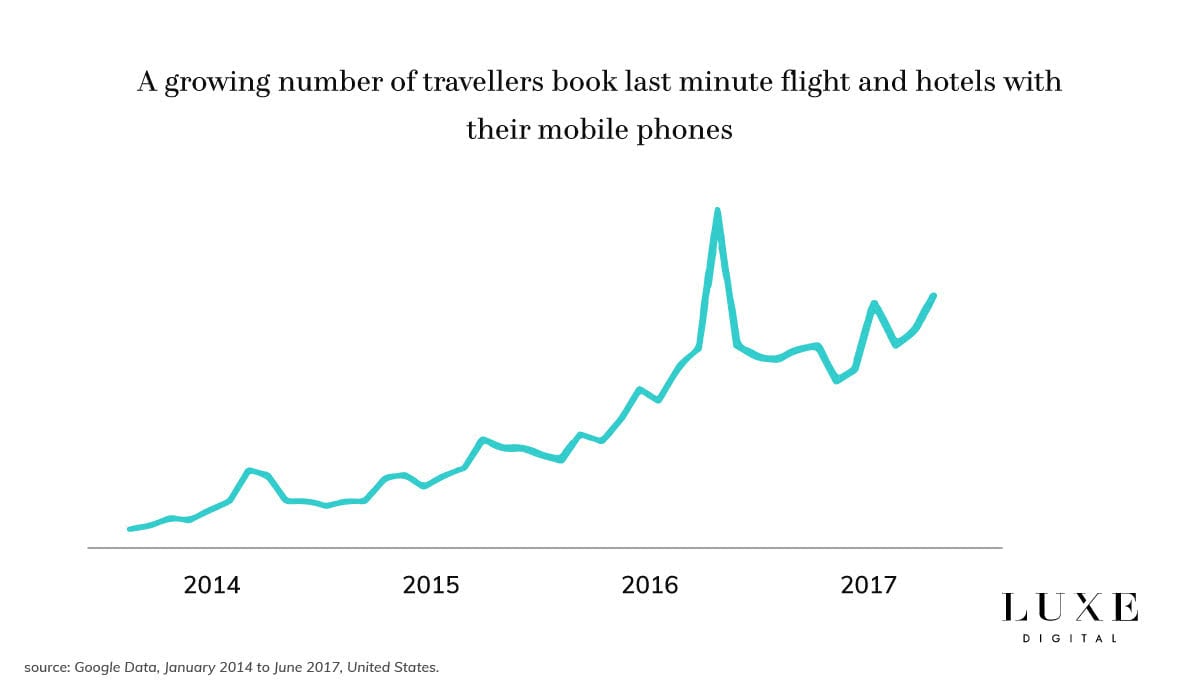
In the planning phase, OTAs and search engines are the most used resources, with 51% of all global travelers using them regularly to find travel information and compare prices. Hotels and airlines websites, on the other hand, are only used by 30% of travelers planning their trips, according to Expedia Media Solutions.
Travel review sites are also key resources used for planning trips. According to Huffington Post, over 95% of leisure travelers read at least seven reviews before booking their holidays. [6]
It is important to note that many travel review sites contain user-generated content (UGC), often seen as more authentic by readers. It is thus essential for high-end travel companies and luxury brands to promote positive UGC and proactively manage negative reviews.
Bringing social media and online UGC to the physical world
In October 2017, Scotland’s National Tourism Board brought social media and UGC to the offline world with the launch of the #ScotSpirit Instagram Travel Agency.
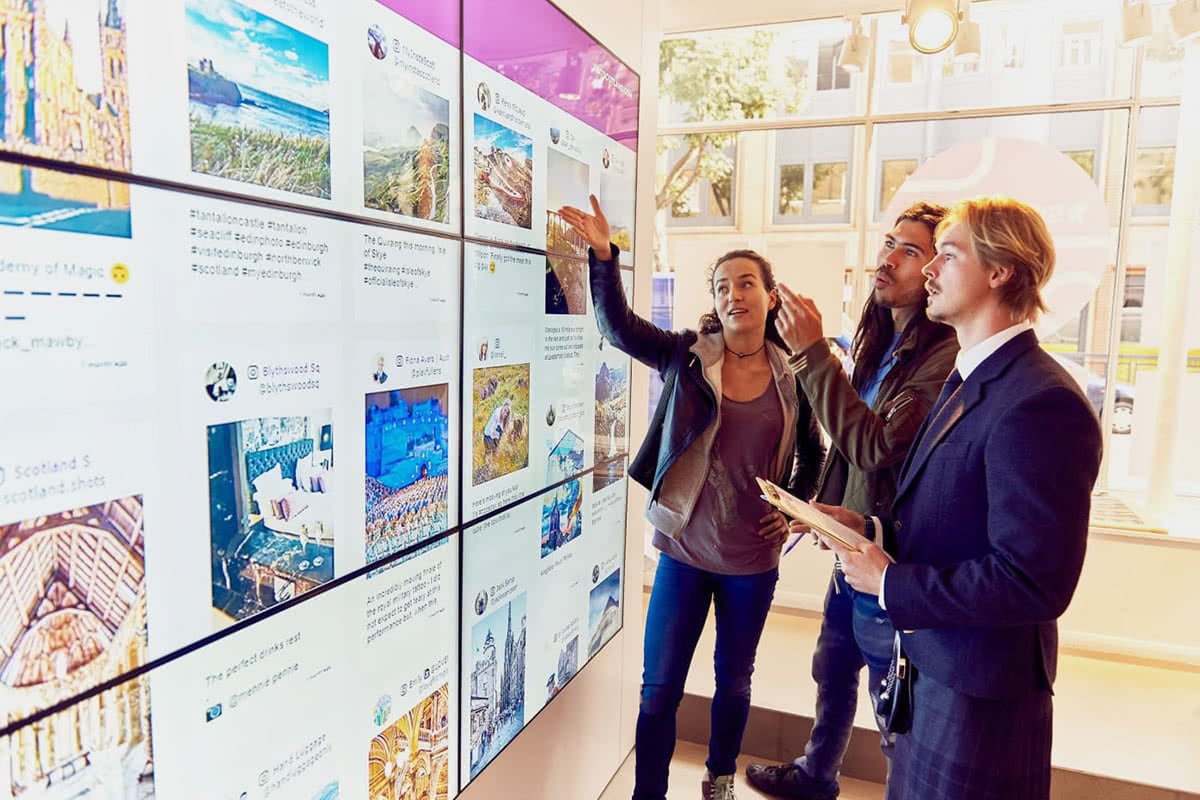
The temporary, pop-up travel agency displayed floor-to-ceiling digital screens showcasing real travelers’ Instagram photos from across Scotland to inspire potential travelers. A travel agent then uses the selected images to curate the perfect Scottish holiday itinerary.
3. Booking phase: Travellers expect a seamless and frictionless booking process across devices
Affluent travelers expect to be able to instantly book their flights and hotels on the device that they want at the very moment they need it. As a result, a consistent user experience across all devices is essential for luxury travel booking.
A Google study found that price, but also the search functionality and easiness of the booking process are key features that will impact the booking of a travel experience. When it comes to mobile bookings in particular, travelers expect simple checkouts with a single-screen experience, large text entry boxes, and a secure online payment gateway.

While desktop remains the primary booking platform for most travelers, 80% of the last-minute hotel bookings are now made on mobile devices. [7]
Younger generations are also driving mobile bookings. Google found that two-thirds of Millennial travelers are comfortable booking an entire trip on a smartphone, compared to only one-third of the older generation travelers. Social media is also starting to play a critical role in the booking process. In May 2018, Instagram announced new action buttons on business profiles that allow users to “book,” “get tickets,” “reserve,” or “start order”—all within the app. [8]
4. Experiencing and sharing phase: Seamless and shareable experiences are must-have amenities for affluent travelers
Mobile and social media enable luxury travel and hospitality marketers to engage with their guests in real-time and on-property in new innovative ways.
Once guests check in their flights or arrive at their destination, they would often post photos online and share travel experiences with family, friends, and followers on social media. Expedia found indeed that the average vacationer spends nine hours of a one-week-long trip browsing social media.
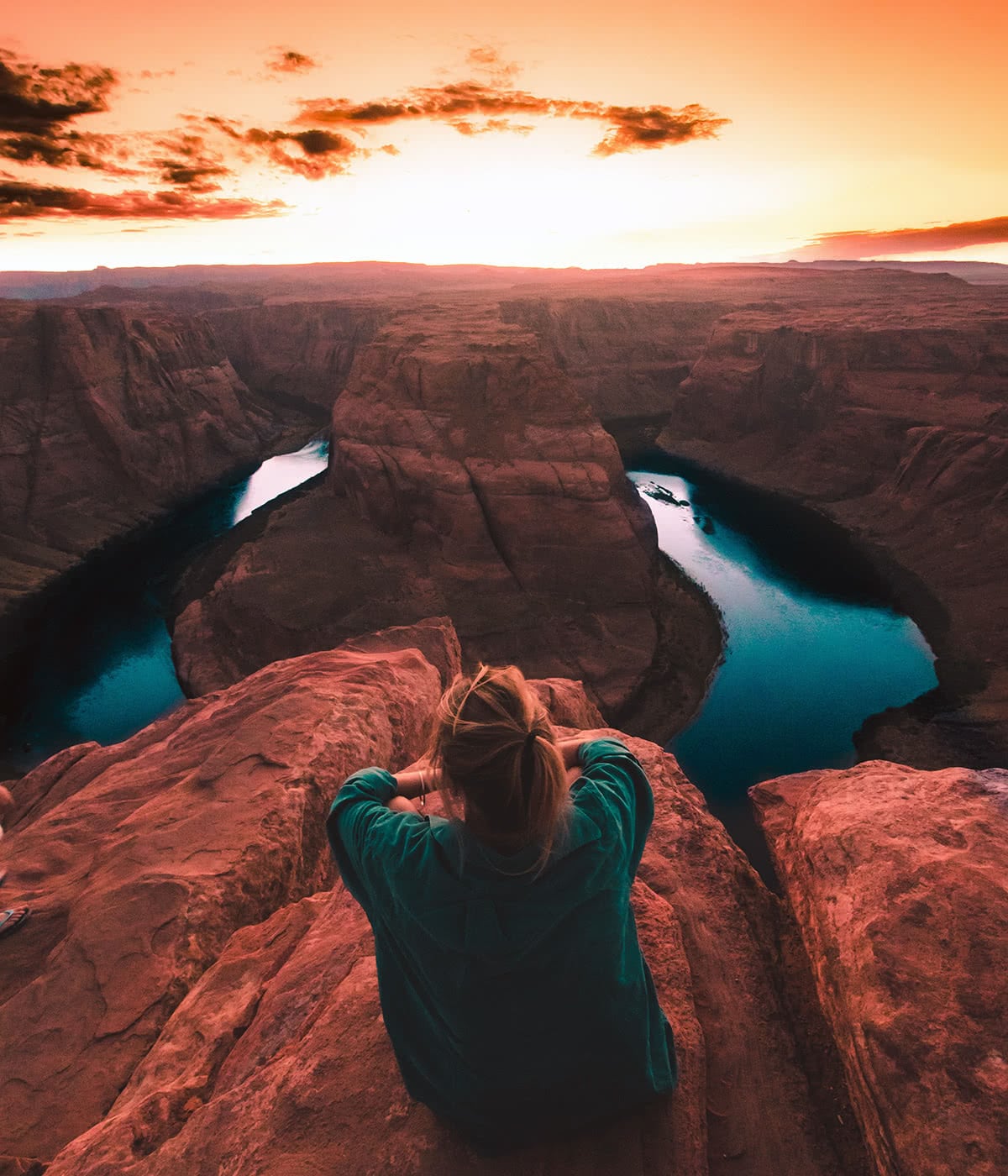
This is another critical opportunity for luxury brands to reach and interact with their affluent customers. Big data , in particular, can provide the necessary tools for marketers to engage in a meaningful and personalized way with their most valuable guests.
We need to be operating at the level of Google. Joe Leader, chief executive of the Airline Passenger Experience Association
“ For every passenger, we know every detail that serves as a marketing treasure trove of personalization, ” explained Joe Leader, chief executive of the Airline Passenger Experience Association, in a report ahead of this year’s Aviation Festival. “ We have full names, addresses, exact birthdays, seat assignments, credit cards, and everything that should make personalization easy. [9] ”
Delta Airlines, for example, is asking its flight attendants to engage in every flight with at least five passengers who are members of their SkyMiles loyalty program.
“ You want to feel valued, ” said Allison Ausband, Senior Vice-President of in-flight service to the Financial Times. [9] “ We are getting thank-you notes from customers for acknowledging them on the airplane. Whether apologizing for delays or acknowledging their [loyalty program] status, we make them feel that they are that valued customer. ”
A great example of the extra mile the Delta flight attendants are ready to go to delight their passengers took place last year when a passenger who was flying to an interview spilled a drink on himself. The airline informed their ground staff before landing and had a new clean shirt waiting for the passenger after he landed.
W Hotel: the impact of user-generated content
User-generated content (UGC) from guests isn’t just a source of travel inspiration. Luxury travel brands are now leveraging this organic and authentic social content to fuel every stage of the traveller’s path to purchase.
W Hotel Sentosa is a particularly great example of a luxury hotel that is successfully leveraging UGC. The very same day I posted about my time at W Singapore on my Instagram account, someone from their social media team proactively engaged with me, asking permission to repost my photos on their official social media accounts.
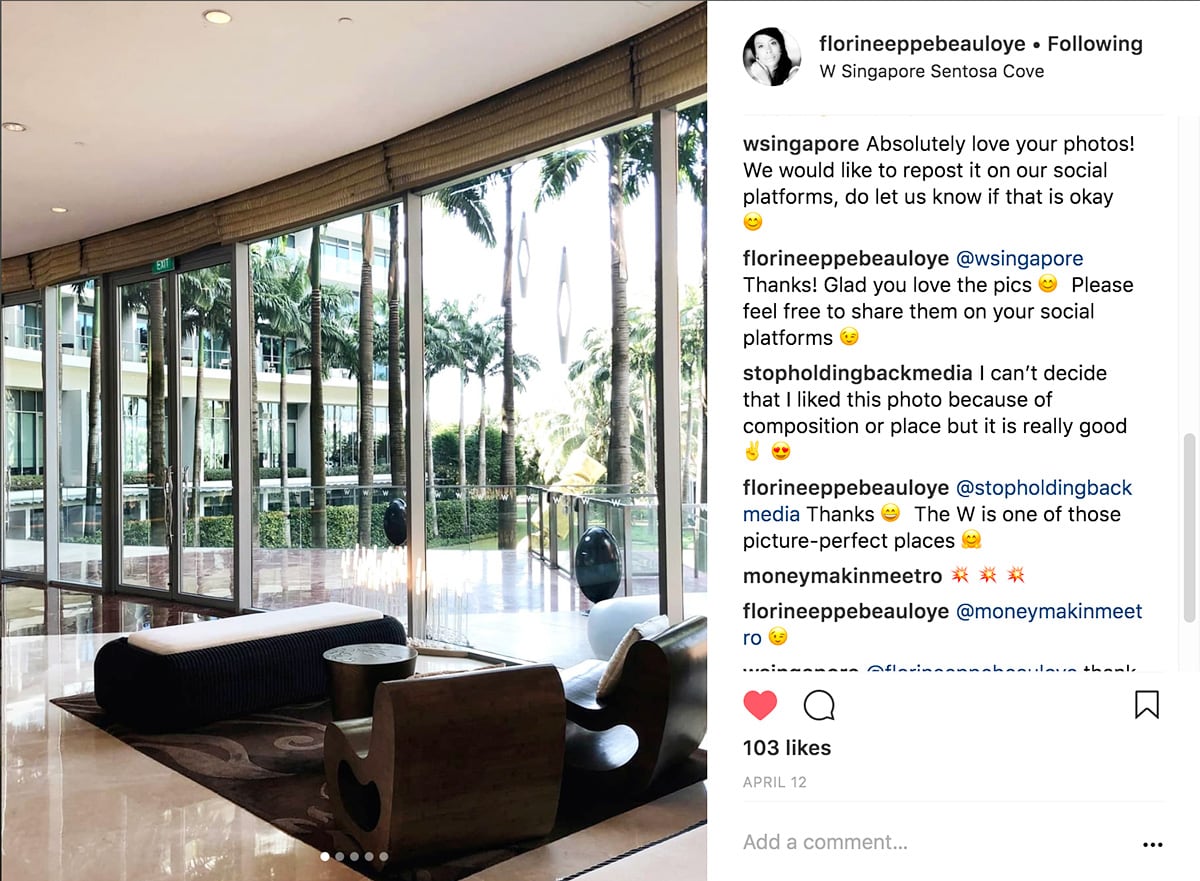
Mobile is the essential travel partner before and during a luxury travel experience
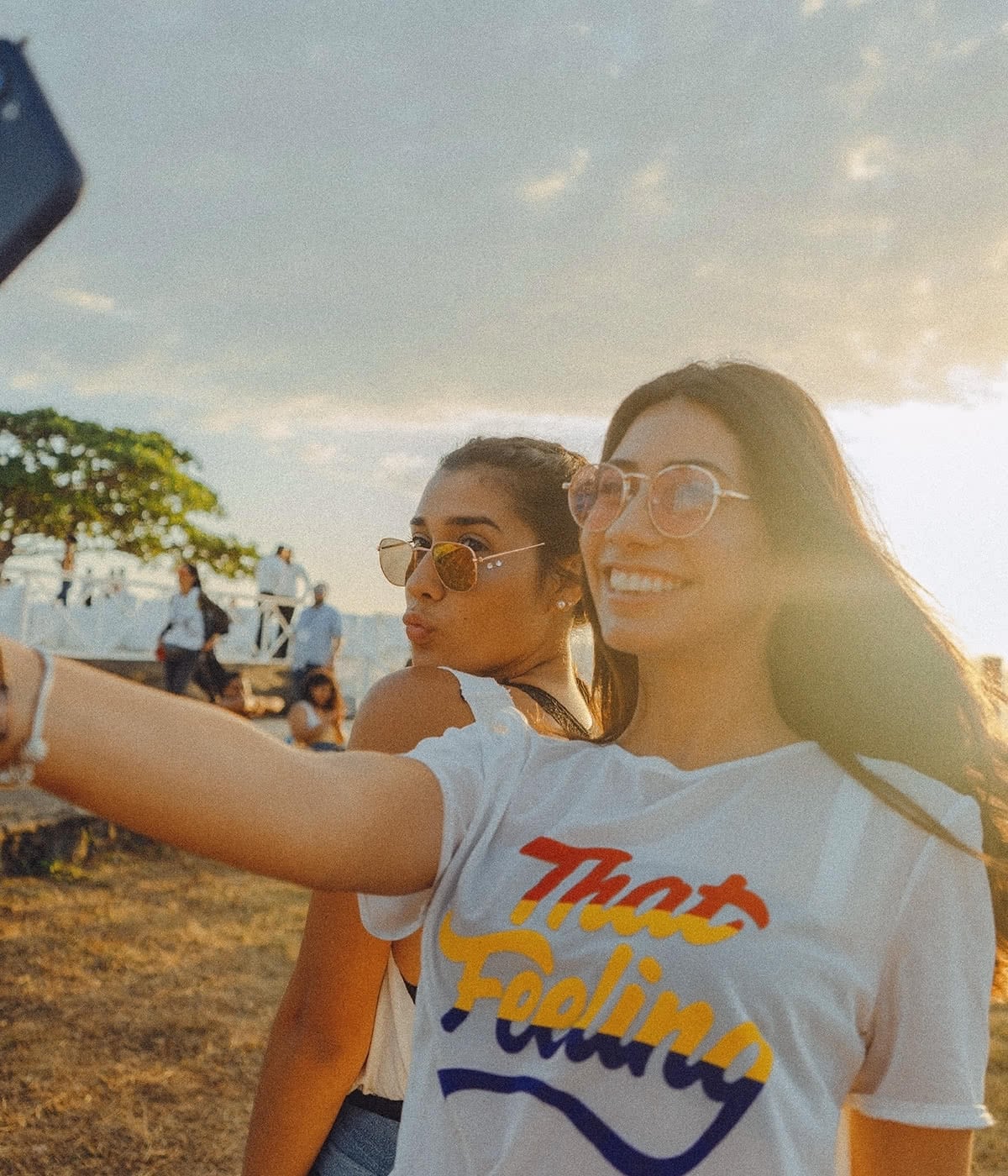
More than ever before, travelers increasingly rely on their smartphones for travel-related activities throughout the entire travel journey – younger generations even more so. In fact, Generation Z tourists are four times more likely to use a smartphone for inspiration, research, or booking travel than baby boomers, according to Expedia.
With mobile devices poised to account for 79% of all internet users in 2018 globally, [10] a mobile-first strategy is becoming a requirement for all luxury travel brands.
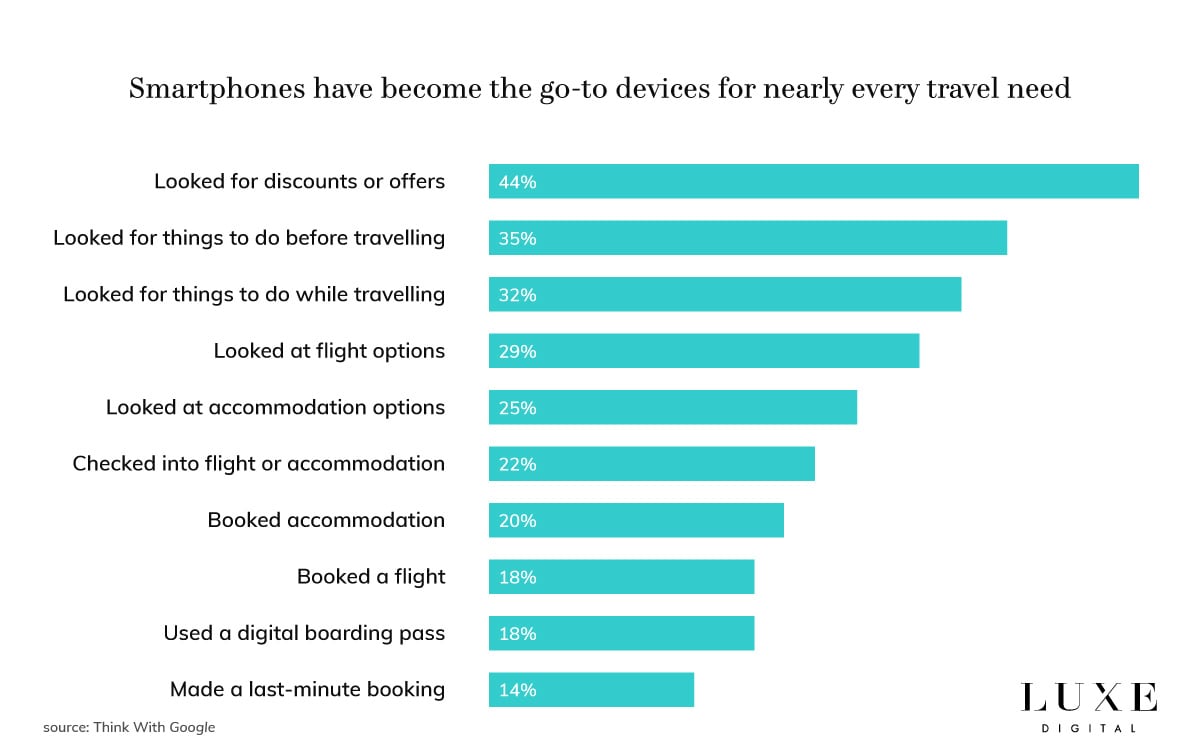
There is a significant opportunity for travel and hospitality marketers to influence travel-related decisions on mobile — by focusing their attention on mobile-friendly services, ranking in search results to answer travel queries, and being present during all the key travel micro-moments.
Before the trip: Mobile as an insightful travel guide
There are already more searches on mobile than desktop for travel categories such as family vacations and luxury travel.
Recent Google data have shown that in certain countries, half of all consumers are comfortable researching, booking, and planning an entire travel experience on a mobile device. [11]
During the trip: Mobile as an instantly responsive 24/7 travel concierge
Mobile devices give travelers increased flexibility to plan vacation activities on the go, while in destination. Mobile devices have become indispensable travel companions for modern affluent travelers, from managing itineraries to checking in and looking for what to do and where to eat.
Conrad Hotels: Instagram Butlers and picture-perfect luxury travel moments
The luxury resort The Conrad Maldives Rangali Island resort introduced in October 2017 their Instagram butlers described as “knowledgeable team members helping guests to discover the most picturesque locations”.
The dedicated Instagram Butlers bring guests on their #InstaTrail to the most Insta-worthy spots, including of course the famous (and highly photogenic) all-glass underwater restaurant Ithaa.

The Instagram Butlers also teach guests how to perfect that dream shot by offering advice such as the optimum time of day (including, obviously, the “golden hour” right after sunrise or before sunset) and the best camera angles to use.
The luxury resort also offers 1, 3, and 5-hour curated experiences through its global ‘Stay Inspired’ programme. This initiative “overhauls the way the brand trains its team members as storytellers of their destinations”.
Conrad hotels even have a Social Media Influencer Request form on their website, where digital influencers can submit their information and receive accommodation incentives.
Travelers expect seamless and instantaneous mobile experiences before, during, and after their travel. Indeed, when it comes to mobile experiences, speed matters. In fact, over 90% of travelers using mobile devices will switch to another site or app if their needs are not being met fast enough.

The travel sector has room for improvement in that regard. The average time it takes to fully load a mobile landing page for a hotel or airline is 6.7 seconds in the UK, 6 seconds in the USA, 5.6 seconds in Japan, and 4.8 seconds in Germany. With 53% of mobile users leaving a page that takes longer than three seconds to load, improving the mobile experience should be a priority for the industry.
Smartphones already allow hotel guests to unlock their rooms, share real-time vacation photos on social media or pay on the go with a mobile wallet. The ubiquity of smartphones, combined with the potential of new technology trends and innovations such as artificial intelligence, machine learning, cloud-based data, voice recognition, and more, is set to revolutionize the luxury travel industry in unprecedented ways.
This convergence into a singular mobile experience will allow luxury travel brands to move beyond reactive customer service to actually predict travelers’ needs and solve problems in real time, sometimes even before travelers know that they have an issue.
In conclusion: luxury travel brands need to go beyond the classic route
The digital journey of the affluent traveler promises many more adventures.

Predictive mobile services will gain momentum as affluent travelers increasingly expect luxury travel brands to understand their individual preferences to anticipate their travel needs and solve their problems in real-time or in advance.
For 72% of travelers with smartphones researching on mobile, their individual needs are more important than their loyalty to a specific brand. To win the hearts and minds of affluent travelers, it is thus critical for luxury travel brands to provide the most relevant information across all touchpoints at all the moments that matter:
- Identify the micro-moments for travelers that fit your business and be there to help.
- Be useful and valuable by solving each person’s needs across all travel moments.
With a majority of travelers, especially Millennials and Generation Z consumers, preferring travel experiences over material goods, the luxury travel and hospitality industry is poised to grow.
But as more travelers favor integrated travel resources and booking platforms, luxury travel brands will have to find new ways to be relevant and engage with their consumers.
Winning luxury travel brands will be the ones embracing mobile, big data, and innovative technologies to accompany affluent travelers through their entire customer journey. Off the beaten path.
- Travel Micro-Moments Guide: How to Be There and Be Useful for Travelers , Think With Google, July 2016.
- Worldwide Travel Path to Purchase 2017. Analysis Based on April – September 2017 Data Periods , comScore for TripAdvisor, April 2018.
- Hotels.com identifies new millennial Travel Brag trend: The “BRAGTAG” overtakes the humble HASHTAG as travel becomes the new social currency for millennials , Hotels.com, December 19, 2017.
- Travellers Overwhelmed as Funnel Becomes Pretzel , by Martin Kelly, Travel Trends, November 2014.
- Micro-Moments Now: Why expectations for ‘right now’ are on the rise , by Lisa Gevelber, Think With Google, August 2017.
- Digital Trends That Are Transforming the Travel Industry in 2017 , by Penny Harris, Huffington Post, March 2017.
- Travel Flash Report , Criteo, 2018.
- Making it easier to do business on Instagram , by Instagram Business team, Instagram Blog, May 2018.
- How airlines aim to use big data to boost profits , by Camilla Hodgson and Patti Waldmeir, The Financial Times, May 8 2018.
- 15 Mind-Blowing Stats About Mobile , by Giselle Abramovich, CMO.com, February 6, 2018.
- How smartphones influence the entire travel journey in the U.S. and abroad , Think With Google, February 2018.
About the author
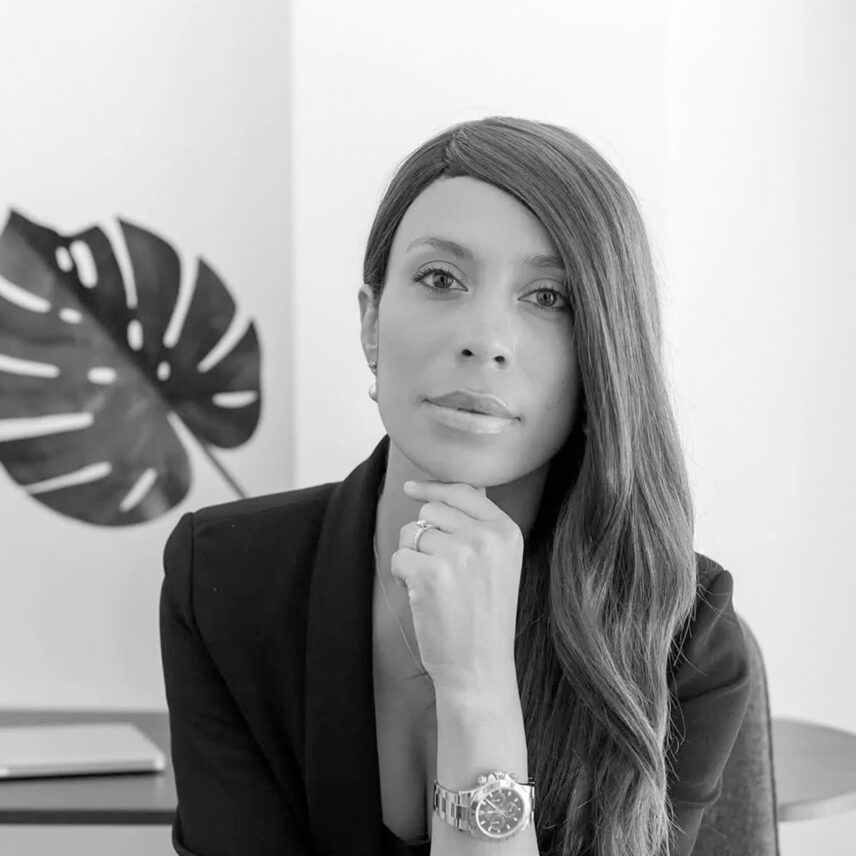
Florine Eppe Beauloye
Founder & editor in chief.
Florine Eppe is the Founder and Editor in Chief of Luxe Digital , and her achievements read like a book (she coincidentally wrote an actual book ).She is the definition of the modern-day multi-hyphenate—an award-winning digital entrepreneur, international speaker, praised author, and accomplished luxury marketer with a history of working with some of the industry’s finest names. She has appeared on stages across the world, and her insights in Forbes, The Financial Times, Harvard Business School’s academic papers, and more.
Learn more about Florine Eppe Beauloye

Cuyana Easy Tote Review: Going Places Has Never Been Easier
A life in motion made effortless.

Standing Tall: Oakywood Adjustable Desk Doesn’t Sit Still

Beyond Playthings: The Most Expensive 1000% Bearbricks Ever Sold

Eberjey Gisele Pajamas Review: Classic Cocoons Of Comfort

The Most Expensive Basquiat Paintings Are Message-Infused Masterpieces

15 Rarest Cars in The World – From Alfa To Zagato

Beyond The Velvet Ropes: London’s Most Exclusive Private Members’ Clubs

Luxury Lumber: The Most Expensive Wood In The World

Decadent & Diplomatic: The Most Exclusive Private Members’ Clubs In Brussels

Amberjack Boots Review: Part Boot, Part Sneaker, All Comfort
Proudly inspiring millions of readers like you .
Your Conscious,
Elevated Life
Starts Here.
- Striking superlatives
- Skift Research
- Airline Weekly
- Skift Meetings
- Daily Lodging Report
The Changing Business of Selling Luxury Travel
Related reports, executive summary.
Selling luxury travel today is all about options. Luxury travel brands are delivering more immersive, personalized travel experiences targeting a broader consumer base by age, source markets, and evolving traveler psychographics.
The surging expansion of global wealth worldwide, the emergence of new inbound and outbound markets, and new generation of highly critical, well-educated consumers are forcing the luxury travel segment to undergo unprecedented disruption. The sector is redefining itself and what the definition of luxury is. This report examines how some of today’s most forward-thinking travel brands are recrafting their value propositions in the luxury market today.
After speaking with many senior executives working in the tourism, hospitality, tour operator and cruise verticals, there are commonalities around how they’re selling their products to the luxe traveler of the future. The result of that can be succinctly identified as the “5 C’s of Luxury Travel” that work in unison to engage consumers physically and emotionally, online and in-destination, pre/post and during.
Those 5 C’s of Luxury Travel are: Culture, Cuisine, Community, Content and Customization. Regardless of the actual travel product or destination, these five combined elements are the primary drivers of engagement in luxury travel worldwide. More specifically, the best luxury travel brands are integrating them holistically to create more visceral brand engagement and expand audience reach. None of the 5 C’s are new. How brands are integrating and leveraging the power of each in new ways is.
Culture refers to both local culture and the cultural arts. Cuisine is the common connector across all traveler types. Community and content revolve around the power of virtual storytelling and compelling travel programming to bring like-minded people together. Customization is, of course, the biggest trendline in travel to personalize the experience for the individual user.
There are many other trends that luxury travel sales and marketing teams have identified, naturally, ranging from the rise of multi-generational travel to the robust growth in river cruising, but those are sector and psychographic-specific. The 5 C’s of Luxury Travel impact every travel vertical and every consumer.
Introduction
Waldorf Astoria Hotels & Resorts
According to the Spectrem Group’s 2015 Market Insights Report 1 , there are now 10.1 million households in the U.S. with $1 million or more in investable assets, excluding the value of their primary residence. That is the highest number since Spectrem began tracking data in 1997, and it’s well above the pre-recession peak of 9.2 million in 2007. Spectrum also reports there are over 29.5 million affluent U.S. households with a net worth between $100,000 and $1 million in 2014, not including primary residence.
From a global perspective, the 2015 Wealth Report states there are 172,850 “Ultra High Net Worth Individuals” worldwide with a net worth of at least $30 million, representing a 3% jump in 2014 over 2013.
According to a 2015 study conducted by IPK International, commissioned by the annual ITB Berlin travel trade show, luxury travel has increased 48% in the last five years. (Luxury trips are defined by IPK as shorter trips with spending over $840 per night and longer trips costing more than $560 nightly.) Luxury travelers from the United Arab Emirates, India, Kuwait, Brazil, Australia, Canada and China (in descending order) spent more than $1,100 per night on average.
“Turnover did not increase due to higher spending per person but rather from a rising number of travellers,” reads the study. “Growth drivers were, above all, new customers in emerging markets, who moved up into the luxury travel segment, or those who returned to the luxury market after the crisis, such as travellers from the USA.”
Also from the ITB Berlin report: In 2014, the world population undertook 46 million international luxury trips, and the market share of these trips has risen from 3.9% in 2009 to 4.6% in 2014. The largest source markets for luxury travel are the U.S., with 9.2 million foreign luxury trips, and China with 6.9 million. The report also states that about half of all luxury travelers book travel through a travel agent, which it emphasizes is a higher share than other demographics.
“Many travelers define luxury differently today to previously,” says Dr. Martin Buck, director of travel & logistics at Messe Berlin, the host venue for ITB. “Instead of magnificent hotel furnishings or so-called ‘bling-bling,’ an experience that is priceless in its own way can be enormously valuable. Luxury today means unique experiences combined with the highest levels of comfort and individual services. An increasing number of people are ready to spend a lot of money for quality… who want to enjoy luxury again after financially turbulent years.”
This ongoing shift in luxury travel, from a focus on expensive products and environments toward unique destination experiences that resonate with the individual, was something we heard over and over during the preparation of this report.
Tina Edmundson, global brand officer for Marriott’s luxury and lifestyle brands, told Skift, “Luxury in general is moving from accumulation of things to experiences. It’s not about here is where I stayed, but what I discovered. It’s about the exclusivity of experience that nobody else gets to do.”
Not surprisingly, Millennials are driving the shift. Among the North American consumer base, a larger than expected percentage of affluent households consist of Millennial-age adults, according to Henry Harteveldt, travel industry analyst with Atmosphere Research Group. His company reports that over 50% of U.S. citizens with a household income of $250,000 or more are under the age of 40, and they’re investing more heavily in travel than their parents.
“Today’s luxury audience under 40 grew up traveling so it’s part of their DNA,” says Harteveldt. “In the U.S., more than three in four luxury travel consumers say that travel is an essential part of their lives, so travel isn’t something they like to do. It’s something they love to do, and they have the income to indulge their passions.”
Harteveldt adds that U.S. consumers with household incomes exceeding $250,000 represent an anticipated $31.5 billion in online travel spending in 2015 (chart 1). That figure is expected to grow more than 3% in 2016. The next three largest online source markets are China, the U.K. and Brazil. Harteveldt says about 20% of that is mobile-only, creating a growing demand for more mobile-friendly travel content and on-demand booking functionality. That is revolutionizing the way travel brands are engaging audiences via targeted digital content strategy.
The above statistics collectively illustrate both the growth and growing age disparity of luxury consumers during a period of significant wealth increase. Aware of this, travel brands catering to the luxury market are expanding and evolving their product offerings in an attempt to capture the attention of a luxury travel audience in flux. The next generation affluent consumer is more formally well-educated, more critical and savvy about brand marketing, more technologically attuned, and much more well-researched in travel product than just five years ago.
As an example of that product expansion in the hospitality sector during Q3 2015, Four Seasons Hotels and Ritz-Carlton Hotels each have 34 new hotel projects in development. St. Regis Hotels, Shangri-La Hotels and Mandarin Oriental Hotels have 19, 17 and 14 new property developments underway, respectively, from New Delhi to Napa Valley.
The next generation luxury consumer is also much more open-minded than past generations. They prioritize personalization, inspiration, a sense of discovery, and a drive toward self-actualization above all else. That’s illustrated by the explosive rise among luxury product in the sharing economy. A sample New York Airbnb search for the first week in October 2015 shows 726 results for listings priced at $500 per night and higher. Moreover, Airbnb reported nearly 17 million guests in the summer of 2015, compared to 47,000 in summer 2010.
Luxury Travel Trends By Customer Age
In September 2015, Vancouver-based Resonance Consultancy launched its bi-annual Affluent U.S. Traveler Trends survey, which shows a couple of significant shifts in luxury consumer preferences.
In terms of preferred international destinations, Europe and the Caribbean continue to rank as the top two regions that affluent travelers of all age groups are either planning or considering to visit in the next 12-24 months (chart 2). However, Millennials are showing a much greater affinity for Asia, Australia/New Zealand, Canada and Mexico than their older counterparts. For example, the survey shows that 28% of Millennials are planning or considering a trip to Asia versus 13% of middle-aged respondents and 8% of seniors. For Canada, the numbers are 31%, 20% and 12%, respectively.
“It’s interesting that affluent Millennials, which make up about 16% of the affluent audience in America, have a much stronger attraction to the Asia/Pacific region,” says Chris Fair, president of Resonance Consulting. “So as we look at the younger group traveling further afield, that has some serious and profound implications for some of the traditional luxury travel destinations. It will also create new markets for destinations that typically haven’t seen a high percentage of American travelers.”
Another interesting shift in luxury traveler psychographics applies to what the affluent are doing while they’re traveling. In the Resonance survey, dining and sightseeing continue to be number one and two in terms of the most preferred activities (chart 3). However, rising into third place after moving up the ranks over the last five years, all age groups expressed a relatively equal desire to “learn new things.” Over 87% of all Millennials, middle-aged travelers and seniors responded that travel with an educational component is a priority for them.
This aligns with what Fair defines as the growing trend toward “transformative travel.”
“On a deeper level, transformative travel changes you and stays with you long after the temporal experience of traveling is over,” he says. “If you look at Maslow’s hierarchy of needs and self-actualization at the top of the pyramid, I think we’re now seeing travel as a primary means by which the affluent are achieving self-actualization.”
Fair argues that this is an opportunity for second-tier destinations to grow their affluent traveler segment, which he says controls an increasing share of total travel spend. Therefore, destinations should develop more educational and enriching travel product to attract the luxury audience, especially any types of experiences that provide shareable content on social media as a way to market and cross-promote those experiences.
“Cities like Portland [Oregon] and San Miguel de Allende in Mexico are great destinations that are focused on the quality of the travel experience for affluent travelers,” Fair says. “They don’t have any major attractions but there’s a lot of interesting and authentic things to do, especially with an emphasis on how you can immerse yourself in the destinations like a local.”
Delivering the Five C’s: Culture, Cuisine, Content, Community & Customization
Suppliers across all of the travel and tourism verticals are perfecting the luxury travel equation to attract the affluent customer in 2015. Today, the highest rates of conversion in the luxury travel segment are achieved by delivering a combination of the “Five C’s of Luxury Travel”: Culture, Cuisine, Content, Community and Customization.
Over and over again, those same five themes are coming together among the most sophisticated tourism, hospitality, cruise and tour operator brands in terms of both their product delivery and promotional campaigns. Combined, the five themes engage consumers’ mind and emotions in different ways from different angles, impacting the entire decision-making, purchasing and travel experience journey.
“Those five C’s are weaved into our thought process, and really the evolution of our brand,” says Jim Petrus, global brand leader for St. Regis Hotels & Resorts. “If you look at the customization element, especially, the reality is that we live in a world today that’s about “me.” So the successful luxury hotel companies today have the ability to make that consumer feel like the experience is in fact customized and it truly is about them.”
Here’s a brief overview of the Five C’s of Luxury Travel:
Culture: Culture is multi-dimensional, referring to immersive travel in local culture, programming around the cultural arts, and the consumer-facing culture of the travel brand and what it implies to the identity of consumers. Culture applies to the aforementioned concept around the growth of transformative travel where consumers want to be inspired with new perspectives to evolve as human beings. Culture, in all manifestations, relates to the path toward self-discovery that occurs when travelers are introduced to people and places that provide a platform for personal insight and development.
Cuisine: Good food and drink are now table stakes for the luxury consumer. They are merely the price of admission into the luxury travel marketplace, because every luxury traveler today is a self-anointed foodie thanks to an onslaught of travel and culinary media showcasing great chefs and great places to eat. Without exceptional dining experiences, you lose the luxury customer immediately because good food is the ultimate analog connector and a direct link to local culture.
Content: Content storytelling and travel product programming are the glue that connects luxury travel brands and luxury consumers through shared online and in-destination experiences that resonate with travelers’ emotions and egos. Women especially, who play a larger role in leisure travel planning for couples and families, have an inordinate amount of digital tools to first plan their trips and then chronicle and save them. Luxury brands today win the hearts of consumers at the very beginning of the travel planning dream phase with content.
Community: Community is the magic. Community first develops when people share content online among family, friends and strangers about the possibilities that luxury travel promises. Community also refers to those serendipitous moments when like-minded affluent people with common values spontaneously gather during travel experiences that are aligned with those common values.
Customization: The biggest trendline in travel today is personalization. Every luxury travel brand is attempting to customize the travel experience for the individual user by building more sophisticated traveler profiles and developing more exclusive programming that travelers can’t re-create on their own or with any other brand. “Customization is how we can differentiate our brand from others,” says Petrus.
What The Next Generation Luxury Customer Wants
Butterfield & Robinson
The discussion about what luxury travelers want in 2015 has evolved well beyond the shift away from hushed lobbies and stuffy dining rooms, white glove service, overbearing decorum and obsequious service.
Most people today are also well aware of the trend toward more experiential luxury travel, which is not longer a brand differentiator on its own. Looking ahead, luxury travel suppliers and travel advisors are increasingly selling more immersive experiential travel that connects clients as closely as possible with the people in the destination to create the most immediate and authentic experience as possible.
“What the next generation of luxury travelers want now is transparency, a sense of urgency, and engagement, because people don’t want to go to a destination to be an outside observer anymore,” says travel consultant Jack Ezon, president of Ovation Vacations in New York. “They want to be more immersed in their surroundings and feel like they’re living like a local. Millennials take it to another extreme. The younger client, I’ve found, wants a cool person who’s an insider to really be more of a host than a guide.”
Ezon says he and his travel advisor colleagues are seeing demand in the luxury space for opportunities where clients can have extensive conversations with locals to better grasp what the culture is like in destinations ranging from Dubai to Vietnam. They want to explore the hip pop-up shop or restaurant in New York or Buenos Aires, and see how New Yorkers and Argentine porteños really live.
“They want more of a confrontational, and I don’t mean that in a negative way, understanding of what it really means to be part of a certain culture,” he explains. “Not from an outsider, polished point of view.”
To facilitate that, Ezon forms relationships with small travel companies who supply hosts for group and individual travelers, and who focus on local cultural context more than just facts and knowledge. Because, traveling with a guide should not be a case of just ticking off all the iconic boxes in a destination. He says a lot of his Millennial and Gen X clients are not interested in seeing the Great Wall of China. Instead, they want to know the best places to experience nightlife in Beijing.
“So you’re not just looking at stuff,” says Ezon. “You’re listening to what you’re hearing and observing more of what you’re seeing. You’re really taking it in and experiencing it from a new perspective. I mean, you can look at something and not really see it.”
As an example, one of his favorite travel experiences in the last year was Hanoi where he talked at length with two thirtysomethings about the “American War.” Ezon says they wanted to know just as much about what Americans thought about the Vietnam conflict as much as he wanted to know about the legacy of the war there.
“And these conversations don’t just happen in a coffee shop,” he says. “Our clients are touring the city at the same time, maybe in a rickshaw ride or something like that. The modern traveler is not interested in using a tour operator as we know it, and if a tour operator doesn’t evolve, they’re probably not going to survive. We’re working with more of these smaller, more nimble, more personalized companies that are based locally.”
Tour Operator Case Study: Biking Is The New Golf
Heading into its 50th anniversary year in 2016, Butterfield & Robinson is a high-end tour operator specializing in “slow” biking and walking itineraries with upscale dining and accommodations. CEO Norman How says the idea of biking tours for the luxury segment is surprising to some people, but the trend toward wellness over the last two decades has spurred demand for active luxury travel for small groups and customized independent consumers. Biking and walking also inject affluent visitors more directly into communities in new and unsuspected ways.
“The appetite has shifted from what we might call trophy hunting, or that kind of blatant aspect of luxury travel, to one that’s more about the experience,” says How. “In newer markets like Russia and China, you still see consumers very much focusing on the bling aspect. Latin America, particularly Brazil at the very top end of the market, is moving into that space of really valuing the experience over hard luxury goods. In the American market, it is probably the most advanced in terms of where the market is focusing looking at the future.”
Chinese Travelers Chinese President Xi Jinping’s crackdown on government corruption over the last two years, and the 3% devaluation of the Chinese yuan/renminbi currency against the U.S. dollar in August, have both had an adverse impact on Chinese spending on luxury good and travel. Following the currency devaluation, Deutsche Bank announced, “We think persistent renminbi devaluation would lead to more expensive outbound packages, which would in turn slow down the explosive growth in outbound travel.” In 2014, according to the China Luxury Advisors consultancy group, Chinese travelers still booked an estimated 115 million international trips, up 18% over 2013. The U.S. Department of Commerce reported that inbound Chinese tourists traveling to America jumped 22% in July 2014 over July 2013. Furthermore, President Obama in November 2014 announced a new reciprocal visa agreement between the U.S. and China, which extended tourist visas from one to 10 years. Chinese-based Ctrip.com reported that U.S. visa applications shot up 50% shortly thereafter.
As an example of a recent client trip that could never be created by a client alone, Butterfield booked six people inside the house of a village chief in the Shan region of Myanmar. There’s no real tourism infrastructure there so B&R brought in beds, linens and furnishings to create a private pop-up hotel for three days.
“That kind of experience tends to be much richer than staying in the grand suite at the best hotel somewhere,” suggests How. “There’s a growing demand for savoring experiences more by traveling slowly versus quickly, so it’s much more of a local and human sort of pace.”
Of course, there’s still an expectation of high calibre infrastructure but there’s more demand for more customized travel out of the ordinary, which biking helps deliver in a unique way. According to How, he says putting someone on a bike gets them into the kind of landscapes and cultures where spontaneity happens easily, and where people are further removed from their normal lives.
“One of my favorite places to go biking is Vietnam, and not because of the pure biking experience, but when you get on a bike in Vietnam you’re suddenly entering the flow of local life,” he explains. “It’s like you’re in the middle of a river next to people with five pigs piled up on the back of their bike. That notion of tapping into the rhythm of local life is a big part of what people want. It goes back to the demand for authenticity and experience.”
“Biking is the new golf,” adds Ezon. “The growth opportunities in the market for specialized active travel is huge.”
How Mature Luxury Destination Brands Are Targeting Millennials
The first annual Impressionist Festival in Normandy, France in 2010 attracted over one million visitors to the region north of Paris with over 250 special events during the four-month event. In 2013, the second festival welcomed over 1.8 million visitors with over 700 events. Due to that success, the 2016 program is being extended an additional six weeks. The sum total of experiences at the Impressionist Festival offers an unlimited amount of choice for luxury travelers to personalize their travel experience. The success of the festival is based on the integration of the five C’s.
How Hotels Are Redefining Luxury The shift in luxury travel toward a more nuanced, educational and immersive destination experience is impacting hotel design and programming. Two Marriott brands, JW Marriott Hotels and EDITION Hotels, for example, deliver this in polar opposite ways. Typically a business travel brand, JW Marriott has opened new urban resorts recently in tourist destinations like Venice, Italy and Cuzco, Peru near Machu Picchu. Both properties emphasize educational experiences relating to the destination. The Peru property showcases area artifacts with in-depth contextual information, and the Venetian private island property teaches guests glass-blowing and lace-making inside a series of preserved buildings. “So there’s a strong knowledge takeaway there, based on the authenticity of the experiences designed with a deeper, more powerful sense of care and intelligence,” says Tina Edmundson, global brand officer for Marriott’s luxury and lifestyle brands. “JW really leans into this idea of leaving better than when you arrive.” Edition Hotels is one of the few hotel brands to successfully straddle luxury and lifestyle experiences. The New York Edition, for example, is polished and serene on the street level ground floor with pale, minimalist decor. On the second floor, the bar and restaurant rooms are a lively counterpoint with a much more eclectic ambience. The London and Miami Editions feel like a grand living room of their respective cities, each filled with food and beverage areas organically integrated into their activated lobbies. “The Edition customer is interested in something very unique,” says Edmundson. “The hotel is a microcosm of the best of what a city has to offer, and that itself is a luxury.”
“The Impressionist Festival after the first year got a huge amount of coverage because it’s about the connection between food and art and experiencing the country of France in new ways,” says Anne-Laure Tuncer, U.S.A. director of the France Tourism Development Agency. “Luxury travelers today want to upgrade their stay, add more activities, hire personal guides, sleep in private villas and things like that. They are out to discover new places and new people in countries that they have already been to.”
Tuncer adds that about 20% of U.S. travelers visiting Paris in 2010 ventured to other destinations beyond the greater metro area. In 2015, that number topped 30%, illustrating the growth in demand for more adventurous travel experiences offering a greater sense of exploration and discovery.
“People want to be inspired, so we’re showcasing an entire region that gives people so many things to choose,” says Tuncer. “People also want behind the scenes. They want to understand why the product is what it is and why it’s special or why it took so long to create.”
Content and community are inherent aspects of any festival but they reach a new level here in the historic city of Rouen and the magnificent Rouen Cathedral that plays the role of ad hoc festival headquarters. From here, thousands of tours lead to the same pastures where some of the world’s most famous paintings were created, the coastal cities of Honfleur and Deauville, and Monet’s home in nearby Giverny. The opportunities for discovering and engaging with such a large volume of like-minded people are endless, as are the options for sharing content online, which many of the area destination marketing organizations reshare. The Impressionist Festival is basically evolving into a marketing tour-de-force for all of northern France.
Content and community partnerships are how mature brands are ensuring their relevance for next generation luxury consumers. The Principality of Monaco provides an interesting example of how destination marketing organizations are developing partnerships with non-travel brands to open up new markets and cater more to Millennials at the same time. This year, for example, Monaco partnered with Jazz at Lincoln Center in New York to engage younger, educated audience members with an appreciation for culture. The jazz theme also aligns with the shift toward more relaxed, unbuttoned luxury.
“The Jazz at Lincoln Center is an example of how we’re engaging a younger audience in a lively and spirited way, although it was really more about attracting Millennial people than jazz people,” says Cindy Hoddeson, U.S. director of the Monaco Government Tourist Office. “Affluent Millennials, and every other generation for that matter, are more focused on authentic experiences with their money and not just goods. There has definitely been a shift toward more casual luxury as well, so not everyone feels the need to wear tuxedos in Monaco as much these days.”
In a similar initiative, Monaco developed a co-marketing partnership with the Dr. Zhivago Broadway theater performance to promote the 2015 Year of Russia programming in Monaco. The principality arranged a year-long schedule of special events celebrating Russian cultural heritage, and the collaboration with Dr. Zhivago gave Monaco access to both the U.S national arts media and culturally attuned luxury consumers. The DMO also developed the MonacoRussie2015.com website in an effort to push more content marketing, which Hoddeson says is a major focus for her organization.
“Content marketing is becoming much more relevant in terms of telling our story to people and utilizing digital communications to interact more with affluent travelers today,” she says. “I think people relish the hunt and discovery of a destination, and that is something we’re trying to develop by creating alliances with like-minded organizations in the United States, like the Jazz at Lincoln Center and Broadway community.”
Also according to Hoddeson, a big challenge for legacy luxury travel brands with a perception of being expensive is showing value for spend. “People don’t hesitate to spend money but they do want value, there’s no question about that,” she explains. “So our hotels are focusing on individualization as part of the value proposition. People are willing to pay for the highest levels of luxury but they want to feel like they’re getting something special for what they’re investing in.”
How One Upscale Destination is Building Community With Content
VisitBritain is launching an entire new web platform in October 2015 to better engage customers and build community with content highlighting more local destinations beyond the iconic cities and tourist attractions in London and Scotland. This is squarely aimed at the more adventurous and curious-minded traveler, especially returning visitors who have already visited London and the surrounding countryside.
“Our average age of that group of people who want to do cutting-edge things is 43, which is not what you would think, but they are the ones who want to get up and do stuff,” says Sally Balcombe, CEO of VisitBritain. “What we’re seeing is we’re looking at people differently, and what we’re seeing is that they want to experience things rather than look at things.”
VisitBritain’s popular “Countryside” campaign is an example of what to expect with the tourism bureau’s new website. Balcombe says that the overarching mission is all about promoting the idea of the British countryside to a luxury audience that doesn’t just want to look at castles and hear a long, lengthy list of historical trivia.
“They actually want to go in and live, breathe and immerse in the culture,” says Balcombe. “Basically they want to have experiences, and we want to change their perception about the experiences that they can have.”
That’s only half of the destination marketing strategy. The other half revolves around VisitBritain shifting the focus away from itself toward a cadre of popular travel influencers in England, Scotland, and Wales. The new website will provide a larger platform for these content providers to share their experiences with their existing network and expand those communities with VisitBritain as the conversation hub.
“So it’s about not we as VisitBritain talking at these groups, but actually getting people that visitors respect to talk to their audiences about what it’s really like to come over here and experience things,” Balcombe says. “The influencers were out on the road doing stuff and sharing stuff, so that’s a very different type of campaign, rather than the national tourist board saying, “Come. In Britain, you can do this.”
Case Study: Shifting a Destination Brand Toward the Luxury Customer
Tourism Australia
Australia provides an excellent case study of a destination with a strong brand perception that wanted to shift that perception toward a more upscale audience. For decades, the country was known as fun, laid-back and outdoorsy thanks to the high-profile campaigns selling that image dating back to the 1980s.
In December 2011, Tourism Australia unveiled a new 2020 strategy with the objective of growing Australia’s tourism spending to $114 billion by targeting luxury consumers across all key markets. To accomplish this, the DMO is developing an integrated series of new campaigns highlighting ways to experience Australia with more unique, upscale and location-specific activities. The campaign themes revolve around food/wine, coastal/aquatic destinations, indigenous culture, and travel product “collections” branded by Tourism Australia, such as Luxury Lodges of Australia and Ultimate Winery Experiences of Australia.
Kicking off the 2020 strategy in May 2014, Tourism Australia launched a $10 million, multi-platform Restaurant Australia campaign to raise awareness among luxury travelers about the upscale food/wine product across the country. After one year, the DMO measured a 22% increase in the perception of Australia as a foodie destination among people who hadn’t visited before. Moreover, international visitor arrivals in Q1 2015 jumped 10% and visitor spend increased 14% over 2014.
Tourism Australia also developed a variety of content partnerships aligned with culinary culture such as “Avec Eric” with celebrity chef Eric Ripert at Le Bernadin in New York. Similar to Anthony Bourdain’s television work, Ripert travels around Australia to meet innovative chefs and suppliers while showcasing the diversity of the country. In a similar vein starting in January 2016, chef Rene Redzepi from the Danish restaurant Noma is opening a pop-up restaurant in Sydney for 10 weeks. Noma has been voted the best restaurant in the world numerous times over the last decade. This type of culinary coup works well to promote a destination like Australia as a culinary capital, as evidenced by chef Heston Blumenthal’s six-month reconstruction of his British restaurant, Fat Duck, in Melbourne this year.
Also launching in January 2016, the next big Tourism Australia marketing initiative is focusing on Coastal & Aquatic Australia. Food will still be an important component of the content vision to drive attention to Australia’s luxury coastal lifestyle, especially beyond the major cities.
“A lot of our research has said that our searches for beaches and our searches for islands has dropped significantly from where they used to be,” says John O’Sullivan, managing director of Tourism Australia. “Whereas Restaurant Australia is about addressing a misconception, this is about playing to a strength that hasn’t been focused on for awhile.”
Customer Data Collection is the #1 Priority Disrupting Hospitality
The hospitality sector provides the most interesting lens in the travel marketplace into innovation in luxury travel and luxury travelers’ changing expectations. Surprisingly, many hotel sales/marketing staff and C-level executives continue to trumpet “anticipatory service” as a differentiator, but this is no longer a true differentiator because it’s expected and delivered even in the upper mid-market hotel space.
During the development of this report, numerous hotel executives explained a scenario like the following to show why their brand is special, when in fact it’s relatively common. For example, a family tells their server at dinner that they’re in a hurry because they want to catch the eight o’clock finale of a reality game show. The server then tells the restaurant manager, who asks a room attendant to deliver a bowl of popcorn to the room at 8:15.
That’s a cute and charming story but it happens at all luxury hotels and it’s not enough to drive incremental revenue in 2015. Today, the focus has shifted toward personalizing the guest experience in all of its manifestations.
“Personalization of the experience is the most important mandate of the luxury guest, because customer relationship management and serving unique content are now expected and old fashioned,” says Samuel Chamberlain, director of luxury sales, Asia/Pacific, for Hilton Worldwide. “In order to win the heart and advocacy of the luxury traveler today, experiences must be bespoke and personalized.”
Toward that end, Waldorf Astoria Hotels & Resorts recently developed a program called “True Waldorf Service,” where a personal concierge contacts the guest ahead of the stay to gather the client’s travel preferences. Upon arrival, the concierge meets the guest in the lobby, bypasses the check-in desk, and takes them directly to their room. During the stay, the concierge helps the guest book activities, recommend a specific spa treatment, etc., based on the initial knowledge gathering phase.
At St. Regis Hotels, over 60% of bookings come through the Starwood Preferred Guest (SPG) channel, where the hotel company can collect a significant amount of data detailing personal guest preferences. Complementing that, the St. Regis butlers collect more personal information that guests wish to share, and then it’s their responsibility to enter that information into a proprietary database in the property management system. That data includes things like preferred room temperature, food and beverage choices, specific times for housekeeping, details regarding turndown, etc.
“Those are elements that would say to me, because this is all about me as a luxury customer, that you know something about me and you delivered on what my personal tastes and desires are,” says Jim Petrus, St. Regis Hotels’ global brand leader. “And we can replicate that because our butler program is worldwide, so we’re able to take robust data and combine that with an effective delivery service through the butler program.”
Petrus adds that St. Regis is developing a new app for launch in 2016 designed to extract further customer preference details out of the point-of-sale system and the property management system. The algorithm will identify trends among customer-specific buying patterns, such as food and beverage preferences collected from menu selections.
“That will assist us with pre-arrival information that will enhance our data drive and our butlers’ ability to execute even further,” says Petrus. “At that point, we’ll be able able to connect more dots of different nature, so we know really what creates the pulse in that customer, to make the customer experience even more personalized.”
How Content and Community Are Leading to Hotel Booking Conversion
Peninsula Hotels, St. Regis Hotels and Waldorf Astoria are good examples of how hospitality brands use content and community, revolving around destination-specific cuisine and local culture to customize the luxury guest experience and drive incremental direct bookings.
In April 2014, Peninsula Hotels redefined online travel content marketing in the hospitality space with a new website including over 1,400 pieces of individual content highlighting both destination and hotel programming. Since then, Peninsula has uploaded over 500 new content pieces, including 40 new branded videos.
“The website exceeded expectations in every way in terms of more conversions,” says Robert Cheng, group VP of marketing for Peninsula Hotels. “In the first year, we saw a 35% jump in direct bookings. It’s all about options, so we add about ten new content entries per week, which is radically improving time onsite. It’s important because we want to position ourselves as experts in each destination.”
According to Eliza Wan, e-commerce manager/marketing for Peninsula Hotels, “Traffic increased by 20%, so users are showing much stronger engagement with the new site. Over 32% of the visitors consumed video and over 50% of them touched on the booking funnel on the website.”
Peninsula partners with companies like LUXE and Net-A-Porter to develop content for both the website and a series of new on-property destination guides. Some of that content revolves around the Peninsula Academy of travel experiences designed to immerse guests in the local culture in ways that are aligned with the brand’s value proposition. For example, Peninsula Paris offers a $4,200 La Vie En Rose day package for two billed as “The Ultimate Parisian Experience.” The itinerary includes a well-respected fashion expert who will escort guests to the flagship Hermes store for shopping outside of normal business hours. That’s followed by a visit to the salons of famed couturier Elsa Schiaparelli, who was a contemporary of Coco Chanel.
“The Peninsula Academy has been around since 1997, but it was revitalized two years ago to offer more refined things that you couldn’t do on your own,” says Cheng. “An exclusive tour of Hermes is not something where you can just knock on the door and ask to come in. That experience also comes with very insider access with someone intimately familiar with the fashion houses in Paris.”
Peninsula Academy activities have also been adjusted to align with the rise in multigenerational travel, which Cheng says is even more pronounced in Asia. On the landing page for each Peninsula property, all of the Academy experiences are listed and each features activities for families to do together. A sample of those include making wind chimes in Japan or learning puppet making from masters in Shanghai and Hong Kong.
Looking forward, Cheng says the company is “exponentially expanding” its investment into videos with a strong story hook and high production values. One example is a video shoot with monks at the Wat Pho temple in Bangkok where Thai massage was invented.
“We’re all inundated with so much messaging so everyone is wary of generic messaging,” he explains, “The Peninsula story is told better with more visuals so we’re developing tons of video, but they’re not commercials, they’re narrative storytelling.”
Waldorf Astoria Hotels is developing more unique programming with its new Signature Experiences initiative at each property, focused on crafting experiences ranging from gladiator training at the Waldorf Astoria Rome Cavalieri to dog sledding at Waldorf Astoria Park City. A handful of the hotels also offer Waldorf Astoria Driving Experiences following a successful test run in 2014, where guests can drive exotic cards to explore the surrounding destination. These experiences are curated by the hotel teams and, according to Chamberlain, they’re designed to make each Waldorf Astoria “more of a destination in itself rather than just another 5-star luxury hotel.” Driving experiences also open up infinite opportunities for spontaneous food and cultural discoveries throughout the region.
“I believe that the biggest shift in luxury traveler psychographics over the past five years is in the explosion of choice and development of luxury hotels, and how luxury travel brand experiences now have a similar affinity and cachet in the eyes of consumers as hard luxury goods,” Chamberlain says. “The luxury traveler is now spoiled for choice, and as a result has developed a personal affinity for particular luxury brands that resonate due to the emotional connections that they offer.”
St. Regis Hotels also continues to develop its exclusive Aficionado destination experiences. Petrus says, “They’re designed to bring the specific destination to life in a meaningful fashion.” In New York, for example, guests can book backstage access to some Broadway shows. In Napa, the hotel provides wine tours with winemakers and private cooking classes with celebrity chefs like Jean-Georges Vongrichten.
“So these things are one-of-a-kind with exclusive access that’s tied to the destination and to the particular features and amenities of the property,” says Petrus. “Being able to come up with hard-to-replicate packages and access programs have helped define what St. Regis is all about.”
How Cruise Companies are Engaging the Next Generation Luxury Traveler
Positioned as Carnival Cruise Lines’ luxury tier, the Seabourn brand consists of all-inclusive, all-suite small ships with staff sourced primarily from Europe and South Africa. According to John Delaney, SVP of marketing and sales at Seabourn, the evolution of luxury has surpassed well beyond good food and service, which he calls table stakes, and the bar continues to rise every year. Presently, Seabourn is rolling out a restaurant partnership with Thomas Keller, one of America’s highest rated chefs.
Rather, the focus for selling luxury cruise travel has shifted toward more enriching and educational destination experiences for the more erudite, educated traveler.
“The luxury industry brands have really stepped up their game because the luxury customer today is accustomed to highly personalized and authentic travel,” says Delaney. “Today’s luxury traveler wants the destination delivered to them just as well as the service onboard the ship. So if we’re going to South Africa, for example, we have a speakers onboard who are experts in South African wine.”
In January 2013, Seabourn launched “Seabourn Conversations” with business and cultural leaders such as Steve Forbes, Steve Wozniak, and film producer Jon Landau. They and others given scheduled presentations and made themselves available for casual conversation with passengers. Delaney says the small ship sizes help foster and facilitate those intellectual collisions.
In June 2014, Seabourn partnered with UNESCO World Heritage Sites to bring aboard speakers familiar with the history of the sites included in any given Seabourn itinerary. Today, the cruise company’s land programs visit over 150 UNESCO sites, so Seabourn partnered with Our Place: The World Heritage Collection, which sends photographers around the world to document the 1,007 UNESCO sites. In turn, they’re invited aboard the Seabourn ships to kickstart the onboard educational journey for passengers previous to visiting them in person.
Delaney says, “This way, guests have a much deeper appreciation of why a site is inscribed as a Word Heritage SIte. Most people don’t have a very in-depth perspective about the cultural significance of each one.” Average participation at the Our World presentations exceeds 70%, which is high for these types of experiences, and at least least 50% of the trips have UNESCO speakers. The talks are also recorded to provide content for the in-room entertainment systems.
Likewise, the surging growth of river cruising is driven by the demand for more in-depth destination experiences. River ships spend a lot more time in port than they’re seagoing counterparts, providing more opportunities to connect with the local culture.
Uniworld is positioning itself as a leader in luxury cruising with a lower passenger/staff ratio and custom designed ships, such as the new 445-foot S.S. Catherine with capacity for 150 guests. Uniworld President Guy Young says the industry norm for that length is 190 guests, which impacts the destination experience depending on the number of people per land itinerary.
“A lot of companies are trying to maximize the passenger count per every square inch of space,” says Young. “Also, we used to arrive in port and everyone would go on the same standard experience, but we’ve been observing over the last few years an increasing demand for more immersive land excursions. Now people want smaller groups and more options in terms of the number of excursions, so we’ve radically changed how we offer our excursions to deliver more personalized travel opportunities.”
Today, there are now at least two to three land-based options per destination stopover designed for different traveler types. They include Regular and “Gentle” walking tours; “Go Active” tours for more athletic individuals; “Do As The Locals” tours to food markets and other non-touristy venues; and various “Village Day” excursions that bring passengers face-to-face with locals, such as a homemade meal in a resident’s house.
“So this whole idea about personalization and customization and getting to know the local culture has been implemented into our sales strategy to resonate with the luxury modern traveler of today,” says Young. “That’s working out really well, because personalized attention really helps attract the younger demographic.”
Top Five Takeaways for Selling Luxury Travel
Holistically integrate the 5 C’s of Luxury Travel — Top travel brands combine culture, cuisine, content, community and customization throughout the travel journey from the dream phase to the return home, both online and in-destination. None of these exist within their own silos anymore, and they should be designed to cross promote each other to resonate fully with customers’ emotions.
Luxury today is all about options — The more options available to the luxury traveler, the more they can customize their travel experience. Within every travel product, integrate different tiers of experiences at different price points, so customers are in control of creating their own travel journey aligned with their personal preferences.
Educate, inspire, create a path to self-discovery — Luxury travelers today are seeking to develop as more evolved human beings, as emphasized at the top of Maslow’s Pyramid, and they’re using travel to fulfill that quest. Travel brands should ensure their customers end a trip with new perspectives that will change their views and open their minds in some demonstrable way long after they arrive home.
Immersive experiences are the new experiential experiences — Just because luxury travelers are doing something experiential doesn’t necessarily mean they’re experiencing the destination with any authenticity or depth. There is unquenchable demand for more Immersive travel to understand the essence of a destination, and the most successful brands are providing a more direct connection to that essence of place.
Content + Community = Conversion — Better travel programming leads to better content. The best luxury brands are developing more and more content to engage customers at the top of the marketing funnel, and every one of them says that leads to more conversions. Furthermore, all marketers know that when you tap into customers’ aspirational goals with inspiring content, it builds community around a brand.
End notes and further reading
- “2015 Market Insights Report,” Spectrem Group. Retrieved at http://spectrem.com/Content_Product/Market-Insights-2015.aspx
- Resonance Consultancy: 2015 Affluent U.S. Traveler Trends http://resonancereport.com
- The Wealth Report 2015 http://www.knightfrank.com/wealthreport
- Financial Times Business of Luxury Summit http://www.ftbusinessofluxury.com/ehome/index.php
- What Will 2015 Bring For Chinese Tourism in the United States http://www.chinaluxuryadvisors.com/what-will-2015-bring-for-chinese-tourism-in-the-united-states/

- Case Studies
- Schedule A Call
We will help you generate more luxury travel l e a d s
Jadewolf is a digital marketing agency specialized in luxury travel and hospitality.
We help travel agencies, cruise companies, hotels and resorts generate luxury travel leads and 5-star online direct bookings.
We use digital advertising, content marketing, engagement tools and analytics in combination with luxury psychology, behavioral science and neuromarketing to attract, convert and engage affluent travelers for our clients.

What makes us different from other agencies?
We only work with luxury travel and hospitality companies and focus on a results-driven approach. We promise a measurable increase in luxury travel leads and online direct bookings within 3-6 months.
Our latest content
Personalization, privacy, prestige: web 3.0’s role in luxury travel & hospitality’s evolution.

TikTok’s Impact on Luxury Travel & Hospitality

The Future of Search Marketing: Adapting to Evolving Trends

- WORK We craft interactive experiences that speak to people’s hearts. Just set the objective & we will deliver results!
- WE Our mission is to ‘DRIVE CHANGE’, delivering positive and long-lasting impact through creative innovation.
- SERVICES We bring experiences and ideas to life from strategy to execution, integrating a diverse range of expert skill sets.
- CULTURE We believe we are an integral, active cell of the society we live in.
- CONTACT Let’s work together!

2023 Top Luxury Travel Marketing Trends
As we progress into 2023, it is becoming evident that tourism is on track to recover thoroughly from the disruption following the pandemic lockdowns. As a result, and with the global economy recovering, health concerns diminishing and national borders re-opening up, the luxury travel industry is already optimistic about an imminent period of accelerated growth.
Over the past few years, changes in the industry have been remarkable and the market is evolving rapidly. But luxury travel marketeers acknowledge that competition is also intensifying. Therefore, in order to differentiate themselves, better accommodate existing customers and attract new ones, they are embracing various digital and non-digital strategies.
So, here are some of our top luxury travel marketing trends for 2023:
Promotion of tailor-made, personalised holidays
Luxury travellers expect their holiday to be tailor-made and meet their individual needs and desires. Travel marketing has been increasingly investing in data analysis and audience segmentation tools that allows for the processing of customer preferences and the creation of bespoke offerings.
Immersive, experiential travelling
All-inclusive travelling nowadays goes beyond accommodation, kids’ clubs and resort facilities. One of the top trends we see in modern-day luxury packages is the promotion of customer immersion into the local life and culture. Whether they are cooking classes, winery tours or a day out with a local, they all promise to give the traveller the exclusivity to feel like a true insider.
Transformative experiences
Wellness-oriented holidays are becoming increasingly popular. Our determination to improve our well-being hasn’t been left unnoticed by the travel industry and, as a result, such travel promotions have been utterly transformed. Besides the widely popular spa treatments and fitness programmes, we now notice the introduction of new forms of wellness packages, like sleep tourism and meditative retreats. The slow living trend is now reinforced by the slow travelling trend.
Sustainability
More and more travellers are becoming more mindful about their travelling choices. They plan their holiday so as to reflect both their concerns about the environmental impact and their wish to support local communities and conservation efforts. Therefore, we see more tour operators promoting eco-friendly accommodations and sustainable experiences.
Social media campaigning
Social media campaigns are justifiably considered hugely influential marketing tools; not only do they employ targeted advertising to reach out to a wide range of audiences, they also provide immediate customer service, with comments and questions addressed in real time. And, very importantly, social media platforms allow for the creation of great visual and written storytelling.
Influencer marketing
Influencers are a crucial asset for marketing in general and luxury tourism in particular. Due to their considerable social media following, they are vital in reaching out to diverse audiences and their engaging content adds great value in a brand’s reputation.
Digital marketing
This is a necessary component of any present-day marketing campaign. Digital advertisements in high-trafficked channels, such as Facebook, Twitter and Instagram, target a broad range of customers and are typically very effective.
Use of the latest technologies
From investing in mobile apps and virtual tours to incorporating AI technologies and creating virtual games that give customers a taste of what their holiday will be like, the latest smart technological advances are infiltrated in most luxury marketing efforts.
Brand collaborations
Mega brands partner with each other progressively nowadays. Luxury hotels work together with fashion houses, high-end skincare brands or premium car manufacturers to create a holistic lavish experience and deliver the ultimate pampering every luxury customer wishes for.
Business and leisure packages
Remote working and the pursuit of a most balanced life have generated the trend of combining a business trip with leisure and vice versa. Some of the most renowned hotel groups already accommodate this model and offer aparthotels equipped with all the necessary business amenities for extended stays.
In an effort to build strong brands in a highly antagonistic market, the luxury travel industry has adapted accordingly both its offering and its marketing strategies. By incorporating strategies such as social media campaigns, influencer and digital marketing, the use of the latest technological advances and the curation of immersive, exclusive and sustainable packages, the industry is reshaping its future and is taking the right steps towards growth and development.
- United States
- Greater China
- Philippines
- Travel & Tourism
Destined to deliver great experiences.

Unforgettable experiences, wonderful memories, and once-in-lifetime adventures — that’s what travelers seek, and it’s what travel brands and destinations deliver. As a renowned travel PR and marketing agency, FINN Partners makes meaningful connections between your hospitality brand and the media you want to be taking notice. We do that by leveraging a worldwide network of media relationships and industry contacts, and by telling creative stories about your brand that hit the mark, make a difference, generate compelling column inches, and directly impacting your bottom line.
The beauty of our diverse team is that we work with boutique hotels, tour operators, luxury hotel brands, in-demand destinations, cruise lines, airlines, travel products and more, which help ensure that our programs are customized to your unique needs. We believe deeply in productive purpose, and we partner with like-minded travel businesses motivated to meet sustainable goals. FINN is powered by people driven by their passion for travel, at the top of their game, who feel that travel and tourism should be a force for good in the 21st Century.
Luxury Travel
Our award-winning work in luxury travel ranges from independent boutique hotels to private islands, from safari operators to highly ranked cruise companies, private aviation to world-class wellness spas. We have a talented team of publicists who customize high-performing plans and manage A-list media campaigns to drive awareness and business to our clients. We also work with travel adjacent brands such as tech products, luggage, real estate, entertainment, etc.
Destinations
We have the distinction to work with some of the world’s most desirable destinations around the globe. FINN is hired by countries, states and cities to showcase their exceptional offerings to drive tourism and lead economic impact campaigns. The media know that FINN work tirelessly with tourism ministers and DMCs to effectively increase visibility.
Hotels, Resorts & Spas
Our team is deeply verse and rooted in the hospitality industry therefore uniquely able to work alongside and for some of the world’s best and most visible hotel and wellness brands. We speak the language of a hotelier and strive to not just promote a property or brand but to amplify its reputation and enhance its business. Our senior team regularly attend industry events and conference, keeping in front of industry trends and ultimately informing client campaigns.
Case Study | Panama
Transforming Panama into a coveted tourism destination.
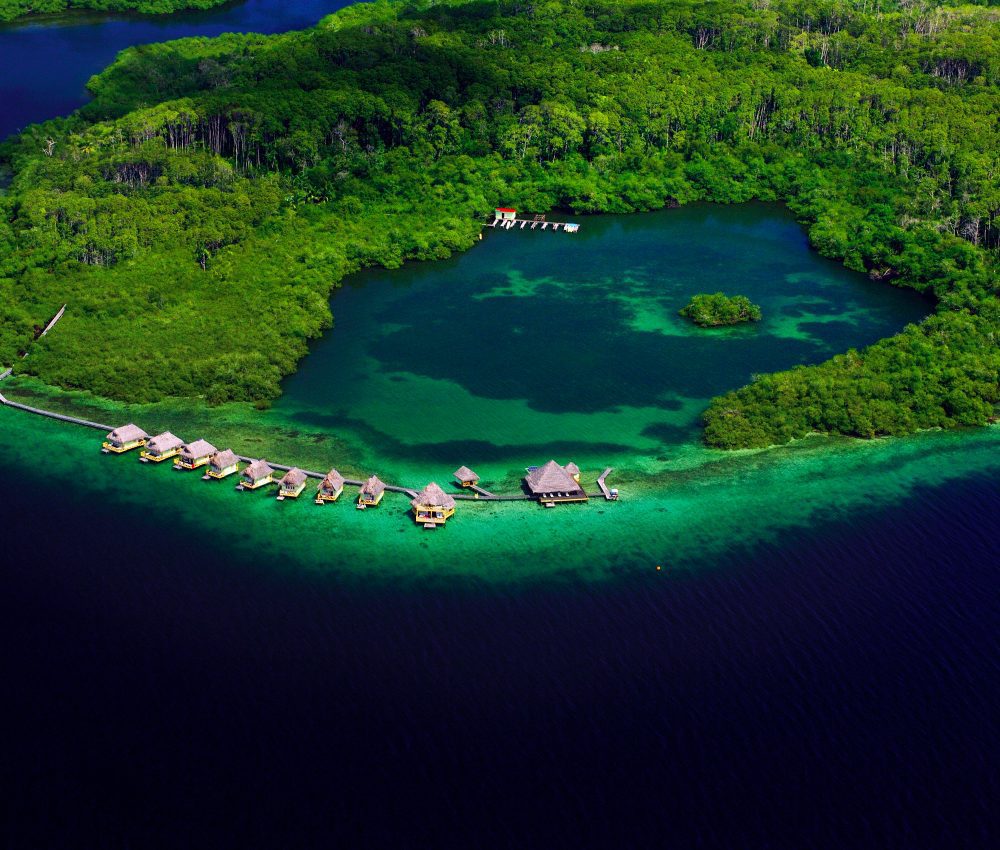
Case Studies & Articles
International Women’s Day 2024: Inspiring Inclusivity, Elevating Women’s Voices in Travel and Tourism
The Bushcamp Company
FINN Partners to Support Ukraine during ITB Conference in Berlin
Expert Guide to Travel Trends this Global Tourism Resilience Day
Business Iceland
FINN Partners Announces Key Leadership Changes: Amy Skelding Promoted to Managing Partner and UK Travel Lead; Debbie Flynn Expands Role as Global Travel Practice Leader
FINN’s tourism practice spans three continents, including major media hubs in New York, Los Angeles, Hong Kong, Shanghai, London and Munich. And we offer a full range of travel agency marketing services, including:
- Public relations
- Branding and repositioning
- Issues management
- Digital and influencer marketing
- Trade relations & representation
- High-profile launches
- Event activations
Our B2B capabilities include economic development, MICE market promotion, cruise market and product development.
Travelers have countless options — so travel and tourism companies need a compelling message, clear market position, and engaging personality to stand out. We use detailed research and vast experience to help your company build its brand.
Driving traffic to your site takes relevant content that’s high quality. It has to be interesting, insightful, and trustworthy — and that’s what we deliver.
Your voice and tone have to be consistent, compelling, and always aligned to your brand values. We build communication strategies that strike that tone — and, if needed, we craft honest responses to protect your brand and give you peace of mind.
No matter the issue, political turmoil, industry challenges, or even complex social dynamics, we can help craft communications to successfully navigate you through.
We’ll rely on extensive research, best practices, and burgeoning trends to create a digital marketing plan customized to your travel and tourism marketing efforts. Our integrated approach will cover all your needs, from video content to social media.
Influencer marketing can be especially effective for travel companies and destinations, but it takes finding the influencer whose personality and style are the perfect fit. We have close relationships with numerous influencers who can help you hit your goals.
Travel and tourism companies, as well as destinations, can benefit greatly by having a strong, genuine, lasting relationship with the media. We’ll help you build that relationship, nurturing new networks and growing your brand with key audiences.
Navigating the ever-changing landscape of travel and tourism takes rock-solid research and insights. We have the expertise and resources to conduct market research and deliver insights on a global scale.

- Associations
- Consumer & Lifestyle
- Environment
- Financial Services
- Manufacturing
- Professional Services
- Purpose & Social Impact
- Sports Marketing
- Supply Chain & Logistics
- Sustainability & ESG
- Advertising
- Brand Strategy & Development
- Content Marketing
- Corporate Communications
- Crisis Communication
- Digital Marketing
- Employee Engagement
- Influencer Marketing
- Investor Relations
- Public Affairs
- Public Relations
- Publishing & Authors
- Research & Insights
- News & Insights
- Audiense-First SEO
- Buyer Personas
- Twitter Marketing
- Case Studies
- Why choose Audiense?
- Become an Affiliate
- Knowledge Base
- Audiense Status
- Audiense Security
- Product Portal
- Digital Intelligence
- · Audiense Insights
- Demand Intelligence
- Audiense Connect
- Tweet Binder
- Podcasts (EN)
- Audience First SEO (EN)
- Buyer Personas (EN)
- Casos de Éxito
- Por qué Audiense
- Programa de Afiliados
- Centro de Ayuda
- Estado de Audiense
- Seguridad de Audiense
- Portal del Producto
- Social Intelligence
- · TweetBinder

Share this post
How luxury travel brands are using UGC and influencer marketing to sell the finer things in life
Mar 9, 2023 12:22:44 PM --> March 09, 2023
We all enjoy the finer things in life. But with the current global economic downturn, how much are consumers really willing to spend on luxury travel in 2023?
Turns out, the future’s looking bright for the industry, with many people continuing to prioritise those once-in-a-lifetime vacations even if it means cutting back on day-to-day luxuries. At least, that’s what the latest data is showing us. Here’s the highlights:
- Trends are pointing toward people being willing to spend on the perfect vacation. According to one travel agency , more than 15% of bookings in January 2023 were worth more than £25,000 each, with several of their clients valued at between £50,000 and £100,000.
- The average booking value of luxury holidays was up 28% compared to the same period in 2022 , and top destinations for luxury travellers included Dubai, Maldives, Barbados, Mauritius, and Hawaii.
- Even on a tight budget, Gen X and baby boomers consider travel one of their top three priority purchases , actively choosing to cut back on spending elsewhere in their household budget to make their vacations possible.
- Luxury travel isn’t just about booking the swankiest hotel or hiring a flash rental car. Travellers want to make room for small luxuries on vacation . Consumers are spending more on experiences at their destination to treat themselves, including meals, shopping and leisure activities – the perfect opportunity for brands to upsell.
- If you read our February spotlight , you’ll know that consumers want to go big or go home, with premium adventures – think safari adventures, tropical destinations, and seeing the wonders of the world – looking to be a huge travel trend in 2023.
Surprised? So are we. But this presents a major opportunity. How can travel marketers overcome consumer hesitation and help sell more dream vacations and luxury experiences? What marketing tactics are luxury brands deploying to make this possible?
"Luxury is a very broad concept, it varies depending on the vision of each individual. There is not only the classic luxury of premium accommodations but a unique or an authentic experience, more tailored and personalised. Hospitality companies, such as Marriott or Accor, adapt themselves to those views by developing specific brands to cover all the range from luxury to premium to create a perfect experience for each of their publics and their approach to luxury." – Andrea Trillo , Global Marketing Director at AIRE Ancient Baths Group.
In this month’s spotlight, we’re examining the luxury travel industry. We’ll explore what type of consumer makes up the luxury travel audience, what they’re interested in, and how brands are using different marketing tactics, including influencer marketing, to sell the finer things in life. Grab a cup of coffee and let’s jet!
Who makes up the luxury travel audience?
We wanted to understand what the typical consumer looks like. We wanted to answer questions such as: What experiences are they interested in? Which luxury brands do they currently follow? What drives them to make purchase decisions and how are they spending?
To help us answer these questions, we built an affinity report based on consumers who follow a range of luxury brands including InterContinental, Waldorf Astoria, Marriott International, Four Seasons, Shangri-La and others. We then cross-referenced this with specific behaviours and interests such as an interest in luxury travel. We applied this criteria across our wide range of available platforms, including Meta . Explore the full report here .
Looking broadly at our audience of luxury consumers, we can see that both men and women enjoy the finer things in life, with an almost 50/50 split.
While younger consumers do spend on luxury travel and experiences, it does tend to skew older, with the majority of this audience aged between 25 and 44, but the audience with the most spending power being 35 plus. The majority of this online audience are based in the US, but we also see that luxury travel is of interest to consumers in India, Indonesia, Brazil and other countries consisting of high-net-worth individuals in Saudi Arabia, the UAE and China.
While we can make general assumptions about the entire audience based on this, as our regular readers know, your audience is not a monolith . So, we’ve broken down our luxury travel consumers into three bite-size segments to help us drill down into individual interests.
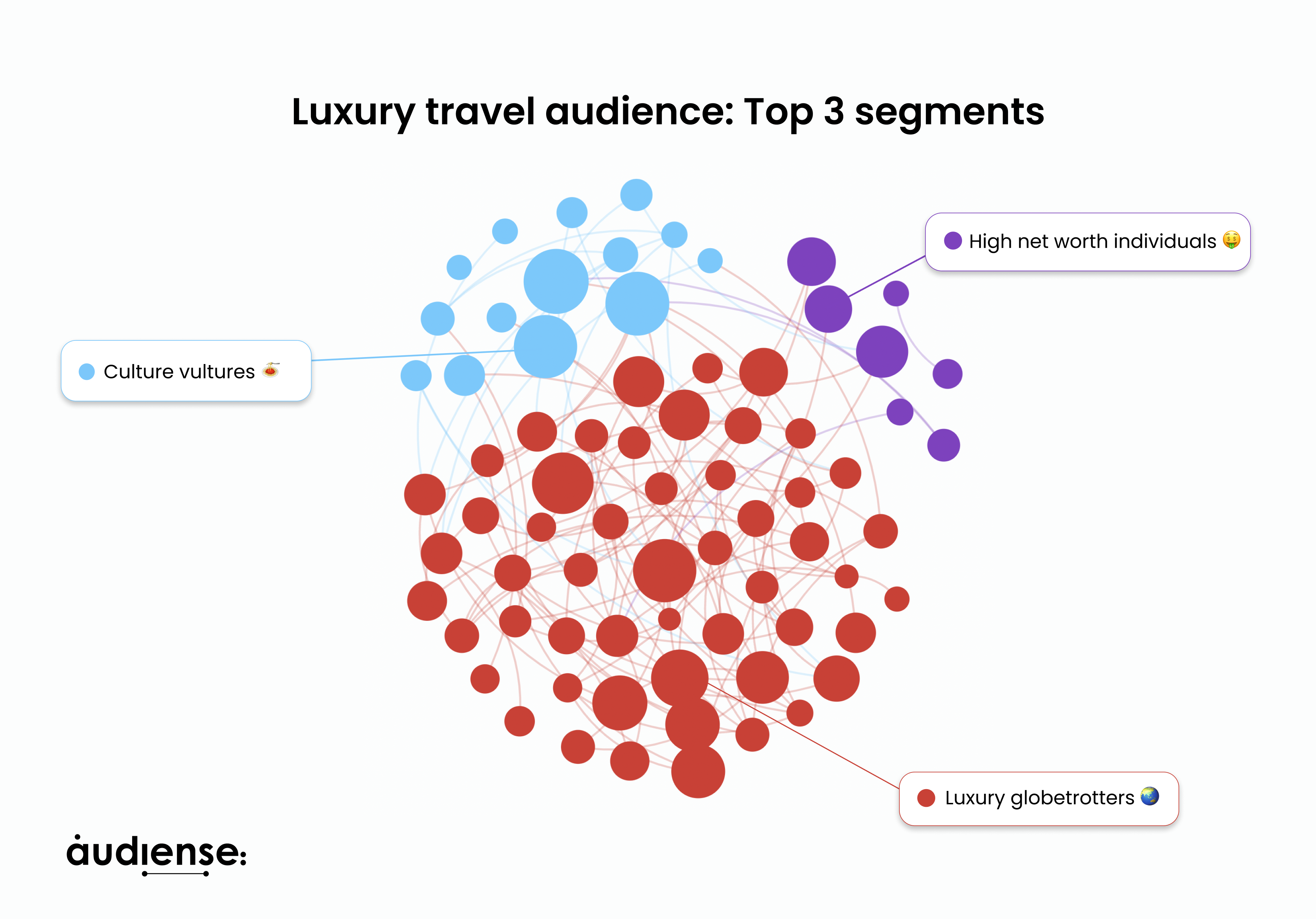
Luxury globetrotters 🌏
- This segment of our luxury travel audience is all about the destination! These consumers love to explore, and international travel is their number one priority when it comes to spending those valuable vacation days.
- Travelling the world knows no age or gender. This audience is split pretty much 50/50 between the genders and the most active luxury traveller is aged between 35 and 64.
- Interestingly, our luxury globetrotters aren’t looking for just one kind of experience. They’re interested in flying to international destinations, taking the road trip of a lifetime, ecotourism, and luxury cruises. Their travel choices are inspired by books, TV and movies.
- Looking more widely at what influences their purchase decisions, we see a whole range of travel accounts appearing in their top influencers and brands including Travel Weekly, eGuide Travel, AP Travel and one of the world’s largest travel events, World Travel Market. They’re clued into top travel accounts, and they consult them when researching.
- Digging into their mindset, while brand name is their second top purchase influencer factor, friends and family also play an important role in their decision making. Which means if you can tap into word-of-mouth in your marketing, you’ve got a better chance of grabbing their attention.
High net worth individuals 🤑
- We’ve touched on high net worth and ultra-high net worth individuals previously on our blog, and given our topic today, it’s unsurprising to see them appear prominently in our audience segments for the luxury travel market.
- Our high-net-worth individuals are looking for that perfect combination of beach, music, city, business and shopping opportunities when they’re planning their luxury holiday. That said, they’re also hugely interested in the detail and want their experiences to be as frictionless and personalised as possible.
- Perhaps of most interest for travel marketers, this segment are equally as likely to be travelling for business as they are for pleasure. But that doesn’t mean they’re not interested in small luxuries to make their time away from home worthwhile. For example, consider digital nomads, they want to be able to enjoy the destination while also working flexibly.
- When we delve into the top influencers and brands for this segment, it’s clear that it’s not just luxury travel they care about. Luxury brands such as Vogue, Chanel, Dior, Louis Vuitton and more all appear prominently. We also see shopping appearing in their top three interests, alongside travel and finance.
- So, what influences their buying decisions? According to our IBM Watson insights, this segment is likely to be helpful, social and expressive. This makes friends and family an important influence on their purchases. That said, social media and online ads also play an important role in helping them make purchase decisions.
Culture vultures 🍝
- Finally, we have our culture vultures. They love to travel just as much as our globetrotter’s segment, but their choices are driven by local culture, art, wine and food, as well as experiential activities.
- Where this segment differs from the others is their values-driven approach to travel. They’re keenly interested in sustainability , wellness and ethical tourism. This is reflected in the influencers and brands they follow, with American Red Cross appearing in their top five accounts.
- While our culture vultures enjoy spending money on luxury experiences, they’re partial to a bargain. They’re very interested in discounts and promotions offered by luxury travel brands, as this means they can stretch their budget even further.
- They’re clearly big foodies. Food Network, NYT Cooking and Food, LA Times Food, Saveur and Bon Appétit all appear in their media affinities. We also see their interest in arts and culture shining through, with New York Times Arts and the Guardian appearing as well.
- If you want to reach this audience, pay attention to where they’re spending time. Medium and Pinterest both appear as top social networks, alongside Twitter. In fact, our culture vultures are three times more likely to use Medium and Twitter than the general public.
How luxury travel brands are tapping into consumers
Based on our data and the wider travel trends, it’s safe to say that luxury travel is thriving. When planning B2C campaigns, marketers need to factor in the mindset and behaviours of this audience. For example, luxury travellers expect premier experiences, and they won’t settle for anything less. Here are four ways luxury travel brands are tapping into consumers.
Put UGC at the heart of your strategy
One of the strongest marketing tools at the luxury travel industry’s disposal is user-generated content (UGC). The ability to influence the creation of, and repurpose, authentic and organic social media content can be hugely influential in reaching more consumers.
Why? Because travellers are increasingly relying on their smartphones when it comes to making purchase decisions. According to Skyscanner , three out of four UK consumers are using their mobile devices to plan their trips at work, at the pub, and even while already on holiday. Plus, one in two people say that social media influences where they’ll go next.
Conrad Hotels and their Instagram Butlers campaign is a sterling example of putting UGC at the heart of your marketing strategy. Their Maldives property perfectly tapped into word-of-mouth by deploying social experts to help travellers capture picture-perfect moments in their little slice of paradise.
View this post on Instagram A post shared by Conrad Maldives Rangali Island (@conrad_maldives)
Their butlers took guests on Instagram worthy experiences, sharing iconic spots such as the world’s first undersea restaurant, and going on special tours. Plus, they could advise on the best time of day to take sunset selfies and show them the perfect positions for a sun-dappled yoga pose.
View this post on Instagram A post shared by James | UK Photographer (@jamesrelfdyer)
Not only did this campaign add a little something extra to their guest’s vacation, it allowed them to capture likeworthy moments that would help spread the reach of the Conrad Maldives and bring more visitors in the future.
Offer personalized service
Providing premier experiences relies on understanding your customers on a deeply personal level, enabling you to offer personalized service. Bespoke travel agency Travel Edge tapped into this desire for bespoke service with a consumer facing campaign that promised to deliver exceptional personalization and customer care throughout the travel experience.
How did they deliver on this? They launched a new web platform which allowed their advisors and concierge team to support clients on a 24/7 basis, providing access to a wide range of exclusive properties, experiences, insider perks and amenities – perfectly personalized to the traveller’s needs and wants.
View this post on Instagram A post shared by Travel Edge | Travel Agency (@wearetraveledge)
Given that this was launched post-pandemic, this gave them a competitive edge in a hesitant consumer marketer where travel restrictions made vacations a little more chaotic than usual. Their platform also showcased curated itineraries to encourage consumers to get in touch with one of their team and start planning their ideal getaway.
Executive VP Gavin Miller said , “Our new website is the first step in ensuring travellers get access to this higher standard of service. By the end of this year, that’s where they’ll find a wide range of curated travel experiences to aid their decision making and connect with the right expert for them—someone who listens, who is knowledgeable, and who can offer thoughtful suggestions for creating a truly personalized travel experience.”
Let influencers speak for you
If you don’t have the time or capacity to help your customers generate UGC, then partnering with the right influencers is definitely the way forward. Influencer marketing campaigns are particularly effective within the affluent travel sector, given how much power word-of-mouth recommendation has over each of our segments.
Instagram is a particularly powerful platform for influencer marketing campaigns, but any visual channel is helpful, with YouTube and TikTok influencers quickly gaining massive followings. Micro-influencers can also play an important role in generating attention for luxury travel brands, as their content often comes across as more authentic and trustworthy.
The Safari Collection and their Giraffe Manor property is a particularly inspirational example of influencer marketing. The Safari Collection comprises of four boutique properties spread across Kenya, focusing on high-end, sustainable tourism.
View this post on Instagram A post shared by Giraffe Manor Hotel & Shop (@thegiraffemanor)
They teamed up with multiple Instagram micro-influencers in the luxury travel space to promote the resort to their ideal audience, high-net-worth and ultra-high-net-worth consumers. They worked with influencers such as blacktravelpasspor t and girlstravelmagazine to create adorable content with the resort’s famous giraffes, showcasing just a few of the many attractions at the resort.
View this post on Instagram A post shared by John O'Ceallaigh (@luxury_travel_editor)
This clever influencer marketing campaign helped spread the word about Giraffe Manor further, faster, by highlighting the unspoilt beauty of the resort and its five-star credentials. The million-dollar question is, how can you identify these perfect influencers? In addition to being able to identify audiences and break down into actionable segments, Audiense is able to help you find the most influential accounts in your chosen industry to help you reach more consumers.
Key takeaways
We’ve covered a lot of ground today, so let’s take a moment to remind ourselves of the key takeaways for luxury travel brands.
- Put UGC at the heart of your strategy – Word-of-mouth is incredibly important to the wider luxury travel audience as well as the individual segments. Putting UGC at the heart of your marketing strategy allows you to reach more consumers with authentic, organic content, and can add a layer of creativity to your campaigns.
- Offer personalized service – Luxury travellers expect premier service and exceptional experiences. The only way to achieve this is to be as personalized as possible, in your customer approach and your marketing campaigns. Use audience intelligence to reveal hidden insights about your customers and create more bespoke experiences.
- Let influencers speak for you – You can use this alongside UGC or in place of, partner with the right influencers and let them do the talking. Influencers can give your brand reach and authority you might struggle to achieve alone.
Ready to take the next step in audience intelligence for your marketing? With tools like Audiense , conducting in-depth audience analysis and discovering actionable takeaways makes creating tailored marketing strategies easier than ever.

Related articles
Life’s a beach: how marketers are bringing a breath of fresh air to the travel industry, it’s time for a reset: how to create demand for social insight, ️ cyber monday: discovering the online consumers.
- Brochure Download
Master marketing for tourism to enter a world of opportunities
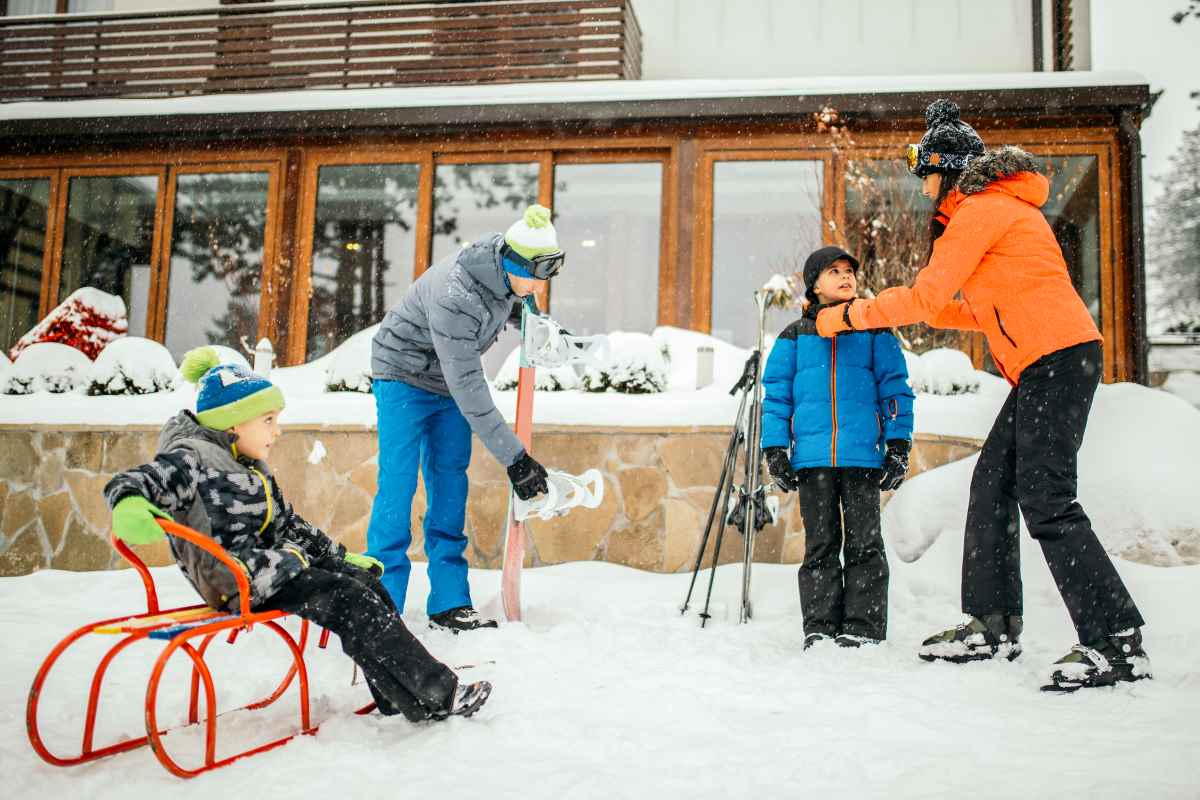
Marketing is a key part of just about every industry these days. Companies must engage customers to sell products and this is a vital part of tourism, where marketing teams aim to attract visitors to a certain destination, region or resort. If you’re looking at different hospitality careers , enjoy travel, and have an interest in marketing, tourism marketing could be the right choice for you.
In this article, we’ll discuss what marketing for tourism is and some of the main strategies that you need to learn about so you can help guide a company to success. We’ll also go over how you can prepare for a career in marketing for hospitality and tourism by getting a respected hospitality degree .
Definition of tourism marketing
Tourism marketing is all about the process of creating and delivering messages that influence the travel decisions of consumers. It includes a wide range of ways to connect with potential customers and encourage repeat business. This field is evolving all the time and marketing for travel and tourism now has a major digital element as well as still focusing on traditional marketing methods. Marketing features in almost every hospitality career, including resort management and luxury management .
Purpose of tourism marketing
Put simply, tourism marketing aims to encourage people to visit a certain destination. You’ll often find tourism marketing also focuses on particular services, including hotels, airlines, attractions, and tours. For example, there are plenty of marketing experts in the hotel industry who work for resorts or hotel chains, helping to improve brand reputation and name appeal, as well as drawing in more customers, ultimately increasing revenue.
Types of tourism marketing
There are many strategies you can adopt in marketing for travel and tourism. Some of the main tourism and hotel marketing strategies include:
- Traditional marketing avenues, such as advertising, public relations, and sales promotion
- Digital and social media marketing strategies that use online channels to reach and engage with potential visitors
- Destination and experiential marketing strategies, which focus on creating memorable experiences for visitors
- Relationship-based marketing strategies that build long-term relationships with customers
- Return on investment (ROI) strategies, which measure the effectiveness of tourism marketing campaigns
Traditional marketing strategies
Here are some of the most common traditional marketing strategies deployed in tourism:
- Outbound marketing: focuses on ways to get messages out, such as via billboards or flyers
- Direct mail: as it sounds, this involves sending promotional material such as brochures directly to potential clients
- Public relations: focuses on how the company is viewed by consumers and is used to create buzz about the business, often through the media
- Partnerships: if your company can create a partnership with another business that complements your aims, you can work together to promote both businesses. In tourism, this might mean hotels working with spas, restaurants, or travel agencies.
Digital and social media marketing strategies
Technology and social media now play a major role in any modern tourism marketing strategy, so you need to make sure you use every effective marketing channel you can. Hospitality digital marketing includes these methods:
- Content marketing: encompasses creating blog posts, landing pages, podcasts, videos, infographics, and any other content that can be put online to make people more aware of your brand
- SEO: Search Engine Optimization is all about making sure your company’s content appears at the top of search engine rankings to help build awareness and engage more customers
- Social media marketing: a large part of marketing now includes making sure you have a tailored approach for each type of social media platform your target market uses. Having a strong online presence is vital for modern marketing
Destination and experience-focused marketing strategies
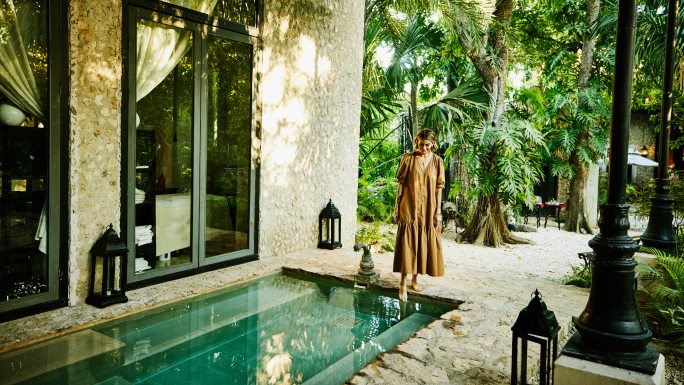
Destination marketing is all about advertising a particular place, such as an area, country or hotel. This often focuses on the special experiences you can have if you visit the destination. Some of the main strategies for enticing visitors include:
- Strong visuals: tempting and evocative images can help create an emotional response that appeals to potential customers
- Focus on your unique selling points: if you’re advertising a particular location, you need to consider local competitors and show what makes you stand out.
- Use demographics : Picking the right demographic for your area lets you know who exactly you are targeting with your adverts.
Relationship-based marketing strategies
Relationship marketing is all about forming good relations with long-term customers. This is particularly important in high-end marketing , where there are significant expectations from guests who often demand a personal relationship with your brand. Aspects to focus on include these.
- Customer experience: Providing an excellent customer experience can help build customer loyalty and reminding customers of this makes them revisit your company again.
- Surveys: Customer feedback can help indicate where marketing has been successful or where it needs to be refocused. Customers want to know that companies are listening to them, as this makes them feel more valued and that their opinion counts.
- Loyalty programs: Rewarding repeat customers will help strengthen the relationship with your brand, making them more likely to choose you.
Return on Investment (ROI) strategies
ROI marketing strategies are all about making sure your marketing budget is being used properly and the company extracts maximum revenue from the smallest outlay. ROI strategy tools include:
- Analysis: You need to monitor the success of different marketing techniques to ensure that you have optimal ROI
- Forecasts: Before starting a new marketing campaign, you should always forecast what success and predicted revenue will look like.
Target audience for tourism marketing
Identifying the right target audience will help you appeal to customers more effectively and drive revenue generation.
Finding the target audience for tourism marketing means identifying the group of people who are most likely to travel to a particular destination or region or are most likely to use your tourism company’s services.
Identifying the ideal customer personas
Defining the right target audience also involves understanding who your customers are and what they want. This includes analyzing factors such as their age range, interests, and income. Any information you can gather about your ideal customers will help you better decide which services to offer and how best to market them. You can look at other companies that offer similar services and consider what their customer personas are, but be aware of how your company differs and what your unique selling point is.
Evaluating current customers’ needs
Successful marketing for travel and tourism also means you have to be aware of what your current customers need. Developing a deeper understanding of the needs wants and motivations of existing and potential customers will help ensure you are offering them the right products or services. Evaluating sales data can help with this, as can market research, which can be carried out through surveys and direct feedback from customers.
Understanding the motivations behind travel decisions
It’s important to find out the reasons why people are traveling so you can target your marketing efforts accordingly. Knowing whether people are traveling for business or are looking for family holidays, luxury breaks, adventure holidays or trips linked to events will help you focus marketing efforts for optimum impact.
Developing a successful tourism marketing strategy
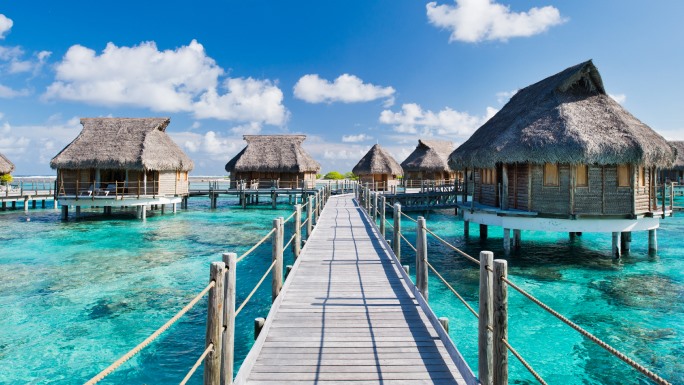
A successful tourism marketing strategy needs to be well-targeted and relevant to be effective, which means using all the information you can gather about your target customers.
Creating relevant messages for your target audience
The key points to consider when trying to craft the perfect marketing messages are:
- Knowing your target audience
- Understanding the challenges and pain points of your audience. This will show you what issues will grab their attention
- Highlighting your company’s unique values and traits and showing what sets your company apart from competitors
- Demonstrating to the customer how your company meets their needs
- Keeping your marketing clear and to the point
- Using familiar language that aligns with your target audience’s conversational way of speaking. This will help them feel more relaxed and comfortable when dealing with your company
- Recognizing how to appeal to both emotion and logic in your target audience to encourage consumers to become loyal.
What are the current trends in tourism marketing?
Your marketing strategies have to stay up to date so you don’t fall behind the competition. Some of the major current trends in tourism marketing include:
- Demonstrating the sustainability and eco-friendly nature of tourism options
- Personalized marketing, which shows how your offerings relate directly to what the customer wants or needs, such as targeted promotional offers.
- Using social media, video content strategy, and other digital marketing for tourism to make attention-grabbing messages and engage with different consumer segments.
Choosing the right master’s program for career advancement in tourism marketing
If you want to get ahead in marketing for the tourism and travel industry, advanced study is a great way of improving your prospects. Studying for a master’s degree at a respected hospitality management school can give you the skills, knowledge, and experience you need to thrive in tourism marketing. You should pick a school that offers professional internships at leading companies so you can learn the practical side of how to become a marketing manager with some of the best in the business.
What skills and qualifications are desirable for marketing roles in the hotel industry?
To have a successful career in marketing for the travel and tourism business, especially if you want to work for some of the world’s top hotel brands , you’ll need a variety of skills. Those you need to work on include:
- Great communication, both written and verbal
- Creativity to help you come up with great marketing ideas
- Ability to stay up to date with current trends such as SEO marketing
- Team leadership, including setting goals and encouraging success in your team
- Analytical skills to help you see what the most successful marketing strategies are
- Teamworking to help you work well with other employees
- Multi-tasking to help you handle the fast-paced world of hospitality.
It can also help if you get a good degree that gives you internationally respected qualifications, as this will help you stand out from the competition when applying for roles at the world’s best hospitality companies.
Combining challenging internships and tailored support from industry experts, our master’s in tourism will set you up for a hospitality marketing career anywhere in the world.

Career opportunities in tourism marketing
With a recognized hospitality qualification, there are many career options open to you in tourism marketing, including:
- Marketing Manager
- Digital Marketing Specialist
- Brand Manager
- Public Relations Manager
- Market Research Analyst
- Sales and Business Development Manager
- Destination Marketing Manager
- Event Marketing Manager
- Hotel Revenue Manager
- E-commerce Manager.
It’s difficult to overstate the importance of marketing in tourism because, as with many other industries, it’s vital for success. There are many marketing strategies used in the tourism sector, including traditional methods, digital marketing, and destination-focused campaigns. You can expand your skills and knowledge with access to vital industry networks through a master’s degree in tourism from a hospitality school recognized for excellence. Start your journey to success in hotel management and marketing with Les Roches today.
Photo Credits Main Image: miljko/E+ via Getty Images
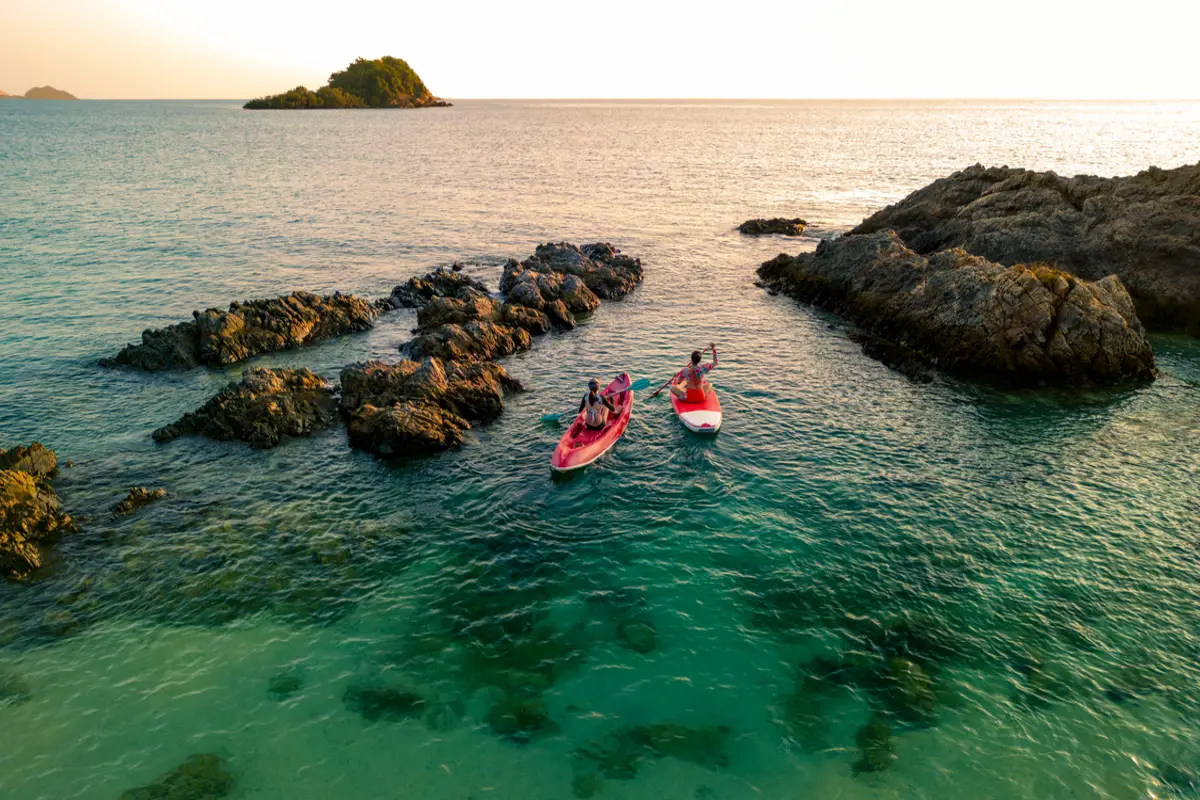
- Industry News
From arranging flights and accommodations to recommending destinations and activities, travel consultants offer valuable expertise and personalized service to meet…
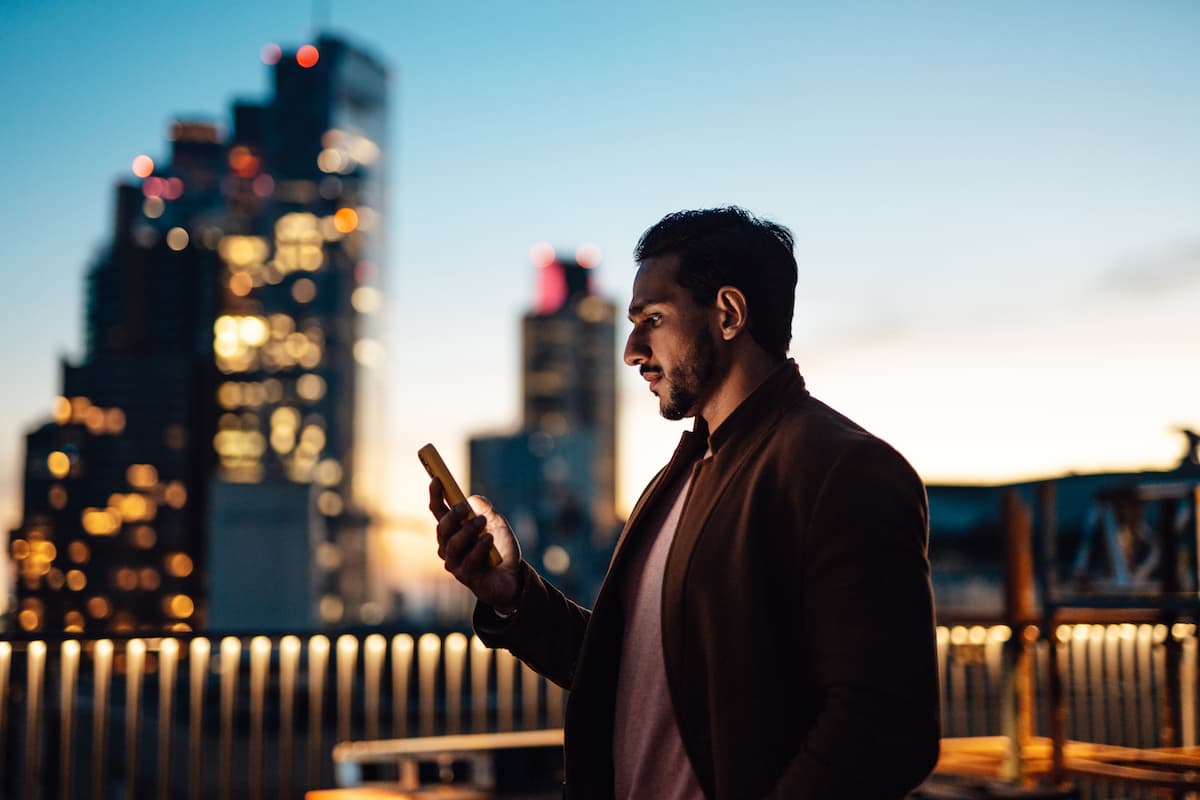
Whether you aspire to become a corporate leader, entrepreneur or industry innovator, obtaining a business degree provides a solid foundation…

A brand is more than just a logo or a product; it’s the essence of what a company stands for…
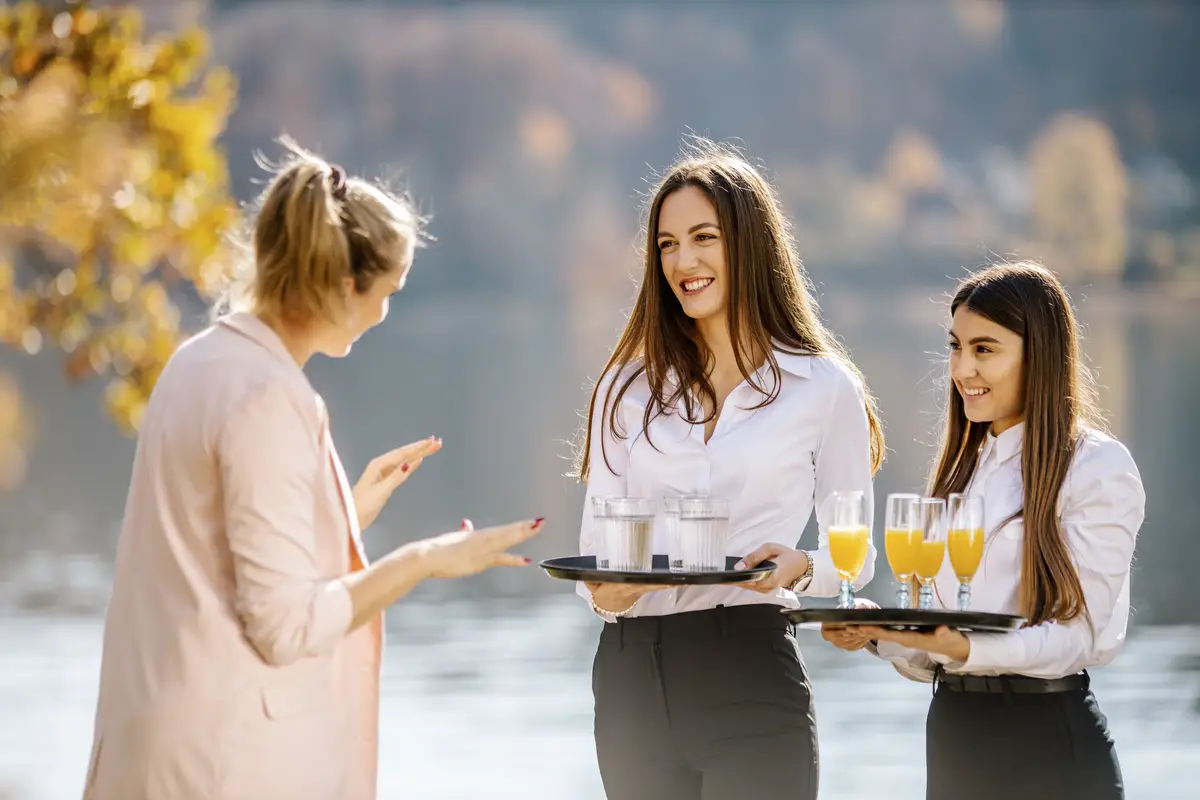
The global event management industry is a vibrant and evolving sector that attracts a lot of people. This growth is…
Welcome to Les Roches
Privacy overview.
- Auction Bids
- Auction Watchlist
Travel news, tips, reviews & videos of luxury hotels to help plan your vacation.
Bid & win a luxury hotel stay or travel item for your next vacation.
- Accessories
- Accommodation
- Experiences
Book a room with us for complimentary upgrades & VIP benefits like breakfast for two at your favorite luxury hotel.
- Find Out More
Recents Clear
Review: Domes of Corfu
popular post today
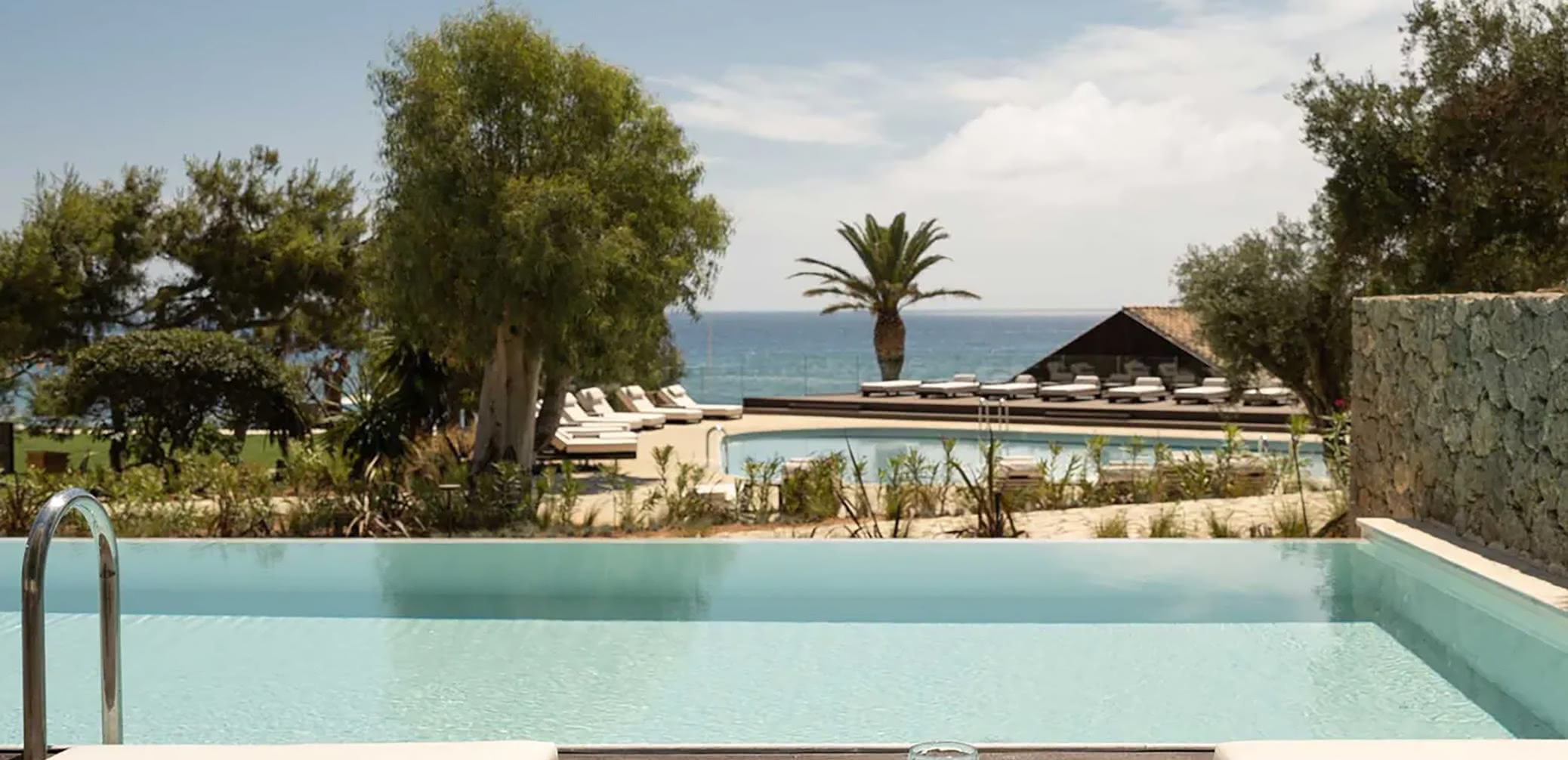
Domes of Corfu
Located in greece.
Nestled beside the renowned Glyfada beach, recognized with a prestigious blue-flag award, Domes of Corfu presents a sanctuary of luxury and serenity. Enveloped by verdant pine and cypress-clad hills, this luxurious family resort, now part of Marriott’s Autograph Collection, embodies exclusivity. It delivers an unparalleled standard of hospitality, granting breathtaking vistas of the Ionian Sea and its enchanting sunsets.
This hotel falls within the Marriott Bonvoy umbrella as part of their Autograph Collection, and it is one of the best Marriott hotels in Corfu.
The Haute Living Selection is the epitome of luxury, offering an exclusive experience that blends luxury with authentic Greek living. Reserved for VVIPs, this concept provides bespoke itineraries, premium accommodations, personalized services, and elite-tier perks. From exceptional dining options to indulgent spa treatments, HLS caters to every expectation.
Domes of Corfu is situated on the beautiful Glyfada beach, which has earned the prestigious blue-flag status for its clean and pristine conditions. This luxury family resort is located on Corfu, one of Greece’s lush Ionian Islands. It is surrounded by the dense greenery of hills covered in pine and cypress trees. The resort offers direct access to the beach and panoramic views of the Ionian Sea, making it an ideal spot for experiencing the area’s stunning natural beauty and captivating sunsets.
Domes of Corfu is conveniently located approximately 14 kilometers west of Corfu International Airport (CFU), also known as Ioannis Kapodistrias Airport. The journey from the airport to the resort typically takes about 20 to 25 minutes by car, depending on traffic conditions. The route passes through some scenic areas of Corfu, offering glimpses of the island’s varied landscapes, from urban views near the town to more pastoral and forested areas as one approaches the resort along the coast.
Style & Character
Boasting a bohemian-inspired ambiance, Domes of Corfu provides a sanctuary where families can unwind and create memories. With crystal-clear waters just steps away, guests can bask in unforgettable summer days, while evenings can be enjoyed with cocktails and fiery sunsets in adult-only zones.
The architecture of the Domes of Corfu stands as a testament to the emblematic design, harmonizing bold spaces with unspoiled landscapes and sweeping ocean views.
Service & Facilities
While on vacation, children can engage in enriching activities at the Montessori-inspired creche and dedicated kids’ and teen zones. At the Signature Soma Spa, guests can rejuvenate their bodies and minds through ancient rituals. The resort’s proximity to the UNESCO World Heritage old town of Corfu invites the cosmopolitan explorer to explore.
There’s a whole host of amenities to enjoy, including a gym pavilion, outdoor main pool, adults’ pool, and kids’ splash pool. Meeting spaces, complimentary Wi-Fi, and a free full American and hot breakfast ensure a seamless and enjoyable stay.
Each retreat and suite exude elegance, offering a range of amenities and options to cater to couples and modern families of all sizes.
Crafted in a soothing terracotta and beige color scheme, the luxurious open-plan suites, available with one or two bedrooms, feature either king-sized or twin beds. Each suite includes an en suite bathroom adorned with a unique hollow rock or marble sink and a walk-in shower.
From the comfort of your own balcony or terrace, you can choose to soak in views of the serene Ionian Sea or the majestic mountains, offering a peak living experience that blends aspiration with tranquility.
Food & Drink
Dining at the resort is a feast for the senses, featuring a focus on fresh ingredients, innovative Greek and international dishes, and traditional local favorites. From the Agora Buffet Restaurant, which draws inspiration from ancient Greek customs to the sophisticated offerings at Frourio, guests are treated to a culinary odyssey that celebrates the rich flavors of the island.
The Spianada cultural hub acts as an open-air marketplace where visitors can engage in pop-up shopping, savor street food, explore art, and participate in cultural festivities. Meanwhile, the Nkaleri Lounge Bar offers a selection of premium spirits and expertly crafted cocktails. Guests are greeted at the Xenia Lobby Bar with a unique drink that showcases local tastes, and the Ammos Beach Bar enhances the beachside ambiance with cool drinks and spectacular views.
Domes of Corfu is more than just a luxury resort; it is a destination where guests can escape the ordinary and immerse themselves in a world of unparalleled beauty, comfort, and hospitality, creating memories to last a lifetime.
Copyright Luxury Travel Diary 2014 - 2024. Duplication outside of luxurytraveldiary.com is forbidden.
Note: Benefits & upgrades subject to availability. Benefits offered correct at the time of writing. Terms & conditions apply. Enquire for more information. Benefits offered correct at the time of writing but may be amended at discretion of the vendor. Posts may be sponsored by the proprietor or brand being appraised. All opinions remain our own & are in no way influenced.
Featured By

Join our mailing list
Check your inbox or spam folder to confirm your subscription.
Receive news on auctions & our most popular posts. Opt out at any time. See our Privacy Policy for details.
Plan Your Trip to Elektrostal: Best of Elektrostal Tourism
Essential elektrostal.

Elektrostal Is Great For
Eat & drink.

- Apelsin Hotel
- Elektrostal Hotel
- Apart Hotel Yantar
- Mini Hotel Banifatsiy
- Restaurant Globus
- Amsterdam Moments
- Cafe Antresole
- Viki Cinema
- Statue of Lenin
- Park of Culture and Leisure
- Solar Eclipse 2024
The Eclipse Could Bring $1.5 Billion Into States on the Path of Totality
T he total solar eclipse passing through parts of the U.S. on April 8 stands to have a major economic impact on cities across the country as stargazers flock to the path of totality.
Factors including the date of the eclipse and the number of states in the path of totality means that millions of people will have the opportunity to view the event— and that the cities hosting them could see a combined $1.5 billion injected into their states’ economies.
“That number will include lodging costs for visitors coming from out of state or far away parts of their own state, as well as gas costs and food costs,” says Bulent Temel, assistant professor of practice in economics at the University of Texas at San Antonio, San Antonio, who performed the calculations to arrive at the $1.5 billion figure.
One to four million people are expected to travel for the eclipse, according to Great American Eclipse , an informational site that tracks solar eclipses around the world. The Federal Aviation Administration (FAA) estimates the days leading up to the eclipse will be some of the busiest travel days of the season, with 50,670 flights on Thursday, April 4 and 48,904 flights on Friday, April 5. That means the spending will be spread out: “[The eclipse] is on a Monday, so you might have folks coming Friday, Saturday, Sunday, spending a few days somewhere ahead of the event,” says John Downen, Director of Impact Analysis at Camoin Associates.
Read More : How Cities Around the U.S. Are Celebrating the Eclipse
Many regions along the path of totality have spent months—if not years—preparing for the upcoming surge of visitors and money. Rochester, NY, is expecting 300,000 to 500,000 visitors across the nine - county Greater Rochester region. Local businesses have a slate of specials and planned events the weekend leading up to the event—including eclipse themed beers from local breweries and a three-day pass from the Rochester Museum and Science Center for visitors to attend a range of talks and performances.
The area’s tourism board says that some hotels have reported demand skyrocketing an average of 1200% for the four-day span leading up to April 8— unusual demand for a Monday in the region’s off-peak season.
It’s an economic boost that no amount of planning— or marketing—can replicate. “It’s a really great tourism opportunity,” says Shannon Ealy, Director of Communications and Marketing for the Greater Rochester Chamber of Commerce. “You can spend millions of dollars on media buys to get our regional brand out there, but you can't exactly buy the sun and the moon crossing over us.”
Read More: See the 2024 Solar Eclipse’s Path of Totality
But unfortunate weather could still put a damper on things, especially for businesses that might be stocking up for an influx of visitors, since many eclipse chasers decide where to view the eclipse based on weather that can’t be predicted until the event draws closer. “Even a simple factor like a cloudy day could just compromise all these expectations quite a bit,” Temel says.
The real task for local business and tourism boards lies in converting one-time visitors into ones that return—without the promise of a solar eclipse. “Every single one of those visitors is a potential future visitor to the same area as well,” says Temel. “In the long run, the economic impact would be magnified quite significantly.
Adds Downen: “It definitely presents an opportunity, especially in smaller communities, to showcase themselves and hopefully capture some future repeat visitors.”
Read More : Where to Find Solar Eclipse Glasses—And Spot Fake Ones
Lebanon, Indiana, for example, is expecting its population to triple during the weekend before the eclipse. Joe Lepage, the city’s communication and community development director, says he hopes that the eclipse will change the way both locals and out-of-towners talk about Lebanon.
“We have a large business park, great hospitals, establishments where people can work, but actually staying and living in Lebanon has been difficult to sell.” he says. "It'll give people that are going back home a chance to visit and realize, ‘Hey, that little town is nice.’ But then our locals can see all the things they have in their backyard and realize, ‘Hey, my community is pretty special too.’”
More Must-Reads From TIME
- Exclusive: Google Workers Revolt Over $1.2 Billion Contract With Israel
- Jane Fonda Champions Climate Action for Every Generation
- Stop Looking for Your Forever Home
- The Sympathizer Counters 50 Years of Hollywood Vietnam War Narratives
- The Bliss of Seeing the Eclipse From Cleveland
- Hormonal Birth Control Doesn’t Deserve Its Bad Reputation
- The Best TV Shows to Watch on Peacock
- Want Weekly Recs on What to Watch, Read, and More? Sign Up for Worth Your Time
Write to Simmone Shah at [email protected]
We've detected unusual activity from your computer network
To continue, please click the box below to let us know you're not a robot.
Why did this happen?
Please make sure your browser supports JavaScript and cookies and that you are not blocking them from loading. For more information you can review our Terms of Service and Cookie Policy .
For inquiries related to this message please contact our support team and provide the reference ID below.
ELECTROSTAL HISTORY AND ART MUSEUM: All You Need to Know BEFORE You Go (with Photos)
- (0.19 mi) Elektrostal Hotel
- (1.21 mi) Yakor Hotel
- (1.27 mi) Mini Hotel Banifatsiy
- (1.18 mi) Elemash
- (1.36 mi) Hotel Djaz
- (0.07 mi) Prima Bolshogo
- (0.13 mi) Makecoffee
- (0.25 mi) Amsterdam Moments
- (0.25 mi) Pechka
- (0.26 mi) Mazhor
Recommended
Breaking news, bark air launches first luxury airlines for dogs — but charges $16k for ‘white paw service’.
- View Author Archive
- Get author RSS feed
Thanks for contacting us. We've received your submission.
Dog toy company BARK will launch a jet charter service that promises “white paw service” — though it will cost as much as $16,000 for a round-trip ticket for just one pooch and its doting owner.
Dubbed BARK Air, the company best known for its subscription BarkBoxes filled with pet toys and treats, seeks to solve the problems that typically arise when humans travel with their fur babies.
Though smaller dogs can typically ride in a carrier placed under the seat in front of them, larger dogs must undergo what’s known to be the stressful experience of being put in crates in a plane’s cargo space.

“We are excited to take the insights we’ve learned over years to create an experience that is truly dog-first, which is drastically different from just accepting dogs — from the ground to the skies,” Matt Meeker, the co-founder and chief executive at BARK, said in a press release Thursday.
BARK Air’s first flight departs from New York’s Westchester County Airport to Los Angeles’s Van Nuys Airport on May 23.
Currently, there are only two flight routes available, both from Westchester County Airport to either Van Nuys Airport — which costs $6,000 one way for one dog and one human — or to London’s Stansted Airport — which goes for $8,000 one way.
Following booking, humans are connected with a BARK concierge assigned to collect information about their four-legged passengers to ensure the best possible experience during the long-haul flight.
But BARK Air won’t just be pet friendly — it will treat its four-legged passengers like first-class passengers, the New York-based company said.

On travel day, dogs and their owners are only required to show up at the airport 45 minutes ahead of their scheduled flight time “for a simple, efficient check-in process — no crates, no stressful TSA checkpoints,” per BARK Air’s website .
From there, concierges will bring the dogs aboard to a cabin prepared with calming aids such as music, warm lavender-scented refreshment towels, and pheromones — scents that mimic the natural chemicals released by animals that help them communicate — among other comforts.
Treats, noise-canceling ear muffs, and calming jackets will also be on hand as part of BARK’s “Dogs Fly First” flight prep, which ensures that each pooch is comfortable upon takeoff.

The dogs are offered a beverage at takeoff and descent to help their ears adjust to cabin pressurization.
“We believe this initiative will raise awareness of BARK’s mission in a cost-effective manner,” said Zahir Ibrahim, BARK’s Chief Financial Officer. “Given we are not committed to booking flights far in advance, we have a lot of flexibility to opportunistically charter flights during times of high demand.”
Users on social media, however, panned the sky-high fares.
“Was so excited for this but am mind blown at the $6k price tag. Hopefully y’all can make this much more affordable in the future,” one user commented on BARK Air’s Instagram post introducing the luxe airline.

“I would genuinely love to see the data that convinced you to believe $12K round trip tickets are a viable business model and one worth marketing to the general public,” another said.
A third said a $6,000 to $8,000 fare for just one way “is ridiculous.”
It wasn’t immediately clear which jet charter company BARK is partnering with for its pet-friendly trips.
The Post has sought comment from BARK.
Share this article:

Advertisement

IMAGES
VIDEO
COMMENTS
6. Luxury Travel Digital Advertising. Digital advertising is a requisite component of a marketing campaign. Placing ads in high-trafficked areas of the digital world - Facebook, Instagram, Twitter, Google, etc - can yield excellent results.Again, your digital advertisements need to mirror the luxury-oriented nature of your brand.
This program will introduce you to new marketing tools and innovative trends and technologies using a combination of practical and field-work learning. It will equip you with the knowledge, skills and abilities to devise and lead successful luxury marketing strategies - highly sought after by high-end tourism companies and premium brands.
Download your free digital marketing checklists and start validating your marketing like a pro. 4. Marketing Tips to Attract the New Luxury Travelers. It would be a mistake for a luxury hotel brand to use the same marketing strategy to draw in both luxury and budget tourists.
In a world where many people value exclusivity, quality, and status, luxury brands have carved out a unique niche for themselves. From designer fashion and jewelry to fine dining and travel, luxury brands are at the cutting edge of innovation and style. This innovation and style is often reflected in the content and strategies that luxury marketers employ.
Effective tourism marketing begins with a deep understanding of your target audience. To attract and engage potential visitors, it's vital to recognize their preferences and interests. Some are attracted to cultural heritage, while others seek vibrant nightlife or culinary experiences. To understand a range of demographics, conduct thorough ...
To get more insights in luxury travel and hospitality marketing, I spoke with David Nickel, co-owner of Jadewolf Marketing. With over 10 years' experience in digital marketing and luxury brand management, David has co-founded Jadewolf Marketing, a marketing agency specialising in data driven, direct marketing management for luxury travel brands.
Luxury Tourism Marketing 2022: 5 Keys to Sustained Growth. Without question, global travel has changed, from international travel destinations to Convention and Visitor Bureaus pivoting to address the pandemic. Yet as vaccines become increasingly available, many tourism leaders have been able to return to 2019 numbers and to even exceed them.
Luxury Adventure Travel Marketing. When it comes to luxury travel marketing, the right combination of strategy, storytelling, tactics and public relations is the key to success. Aventur Marketing has years of experience delivering results and growing bookings for premium tourism businesses.
Here are steps for success in marketing luxury resorts and hotels: 1. Define Target Market. The first step to any marketing campaign is to understand your audience. In this case, it's an affluent, wealthy person who enjoys travel for various reasons.
The luxury tourism market; Luxury marketing strategies; Case studies on luxury tourism; Understanding luxury consumers; Consumer behavior; About this book. Over the past two decades, through unprecedented levels of prosperity and changing values, luxury tourism has transformed into a new consumption pattern. This book analyzes the topic in ...
It is critical for luxury travel brands to be present throughout each of these four phases if they want to positively influence their customers' decisions. There are four essential travel phases that matter in the customer journey: Dreaming phase: I-want-to-get-away moments. Planning phase: Time-to-make-a-plan moments.
A big difference when it comes to mass-marketing vs luxury is also the level of personalization that technology allows. By working with a particular affluent individual or family for a long-time, a smart travel agency can collect a lot of information about their preferences, likes, dislikes etc. which is all extremely valuable data in itself.
There are many other trends that luxury travel sales and marketing teams have identified, naturally, ranging from the rise of multi-generational travel to the robust growth in river cruising, but those are sector and psychographic-specific. The 5 C's of Luxury Travel impact every travel vertical and every consumer. Introduction
We help travel agencies, cruise companies, hotels and resorts generate luxury travel leads and 5-star online direct bookings. We use digital advertising, content marketing, engagement tools and analytics in combination with luxury psychology, behavioral science and neuromarketing to attract, convert and engage affluent travelers for our clients.
As we progress into 2023, it is becoming evident that tourism is on track to recover thoroughly from the disruption following the pandemic lockdowns. As a result, and with the global economy recovering, health concerns diminishing and national borders re-opening up, the luxury travel industry is already optimistic about an imminent period of accelerated growth. […]
FINN Partners is a Travel, Tourism & Lifestyle Marketing and PR agency with global reach and services that include branding, repositioning, and issues management. ... Luxury Travel. Our award-winning work in luxury travel ranges from independent boutique hotels to private islands, from safari operators to highly ranked cruise companies, private ...
The requisite amenities of luxury hotels has long been focused on the room—free WiFi, linens with high thread counts, widescreen HD TV and premium liquors in the minibar. Now, however, hotels ...
Put UGC at the heart of your strategy. One of the strongest marketing tools at the luxury travel industry's disposal is user-generated content (UGC). The ability to influence the creation of, and repurpose, authentic and organic social media content can be hugely influential in reaching more consumers.
Definition of tourism marketing. Tourism marketing is all about the process of creating and delivering messages that influence the travel decisions of consumers. It includes a wide range of ways to connect with potential customers and encourage repeat business. This field is evolving all the time and marketing for travel and tourism now has a ...
Gov. Doug Burgum and the North Dakota Department of Commerce Tourism and Marketing Division, in partnership with AAA of North Dakota and the North Dakota Council on the Arts, presented the winning submissions from the 20th annual North Dakota Governor's Photo Contest at the 2024 North Dakota Travel Industry Conference.
Most Recent: Reviews ordered by most recent publish date in descending order. Detailed Reviews: Reviews ordered by recency and descriptiveness of user-identified themes such as wait time, length of visit, general tips, and location information.
Elektrostal Tourism Elektrostal Hotels Elektrostal Bed and Breakfast Elektrostal Vacation Rentals Flights to Elektrostal Elektrostal Restaurants Things to Do in Elektrostal Elektrostal Photos Elektrostal Map Elektrostal Travel Guide. Elektrostal Bed and Breakfast. Hotels.
If you're planning a stay at the Domes of Corfu. Contact our luxury travel concierge.Our agents will assist with your booking with a tailored personal service, upgrading your stay with room upgrades, complimentary breakfast, lounge access (where applicable), hotel credit, and other VIP benefits at most luxury hotels, including Four Seasons, Aman, Belmond, Hyatt, Ritz-Carlton, Marriott ...
A mix of the charming, modern, and tried and true. Apelsin Hotel. 43. from $48/night. Apart Hotel Yantar. 2. from $28/night. Elektrostal Hotel. 25.
The area's tourism board says that some hotels have reported demand skyrocketing an average of 1200% for the four-day span leading up to April 8— unusual demand for a Monday in the region's ...
US Senator Robert Menendez and his wife don't want jurors at their upcoming corruption trial to learn about the power couple's luxurious lifestyle that included cigars, handbags and jewelry.
Travel. Long-defunct Las Vegas Strip classic makes an unexpected comeback. Las Vegas has become the land of big-name headliners, and certain types of entertainment have disappeared.
Art MuseumsHistory Museums. Write a review. Full view. All photos (22) Suggest edits to improve what we show. Improve this listing. Revenue impacts the experiences featured on this page, learn more. The area. Nikolaeva ul., d. 30A, Elektrostal 144003 Russia.
One-way tickets start at $6,000 to Los Angeles and max out at $8,000 to London, meaning round trips go for as much as $16,000. Users on social media balked at the price tag.